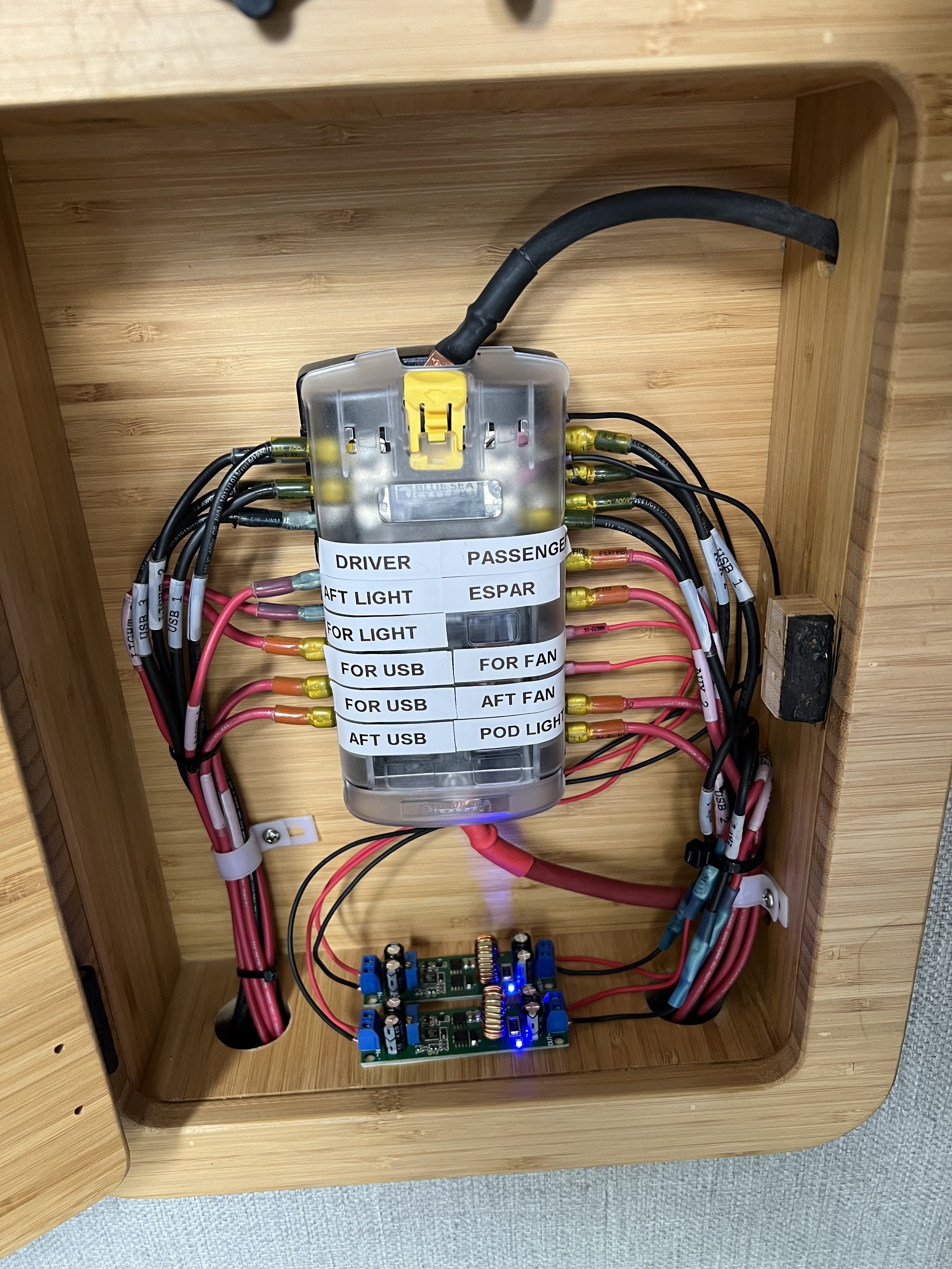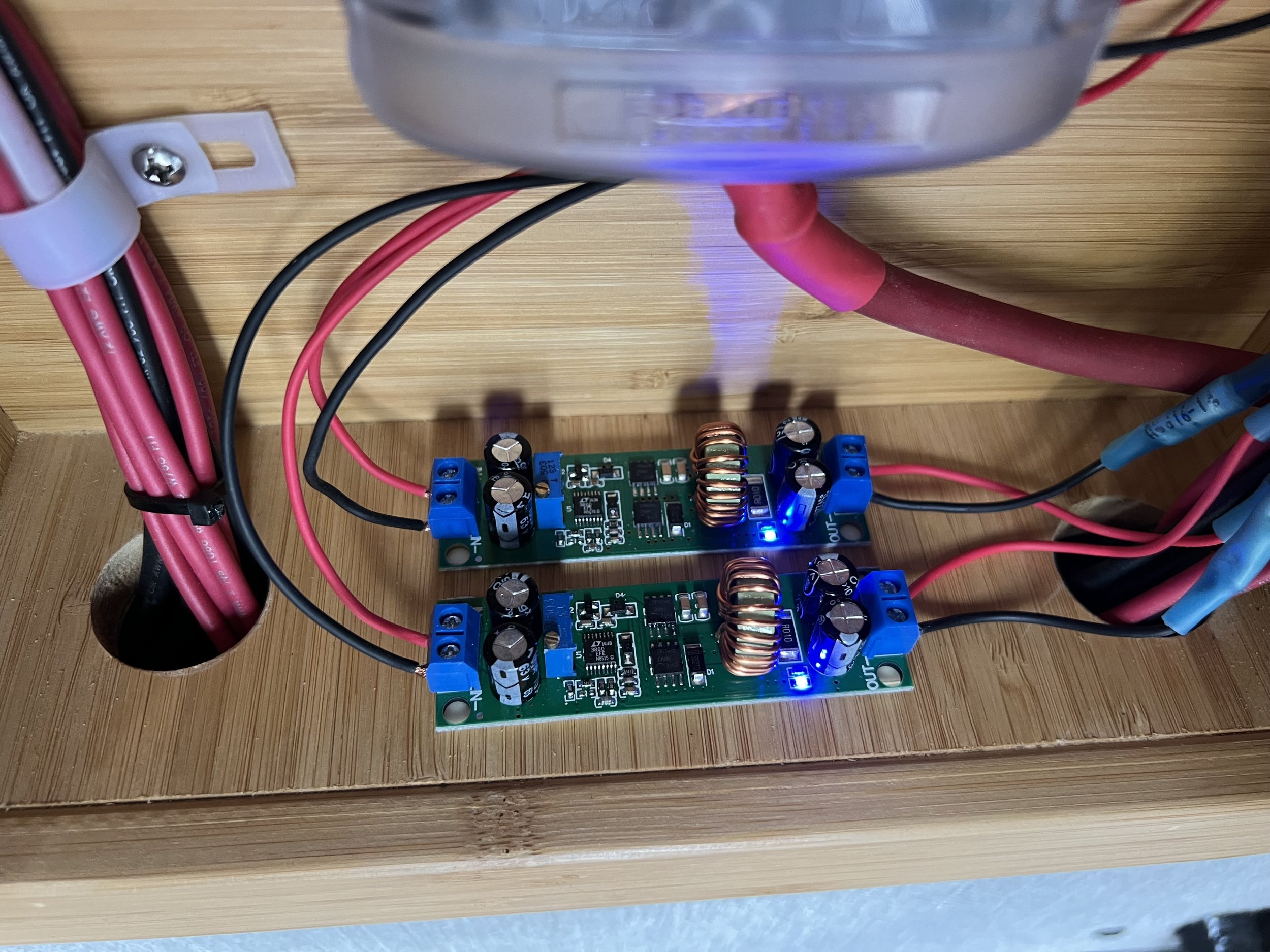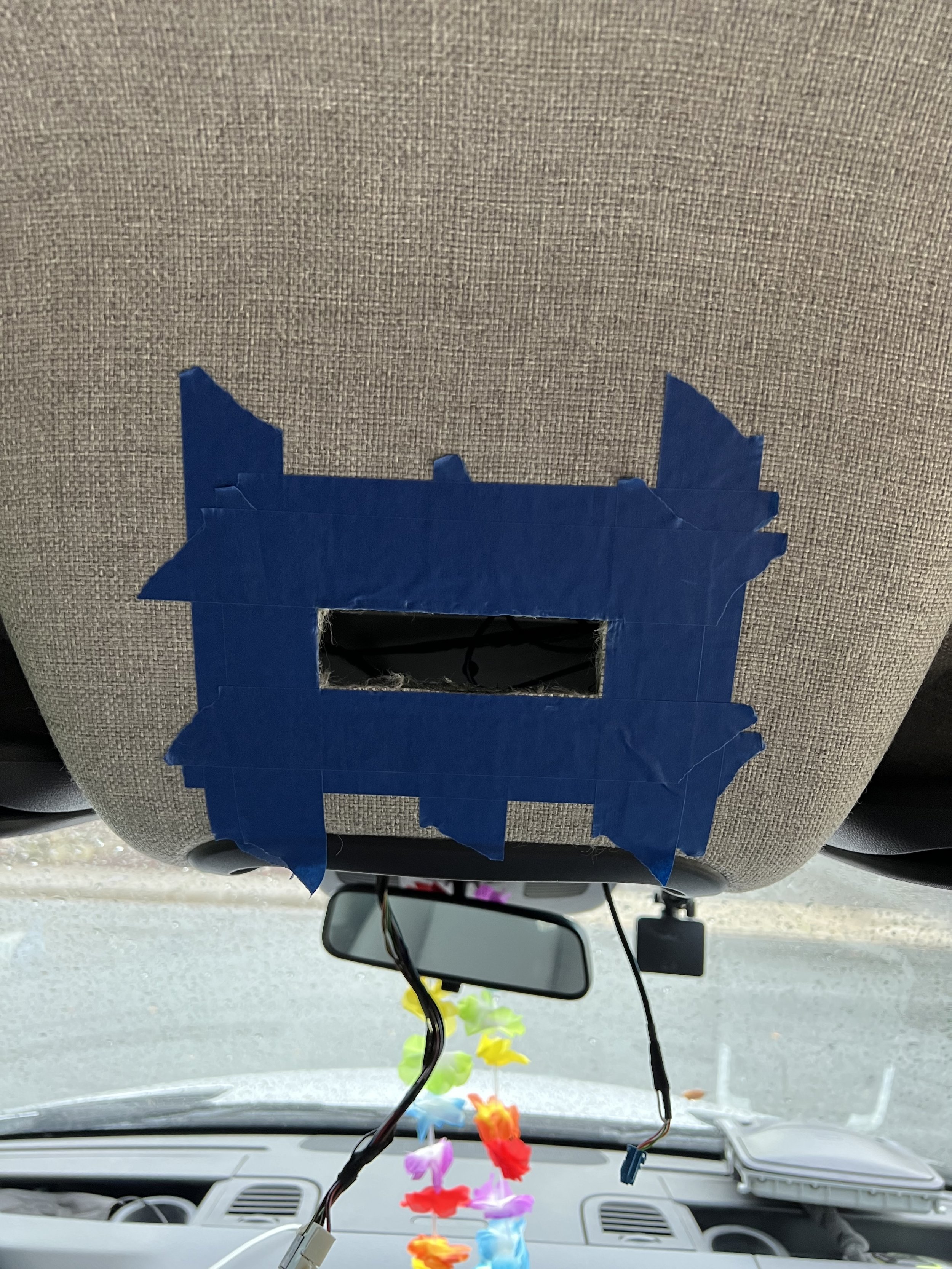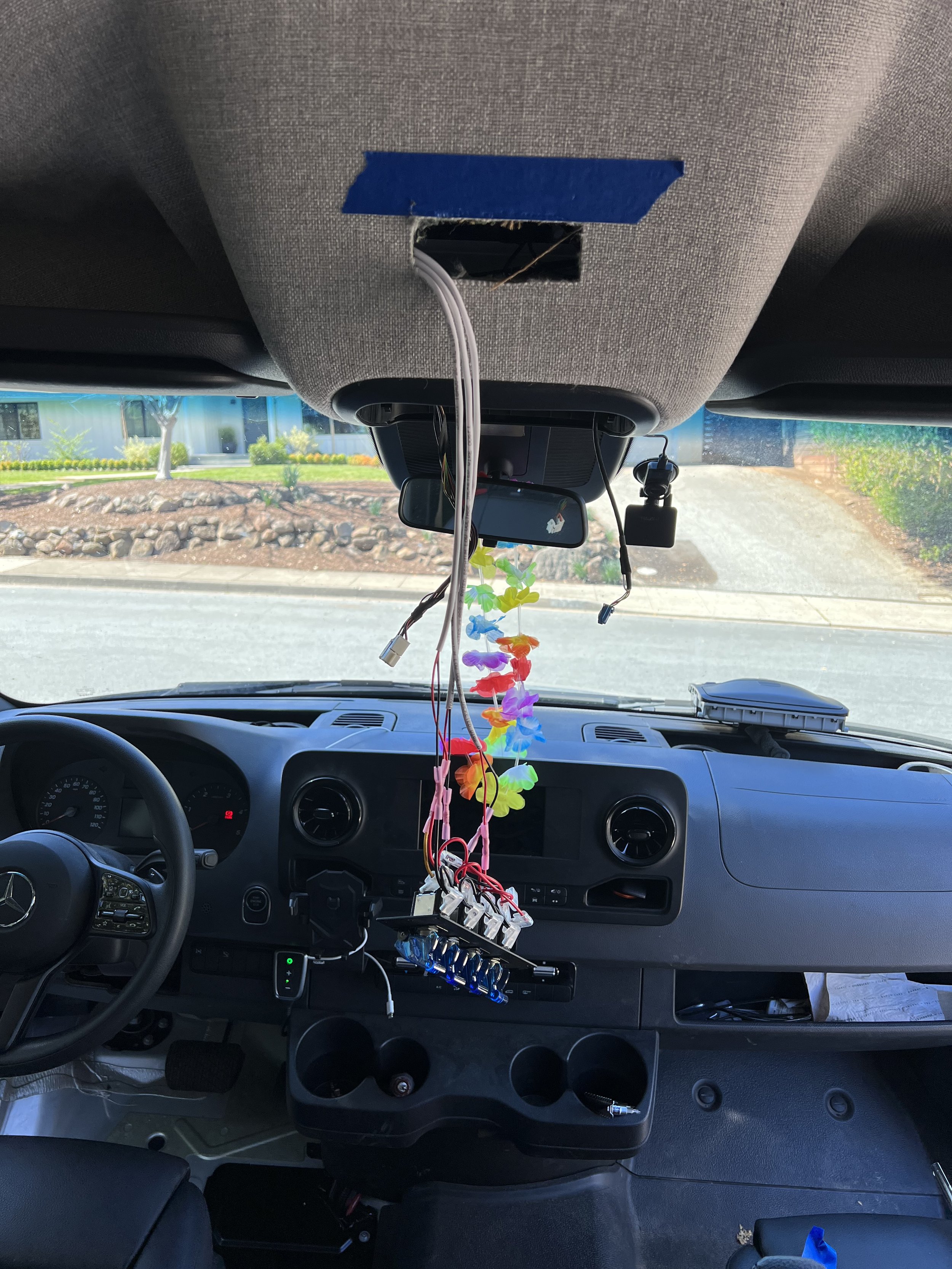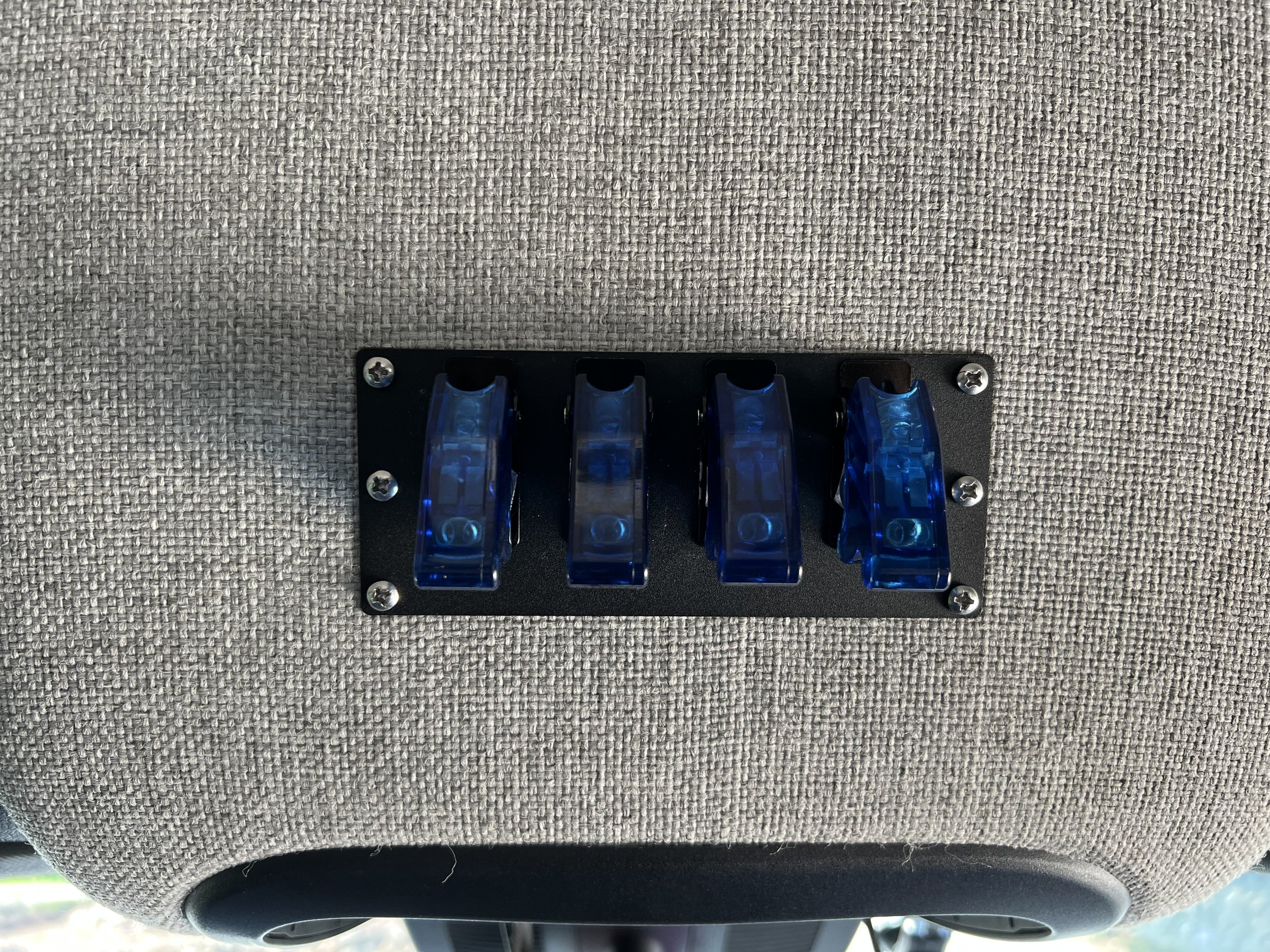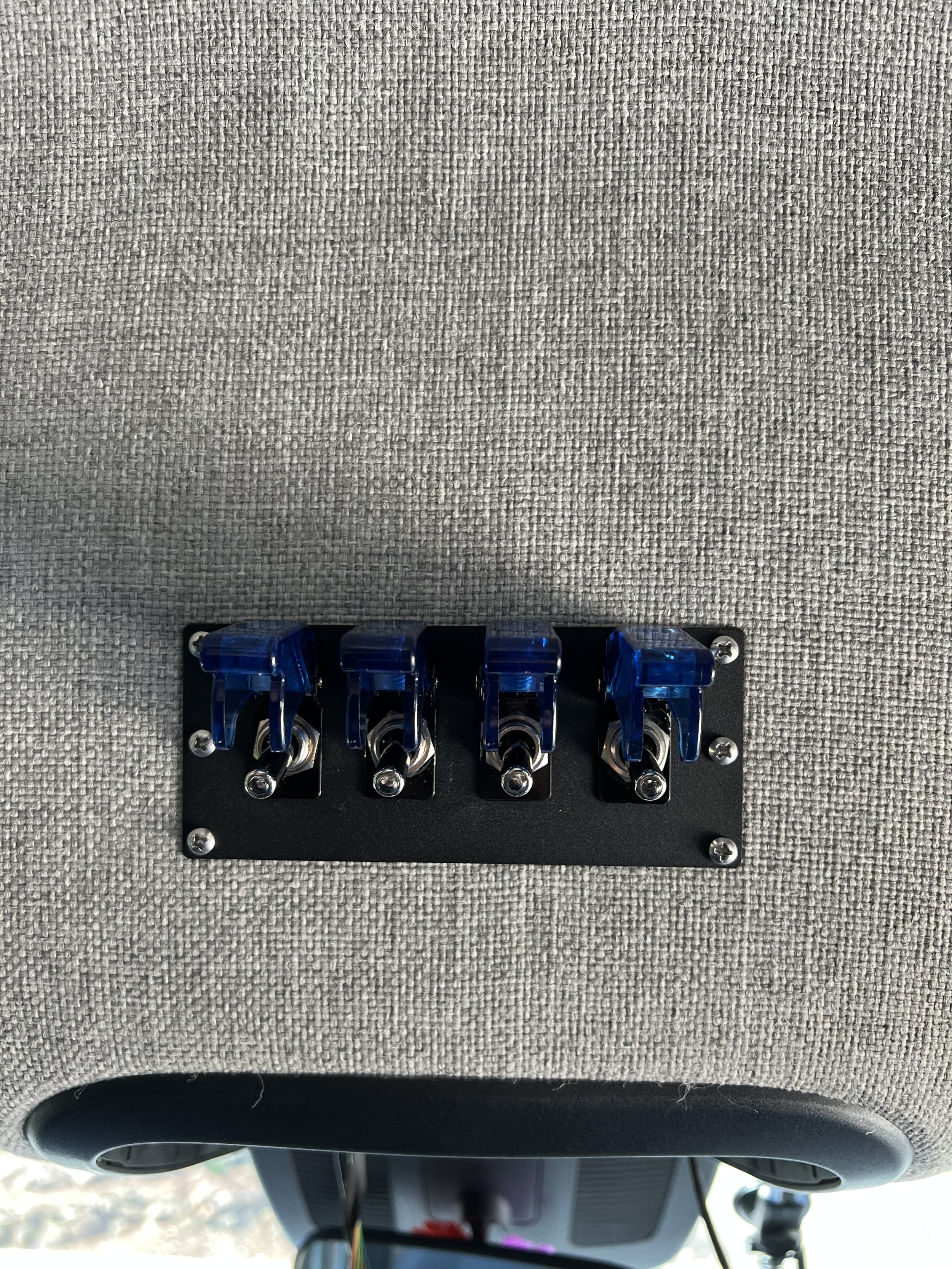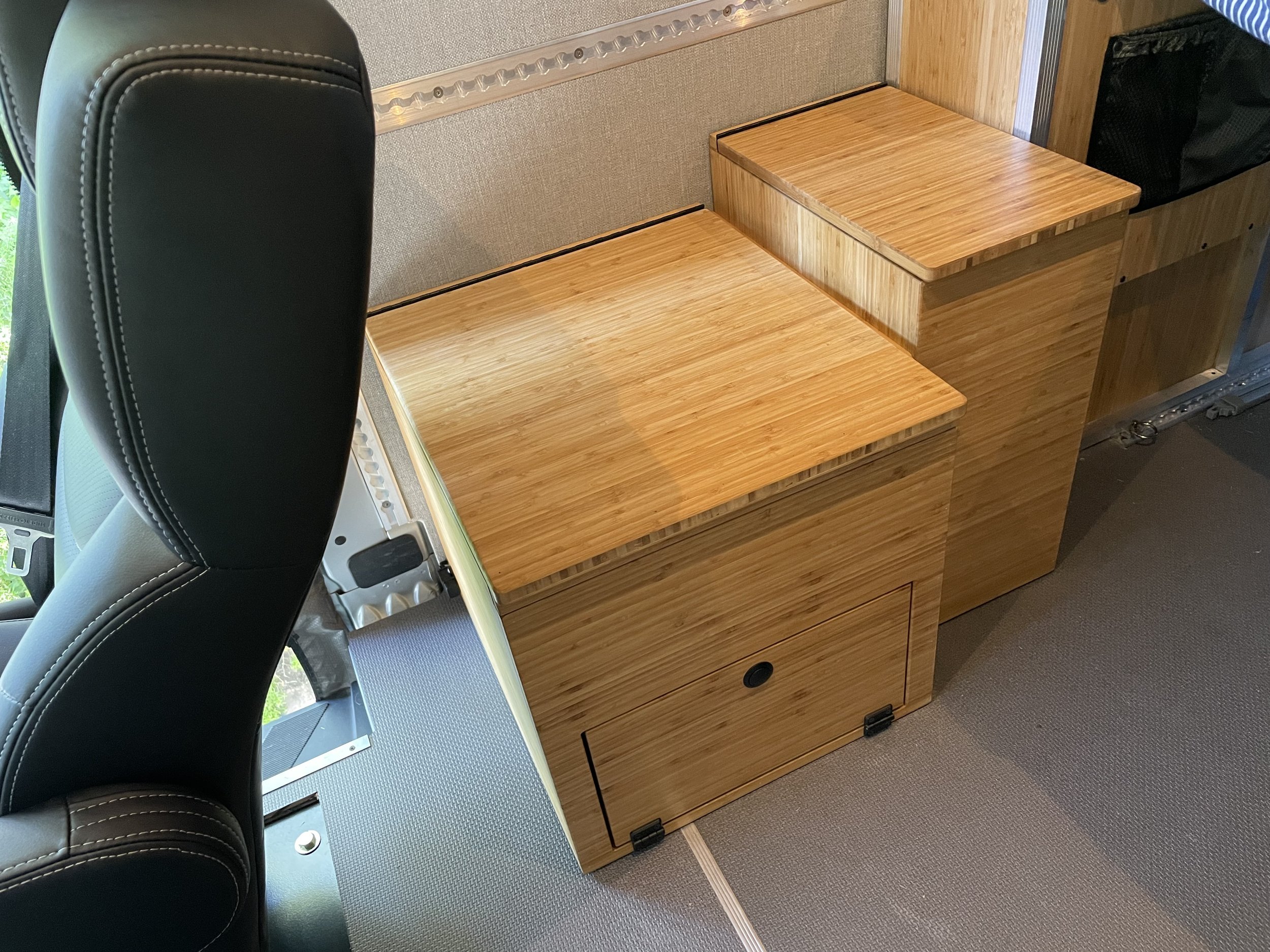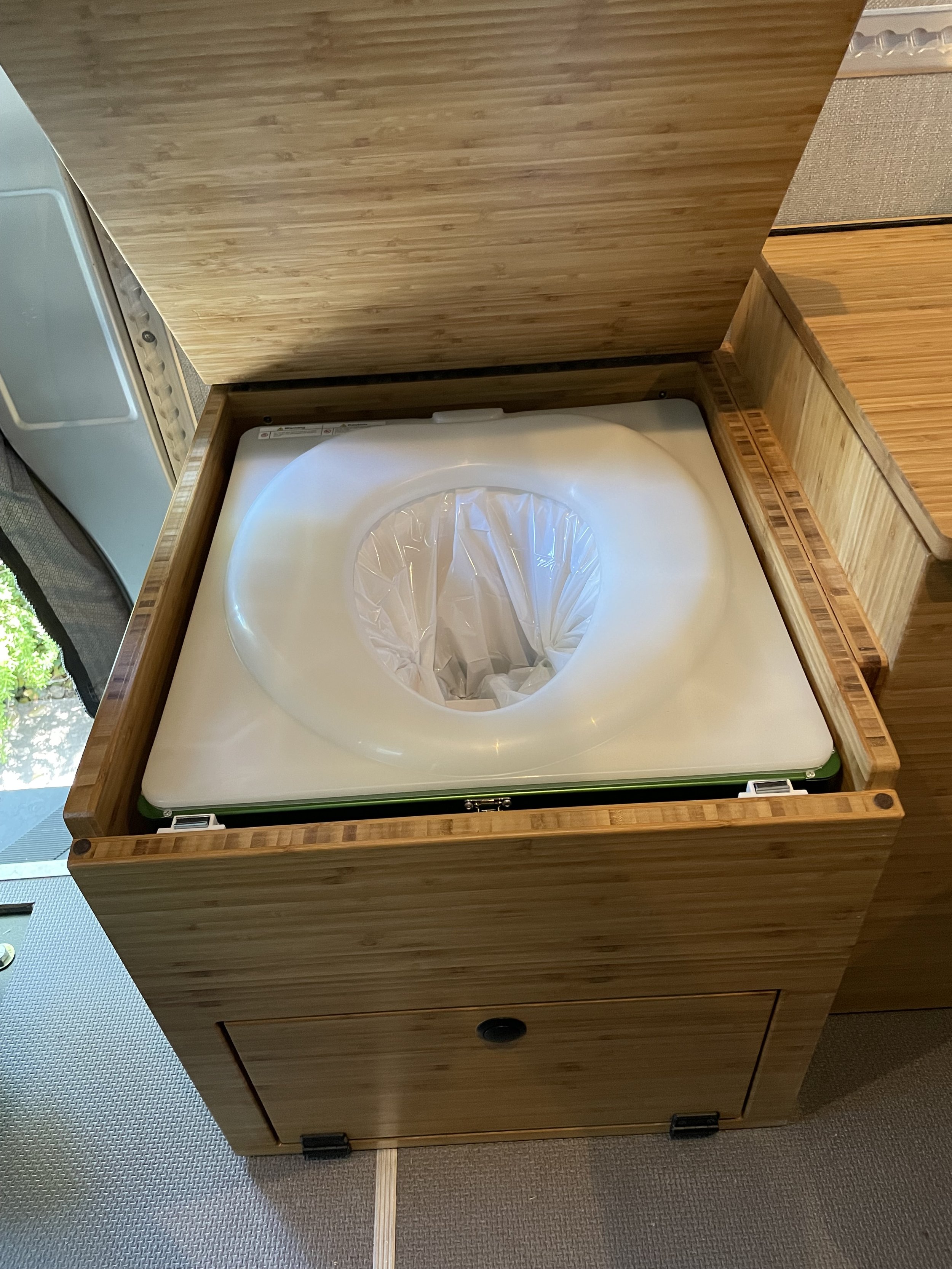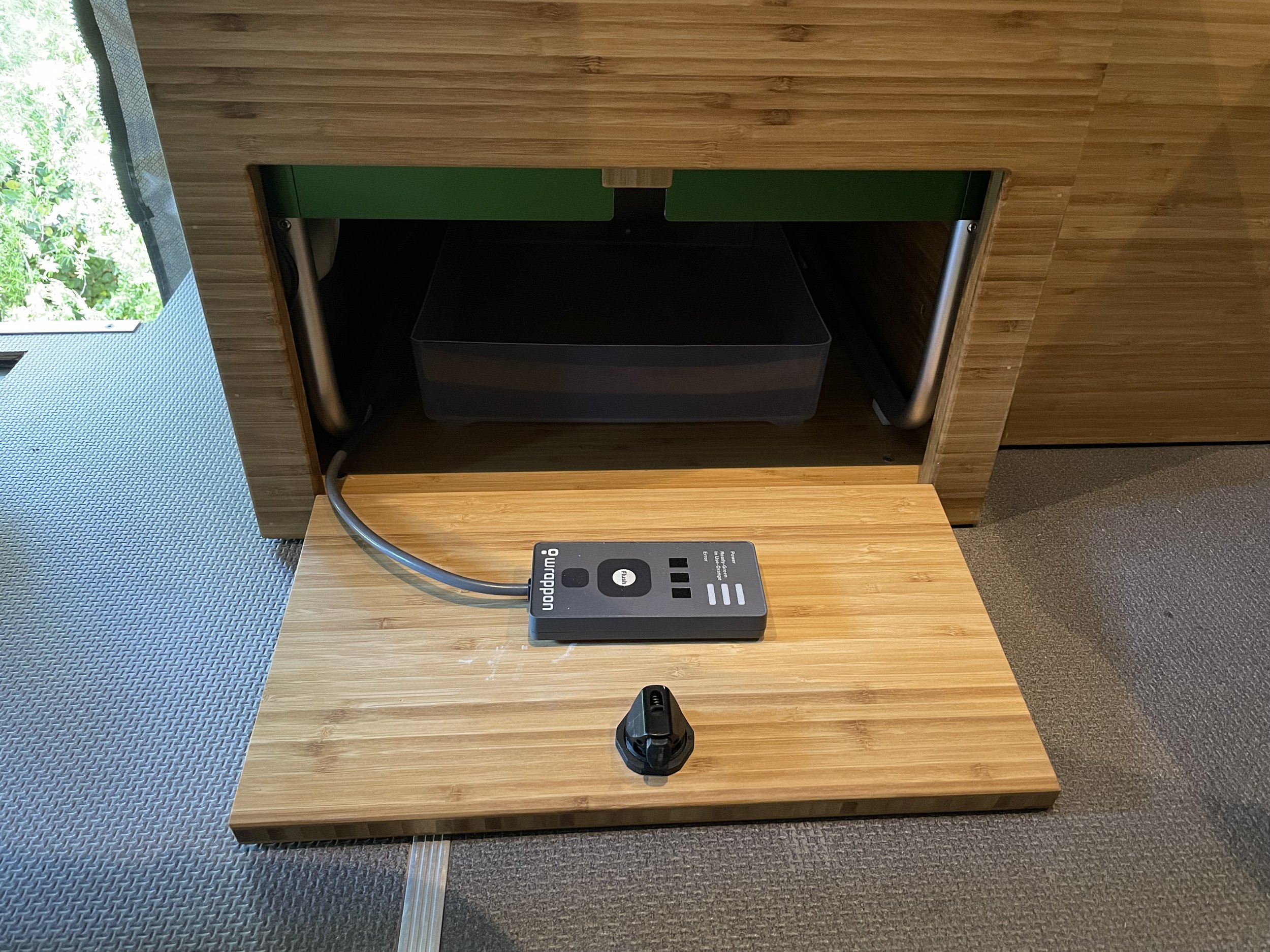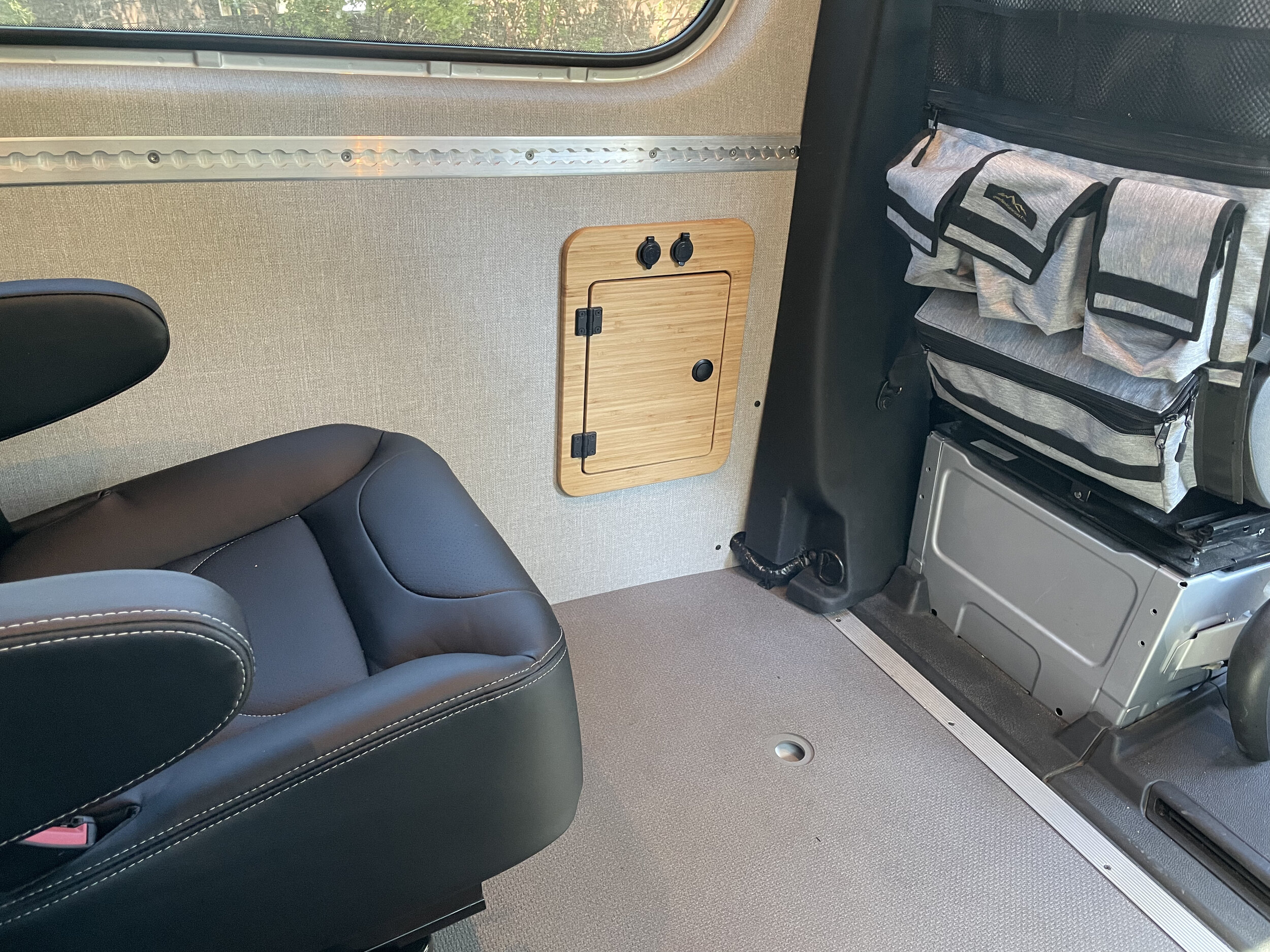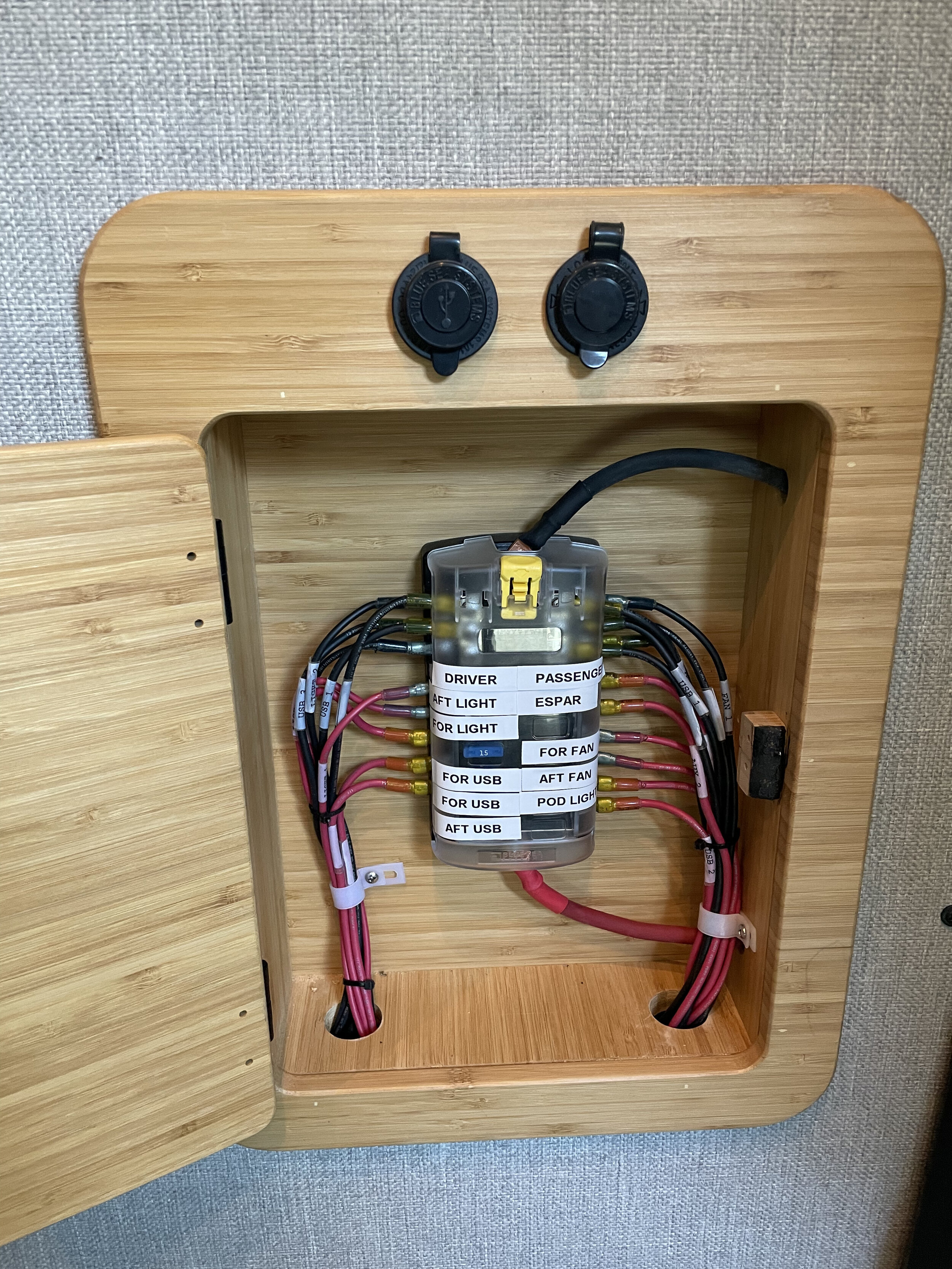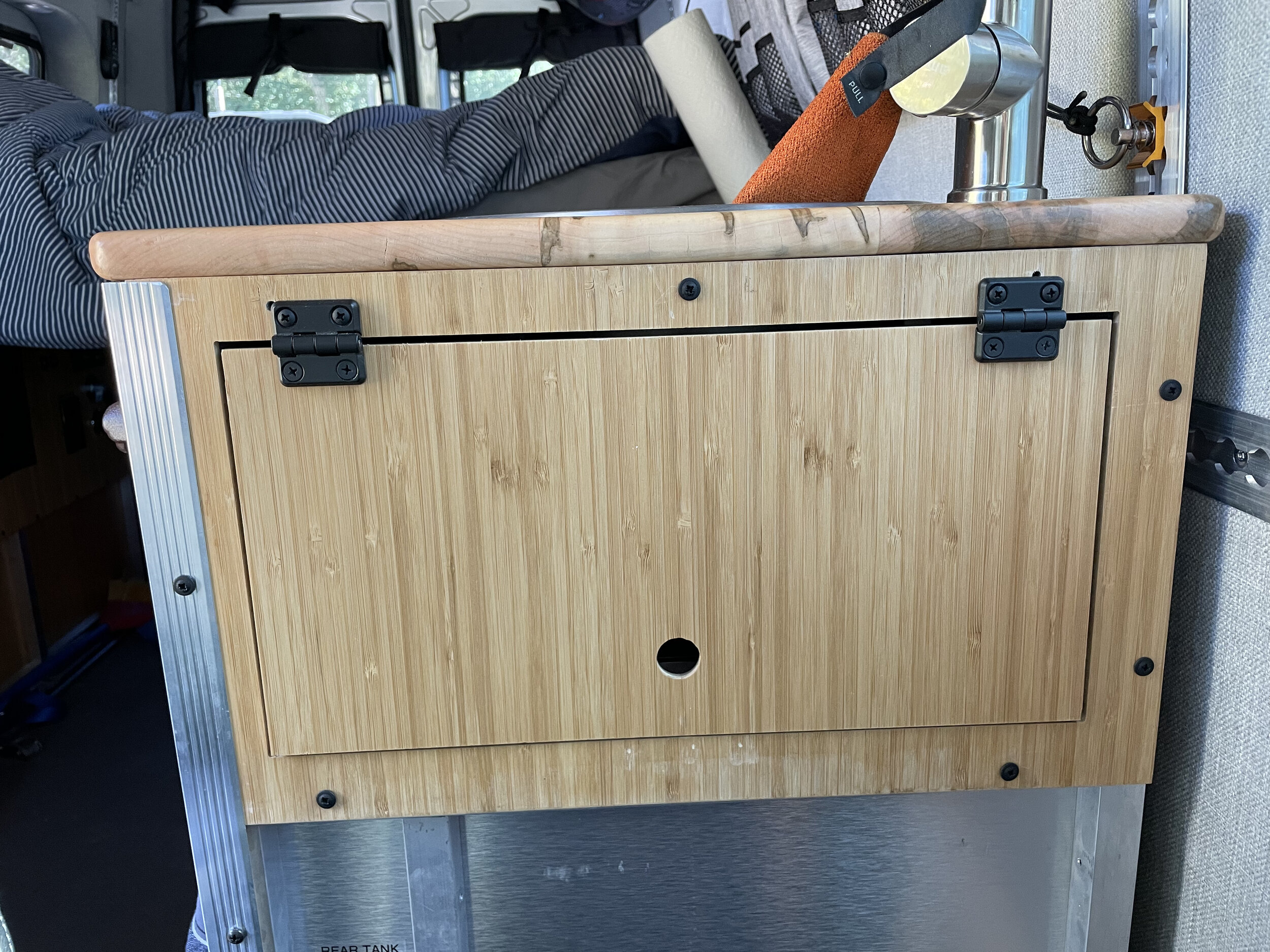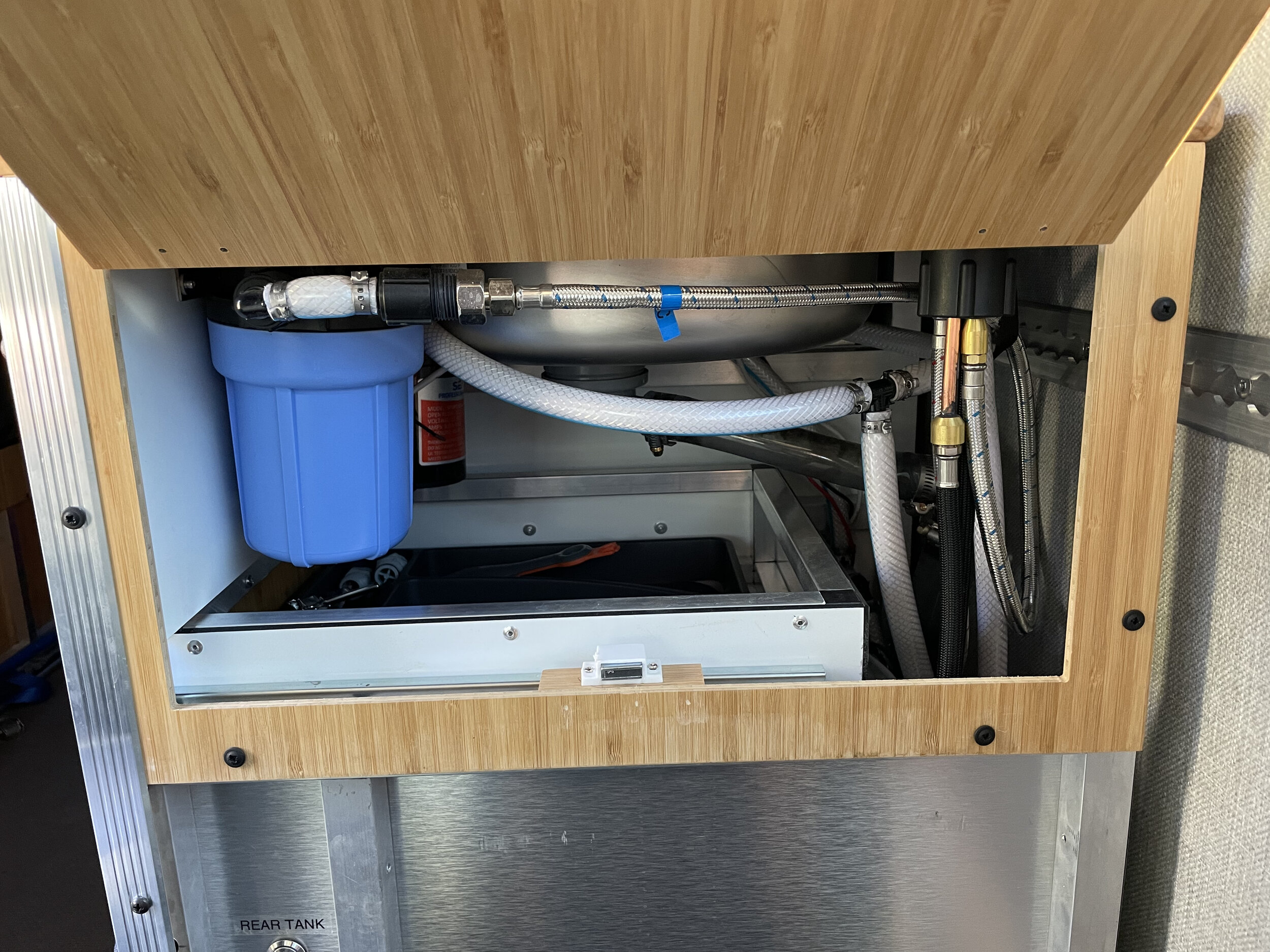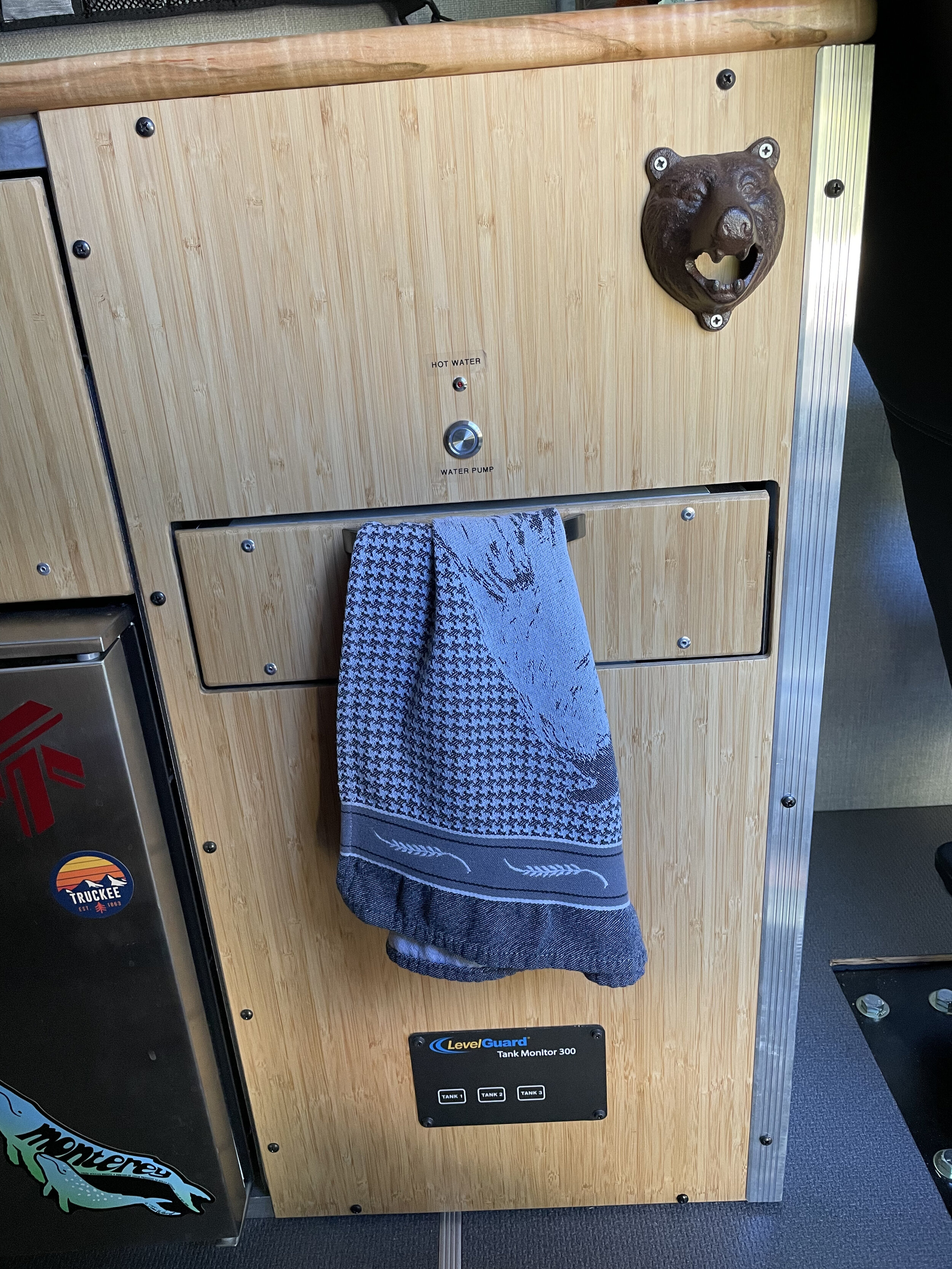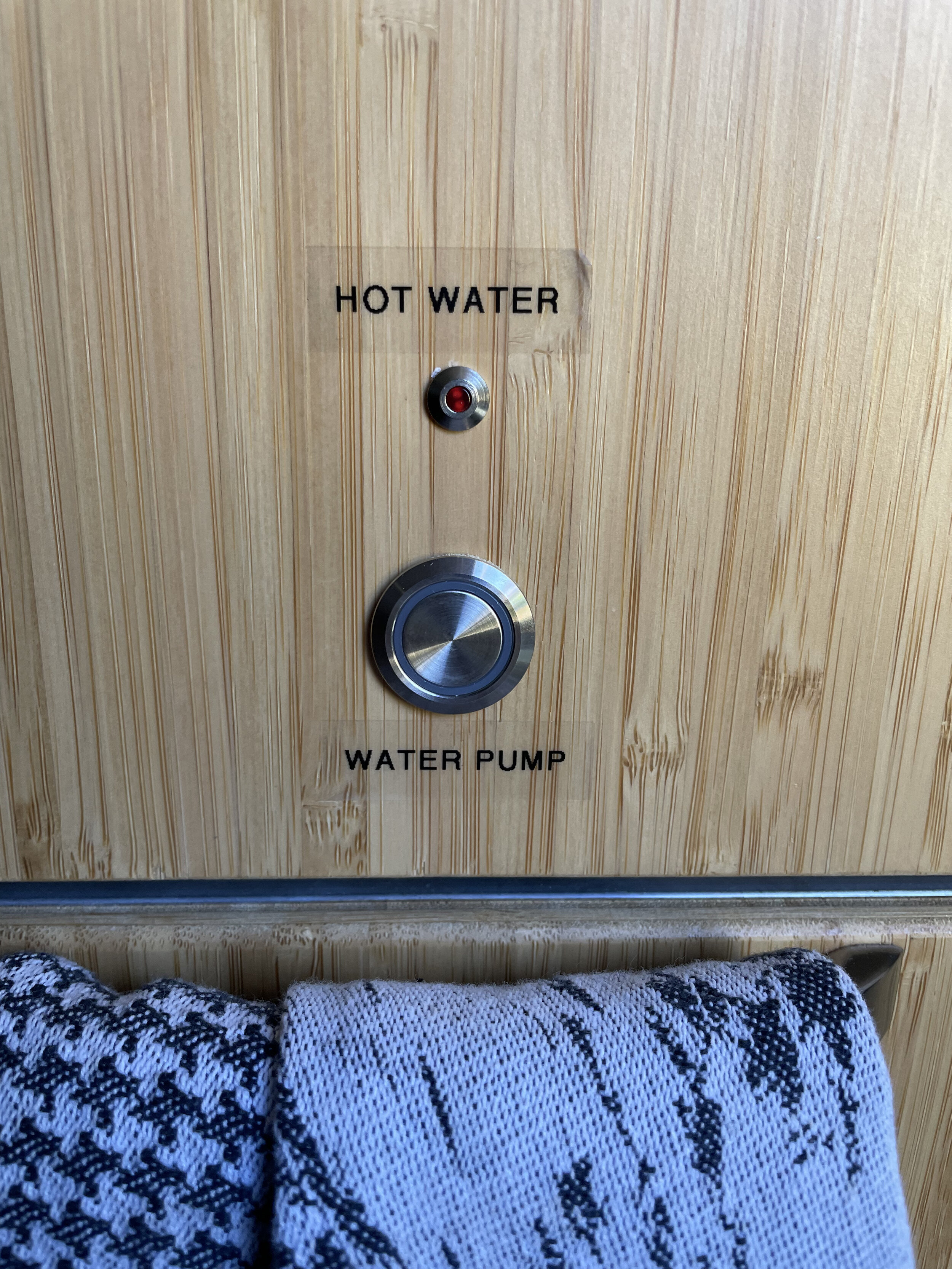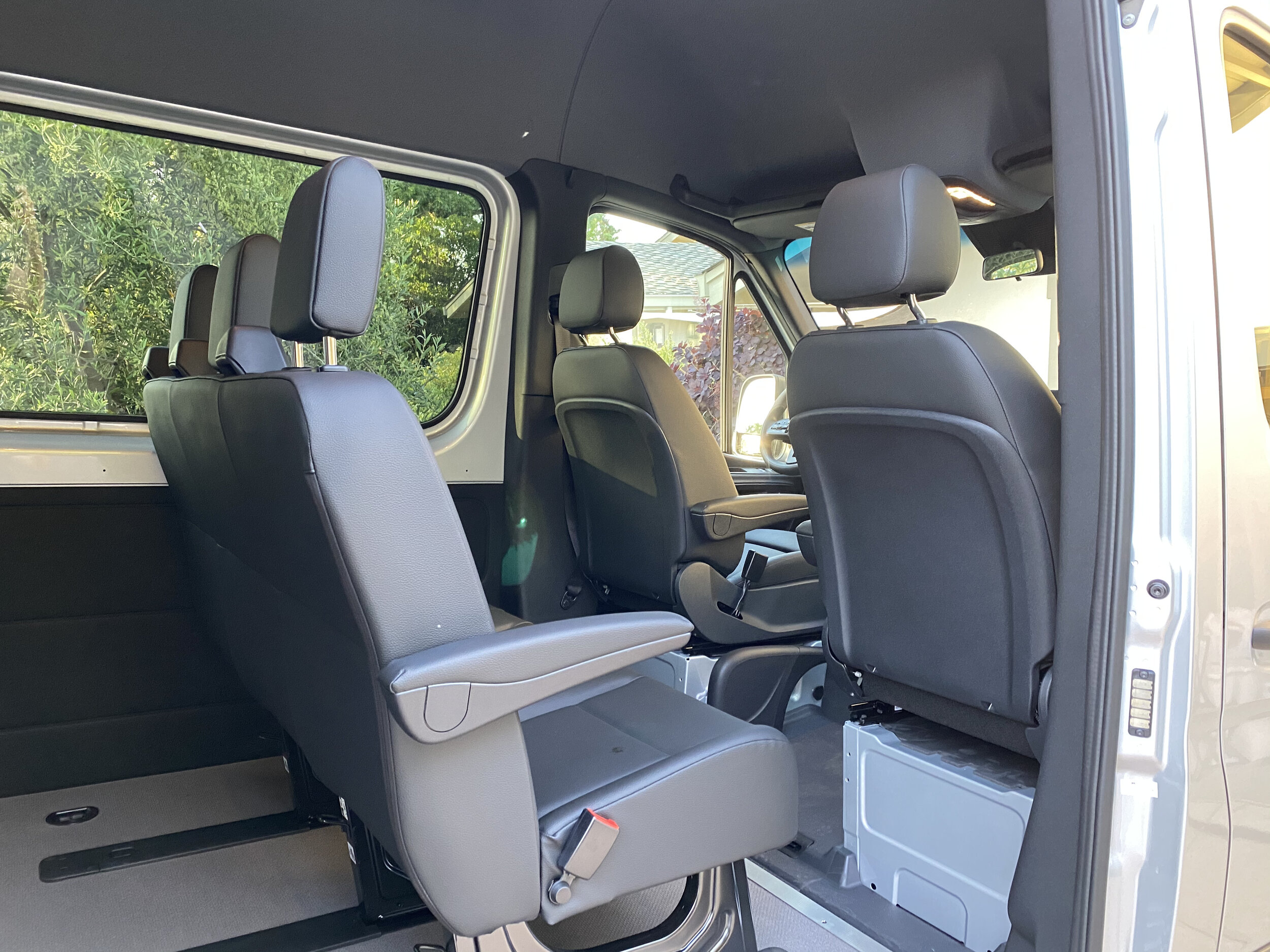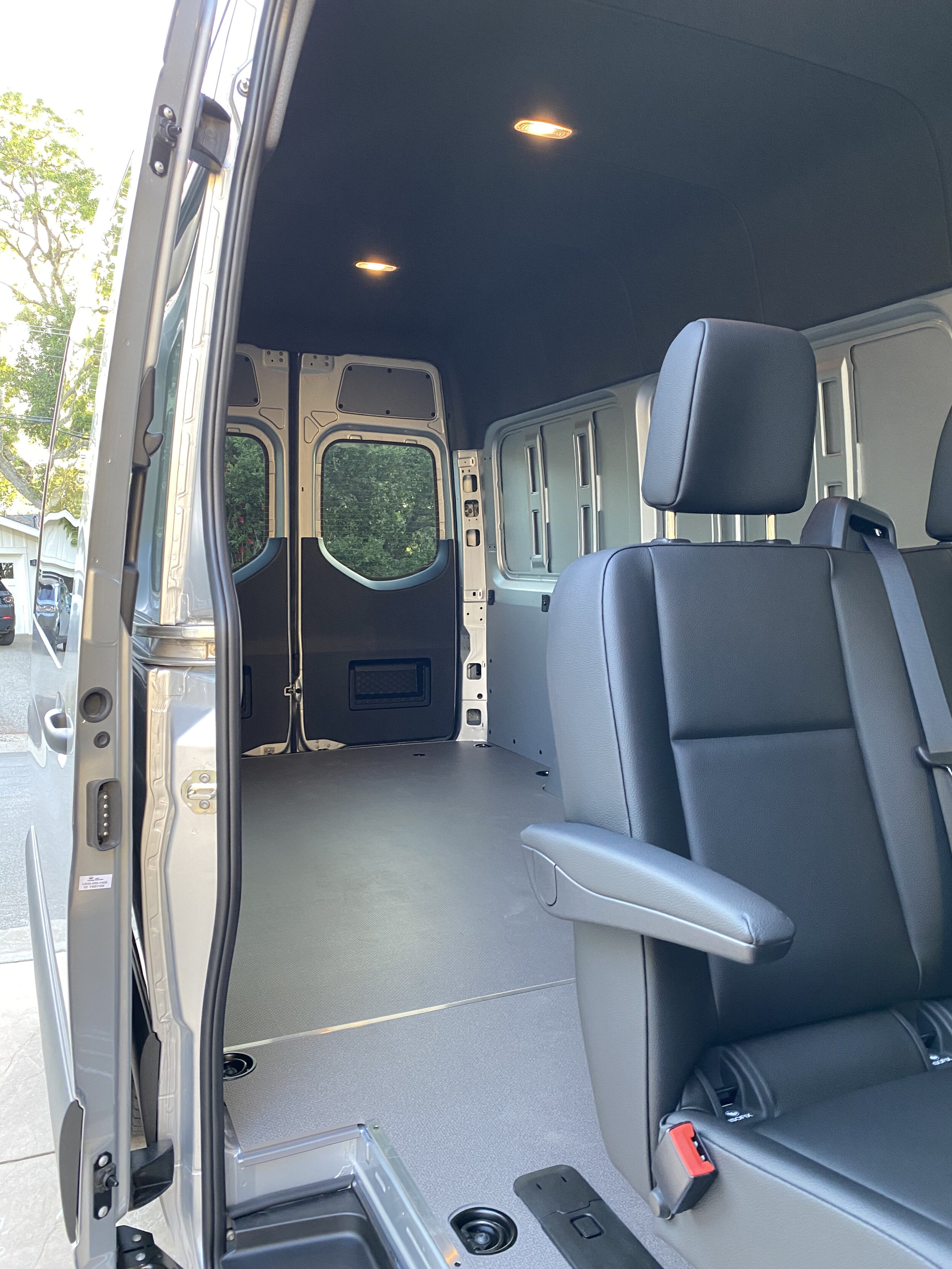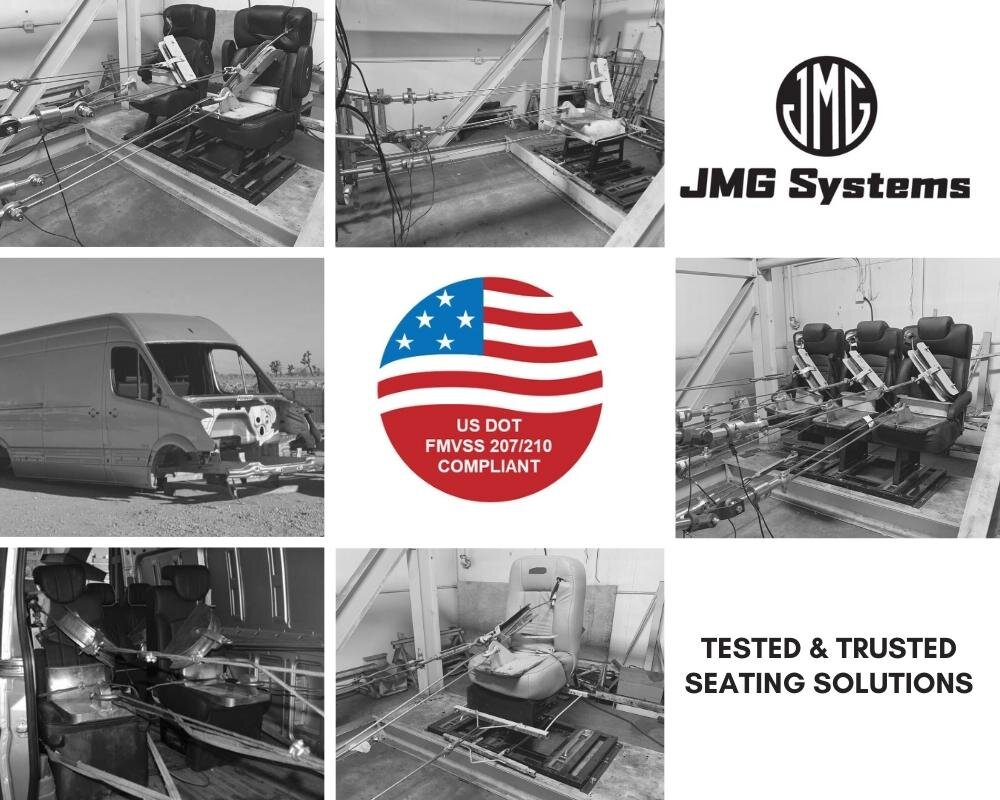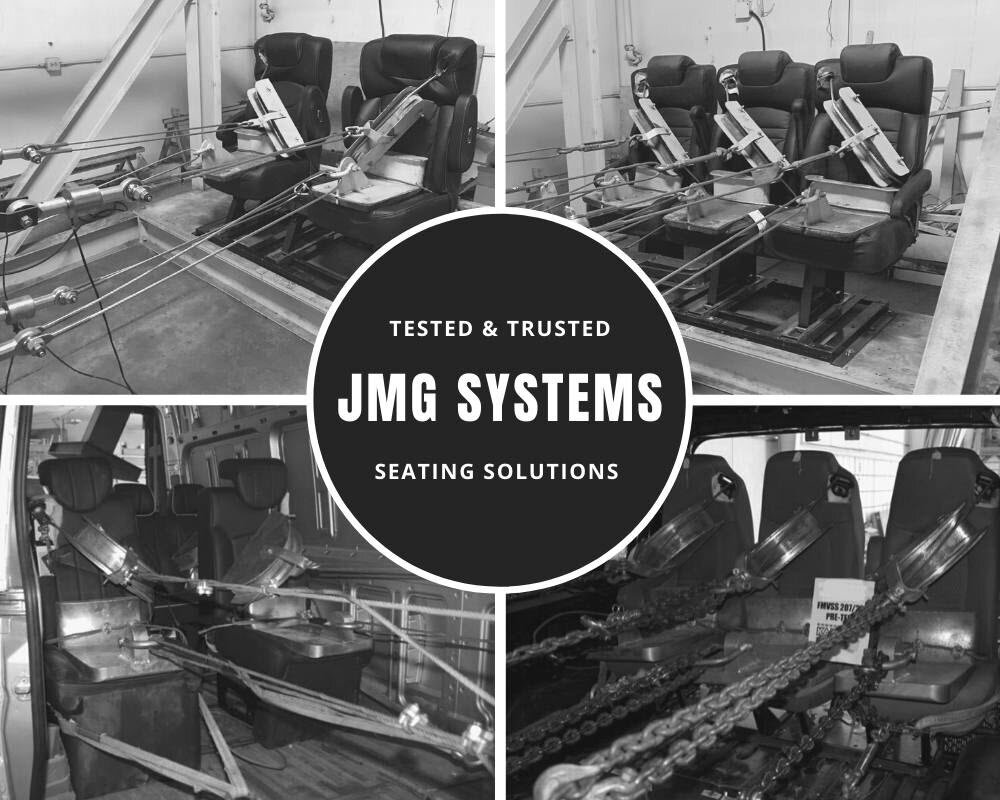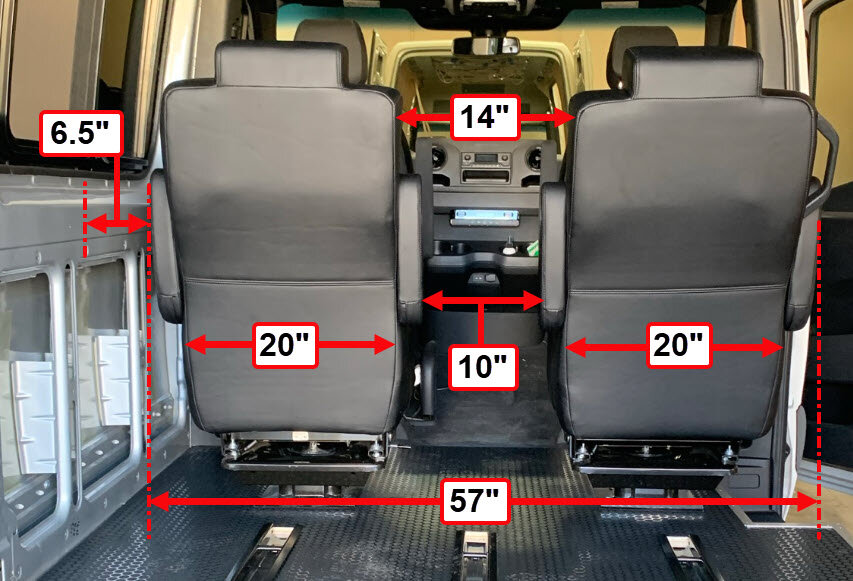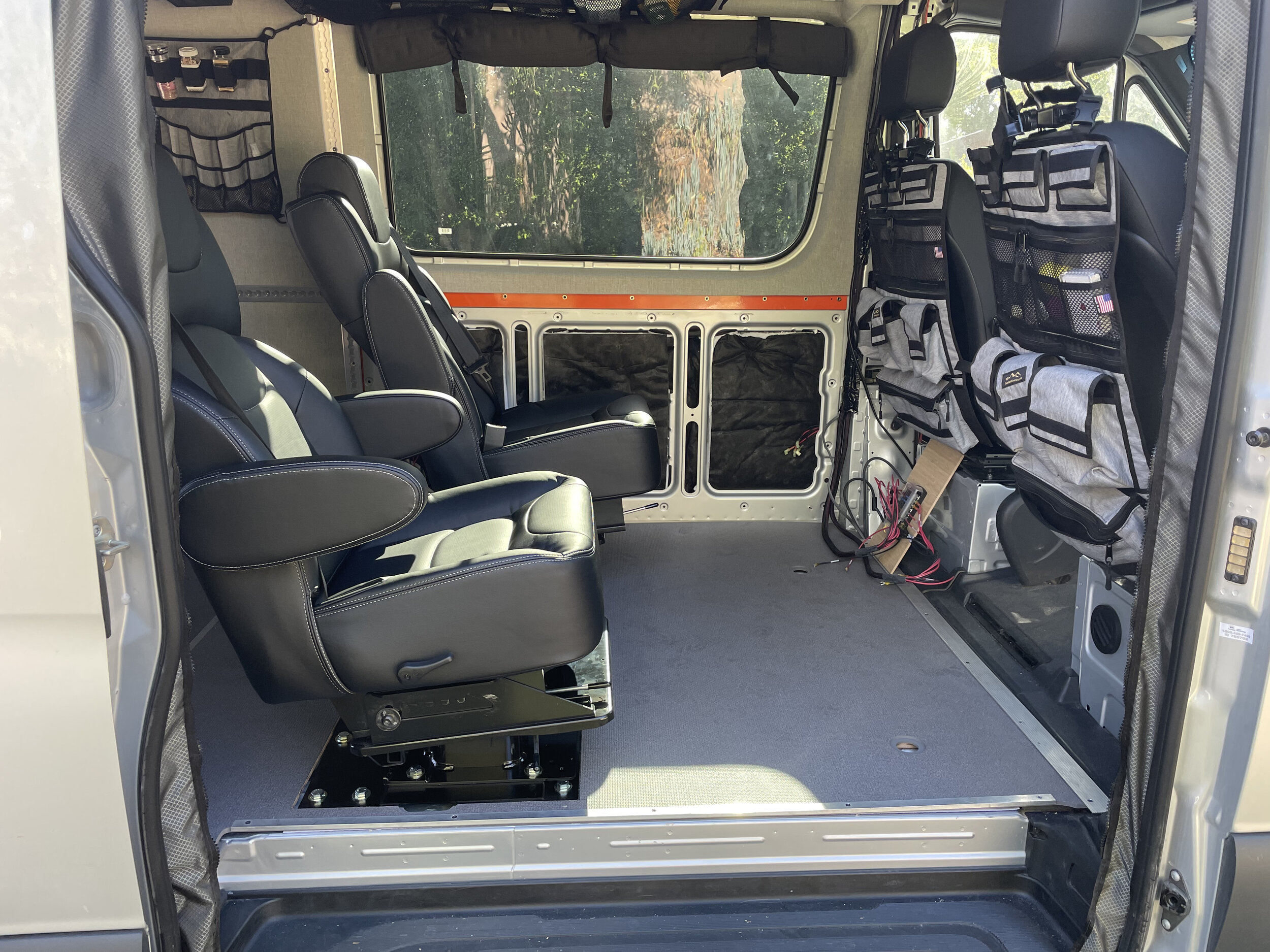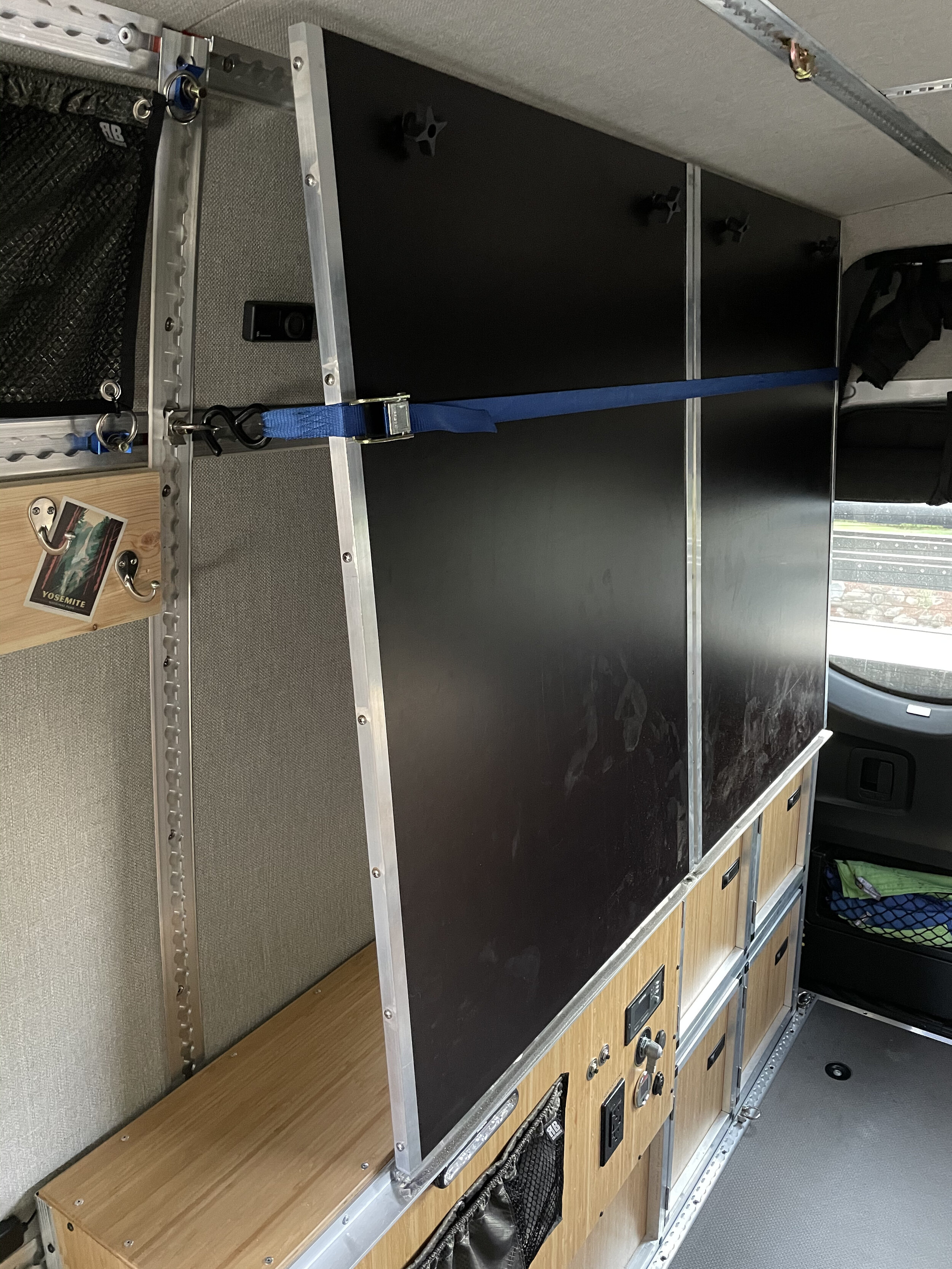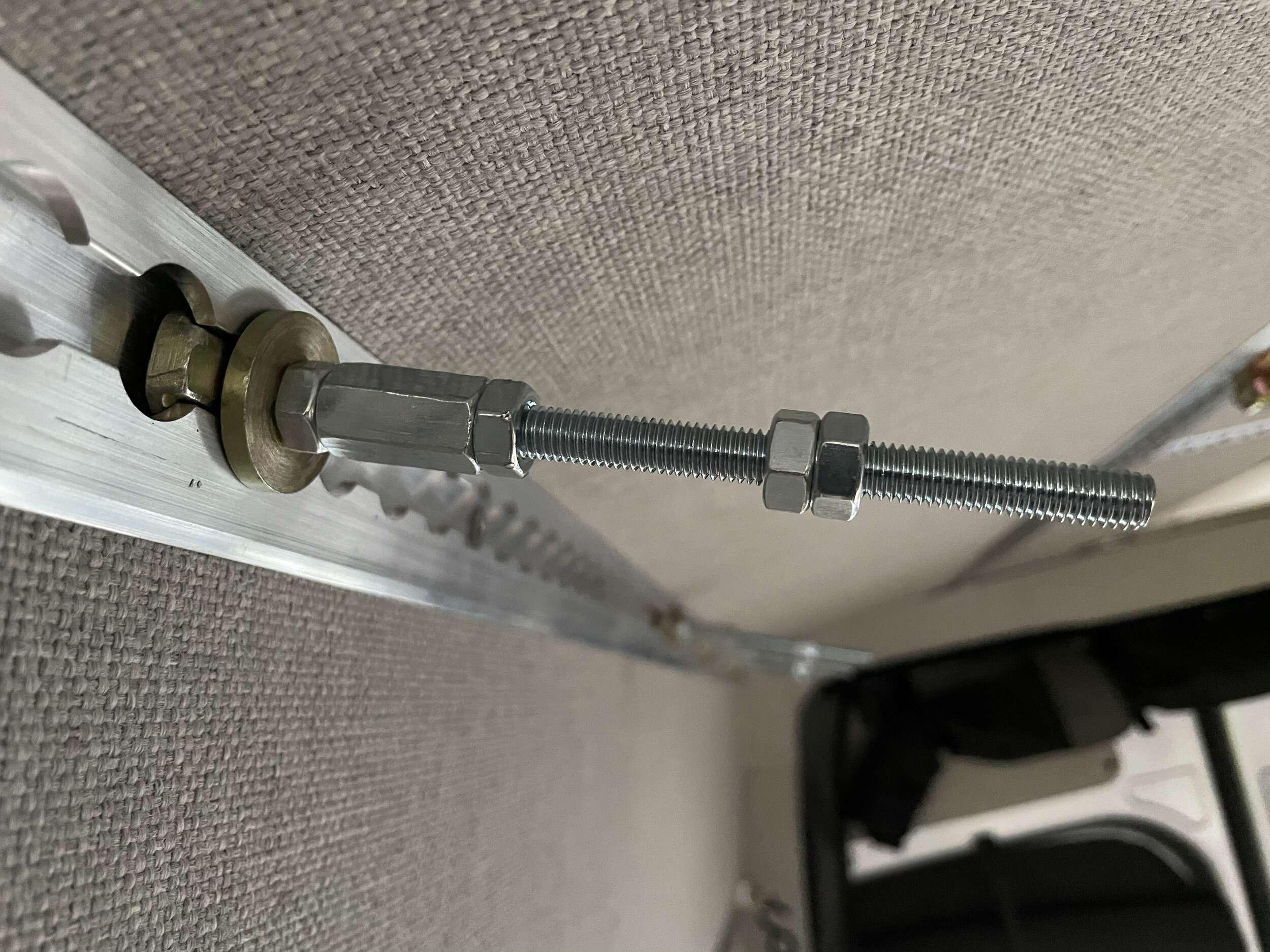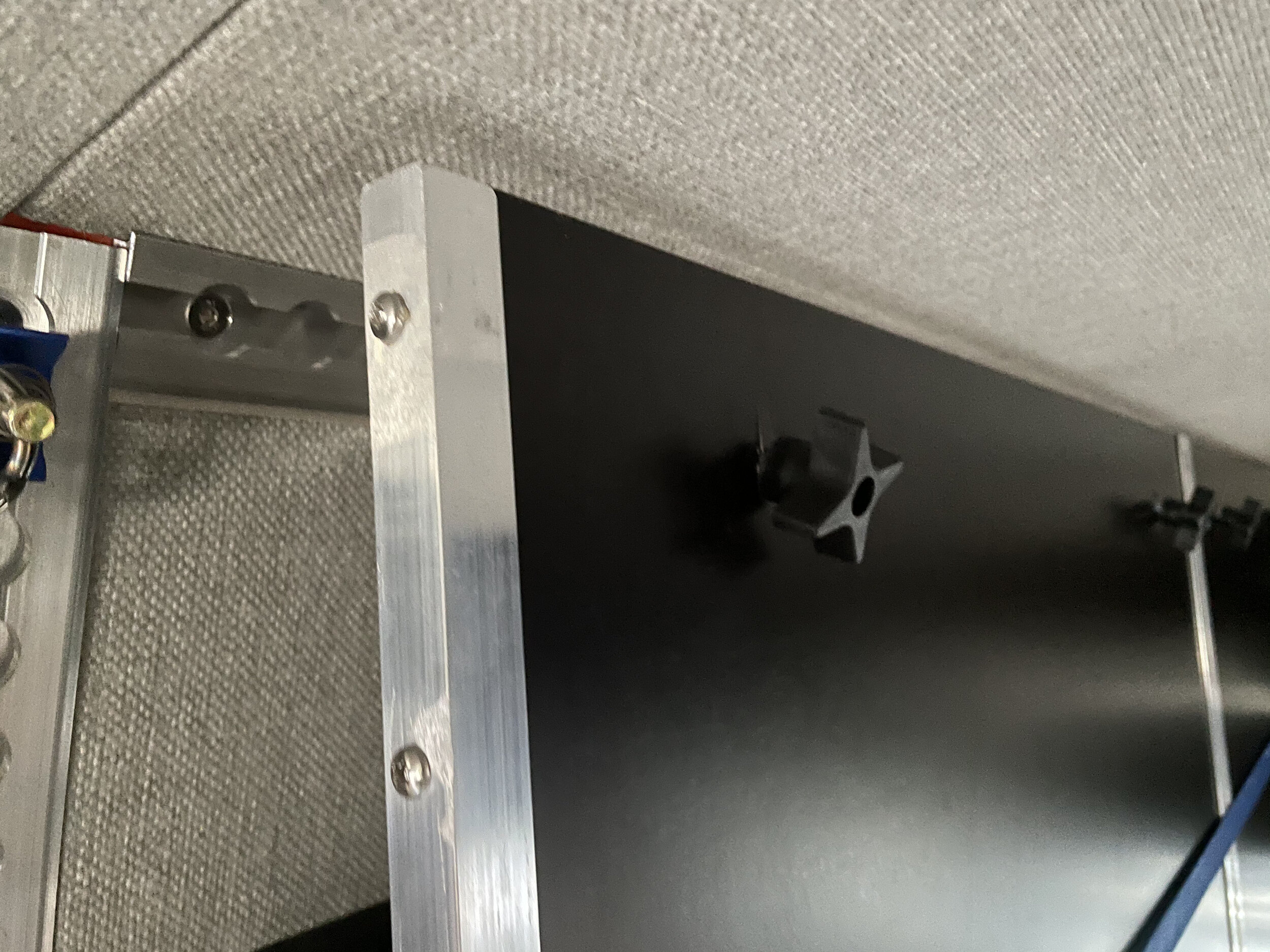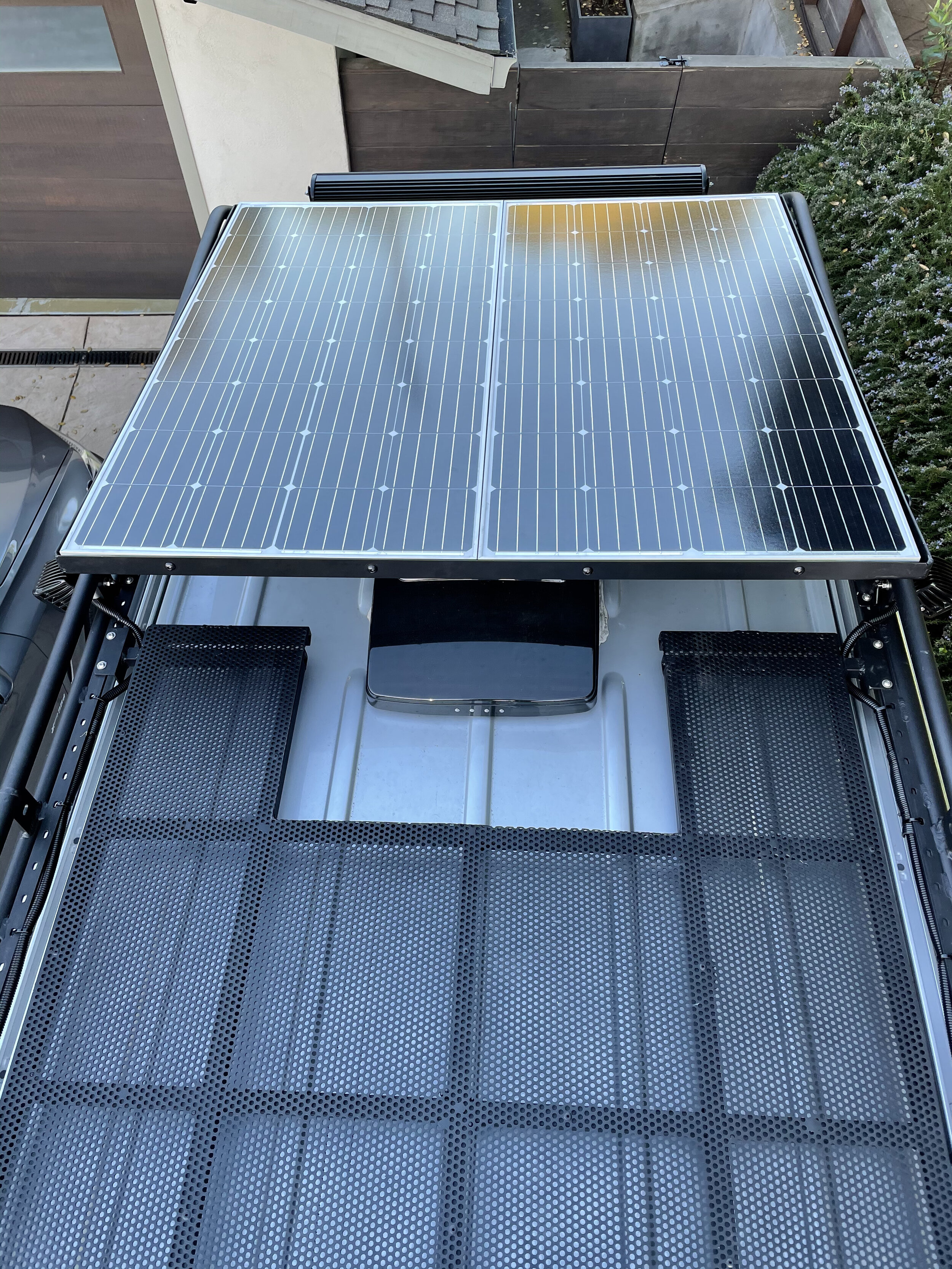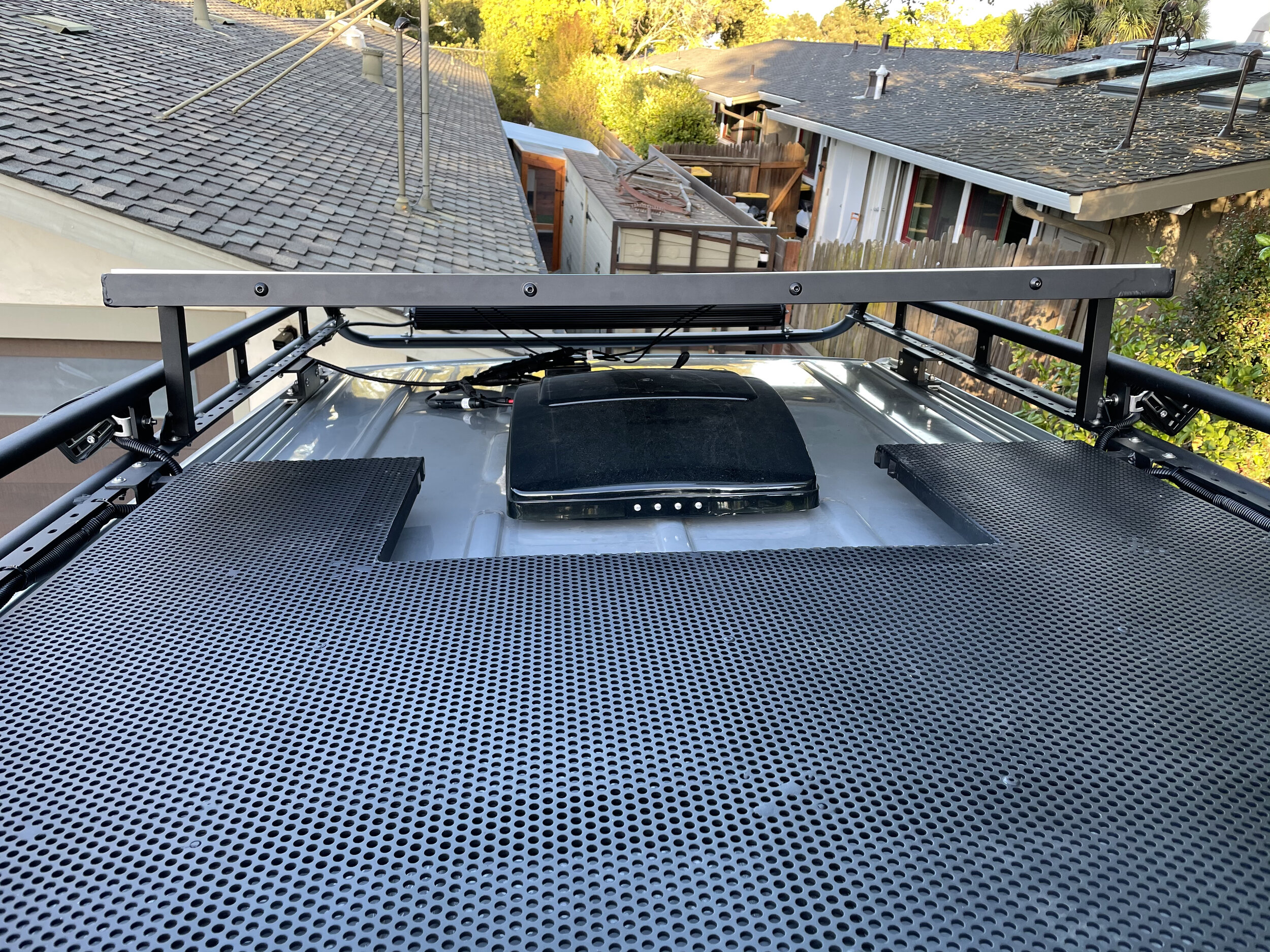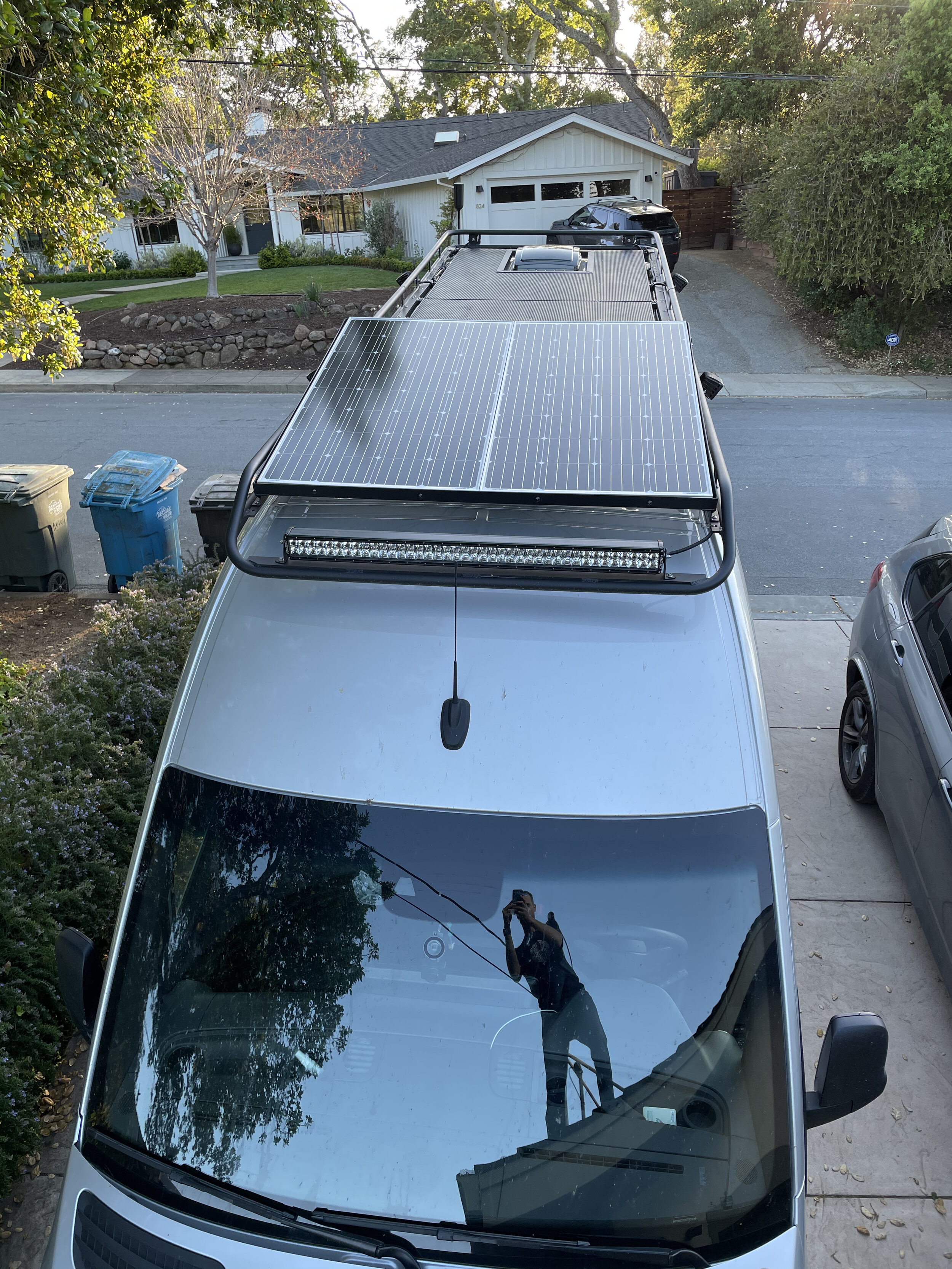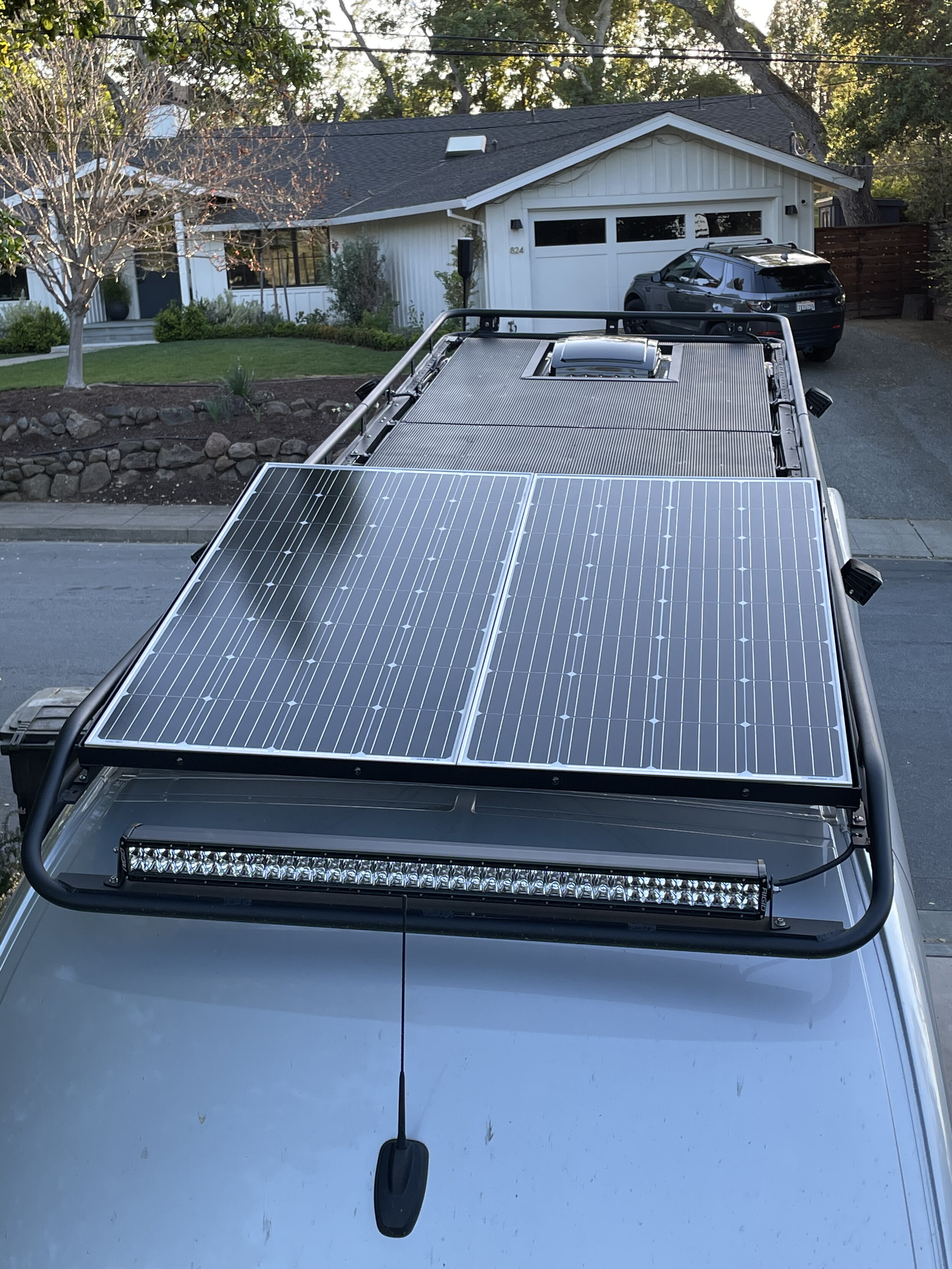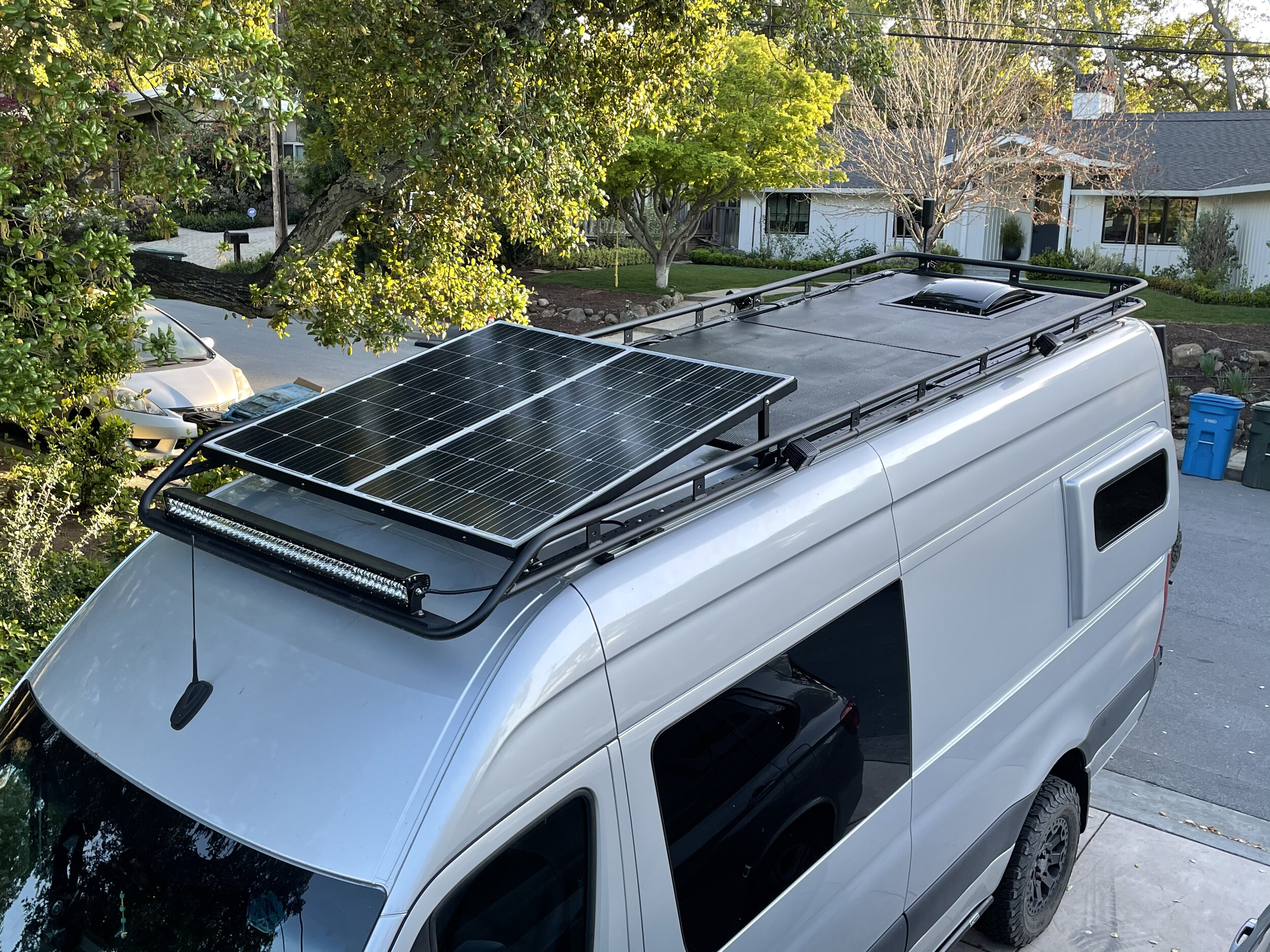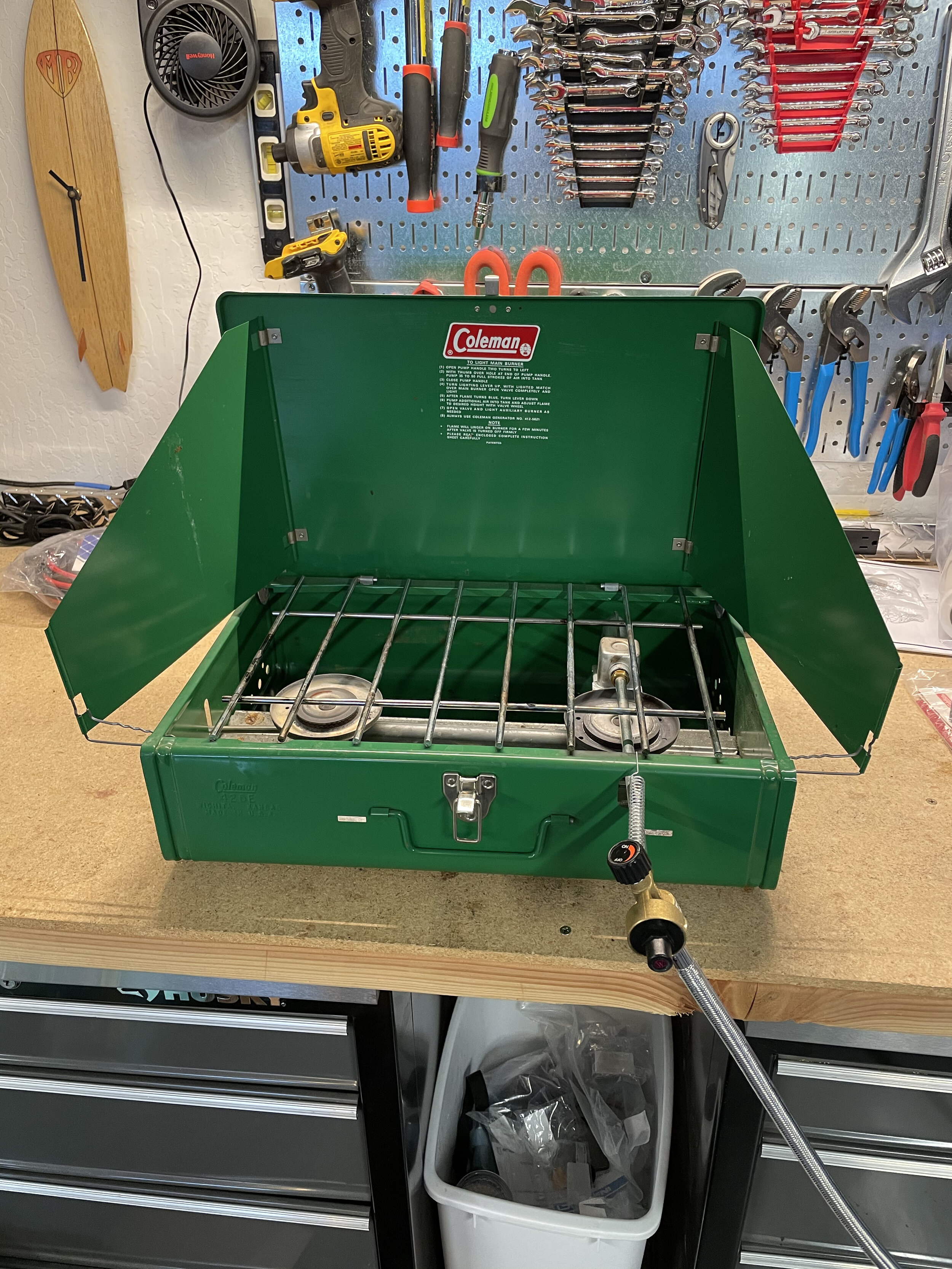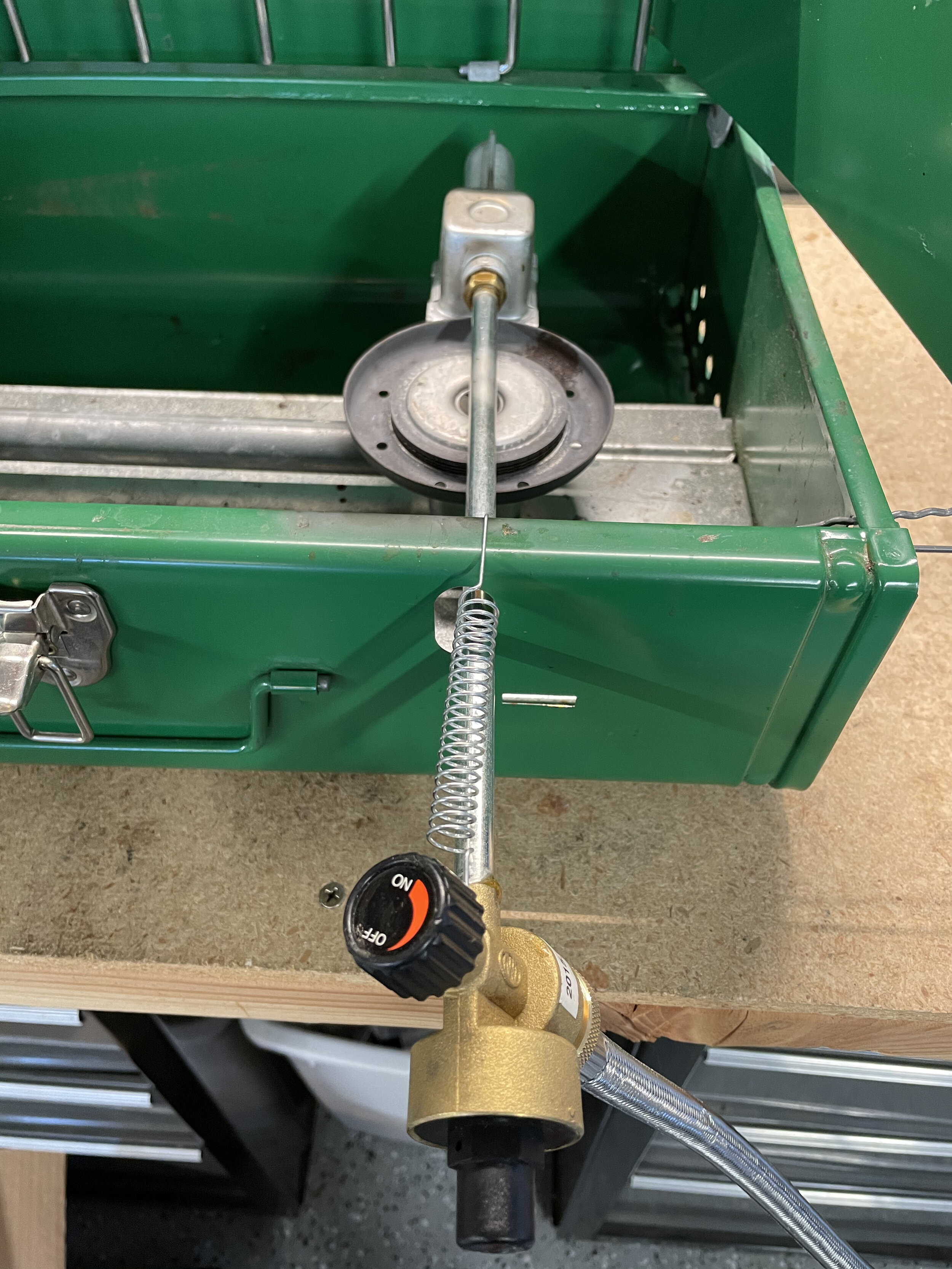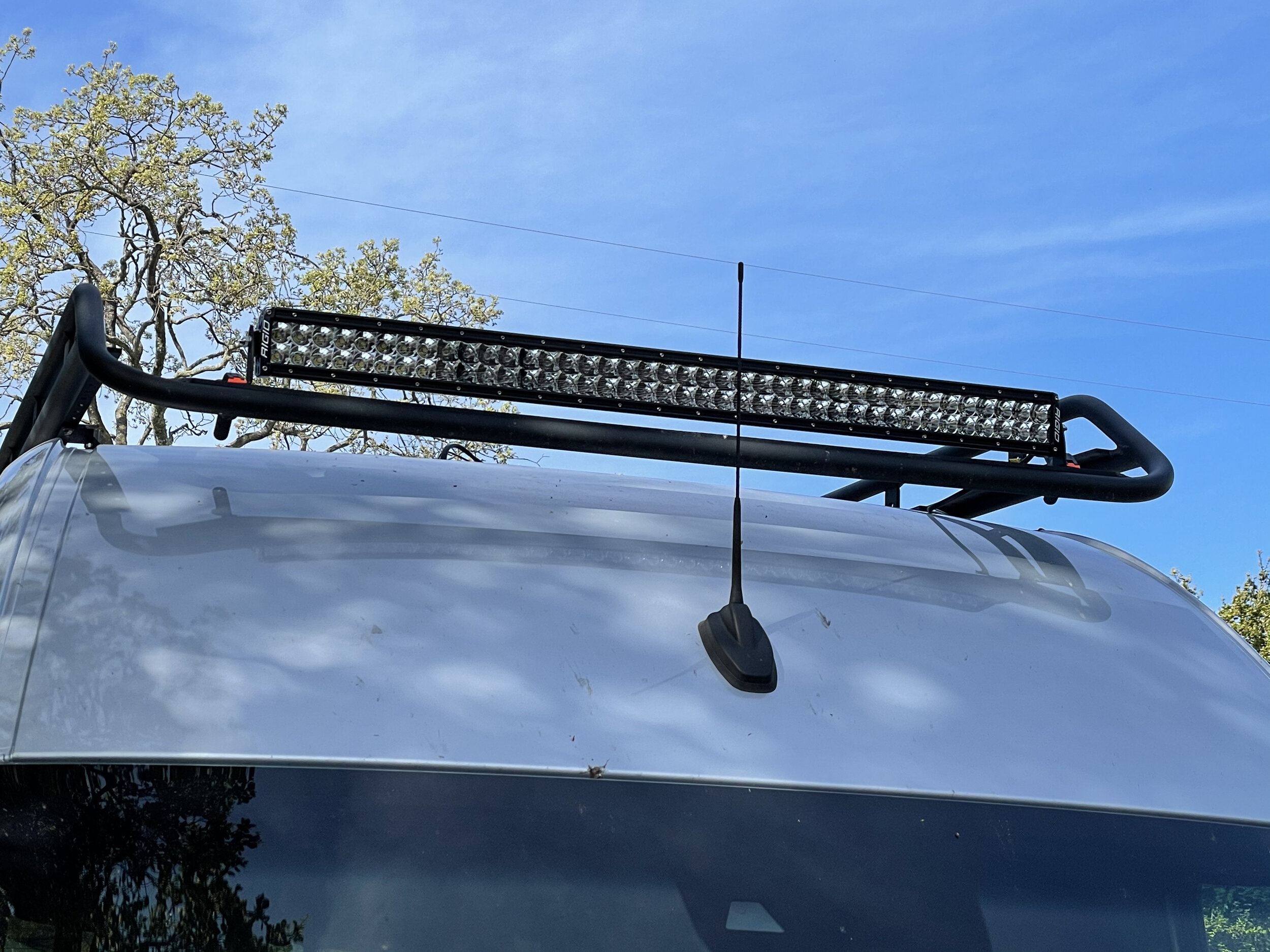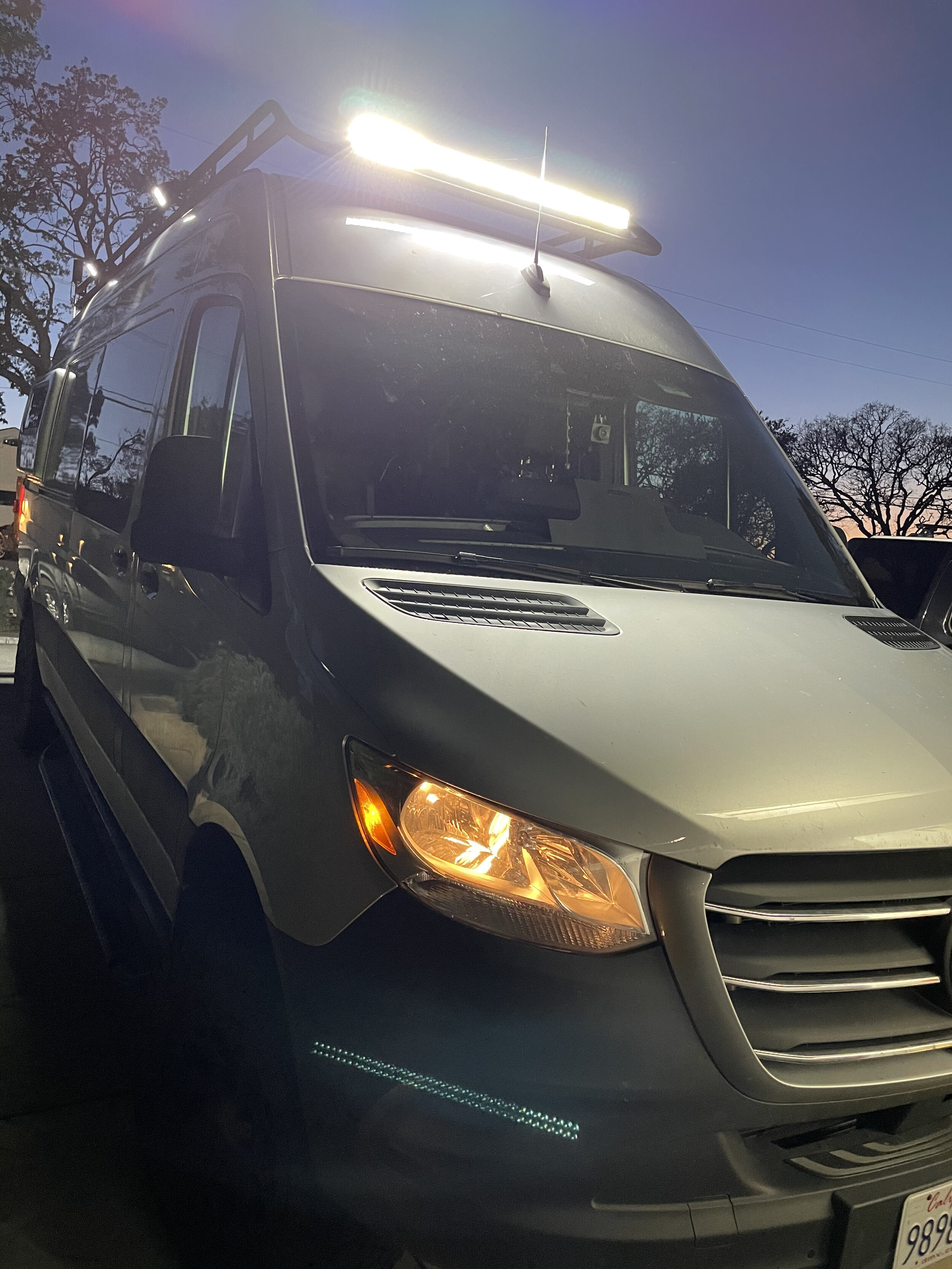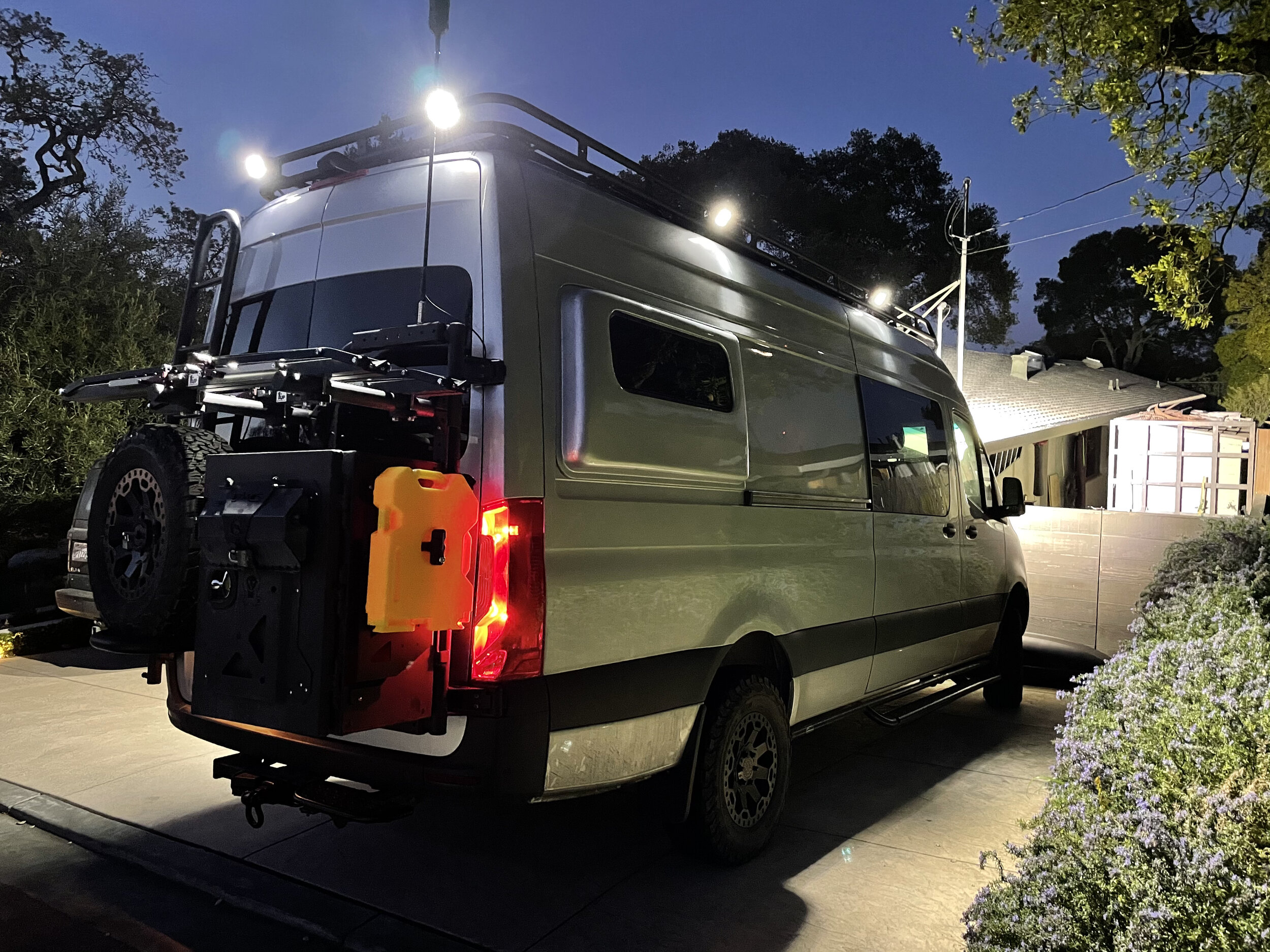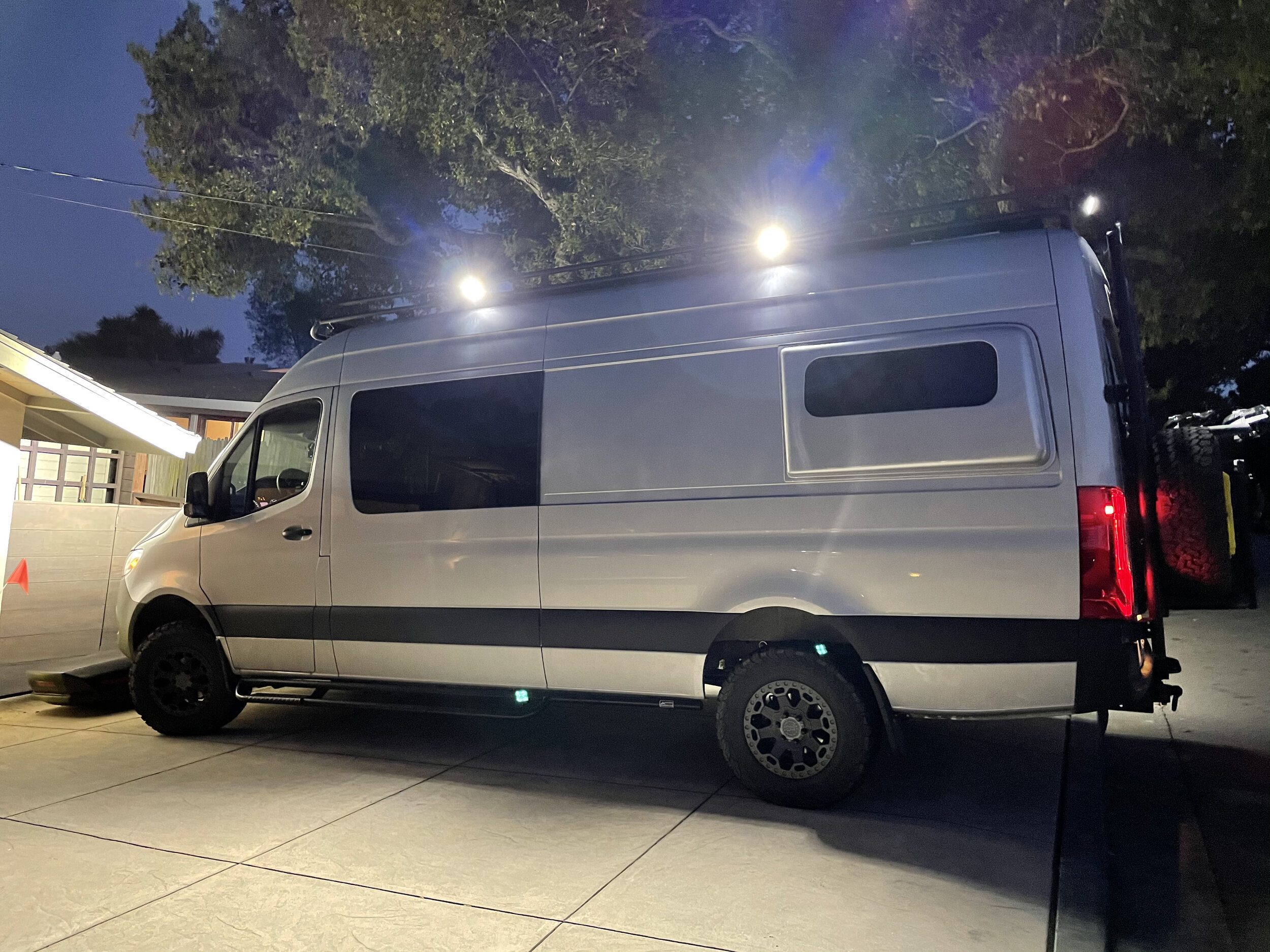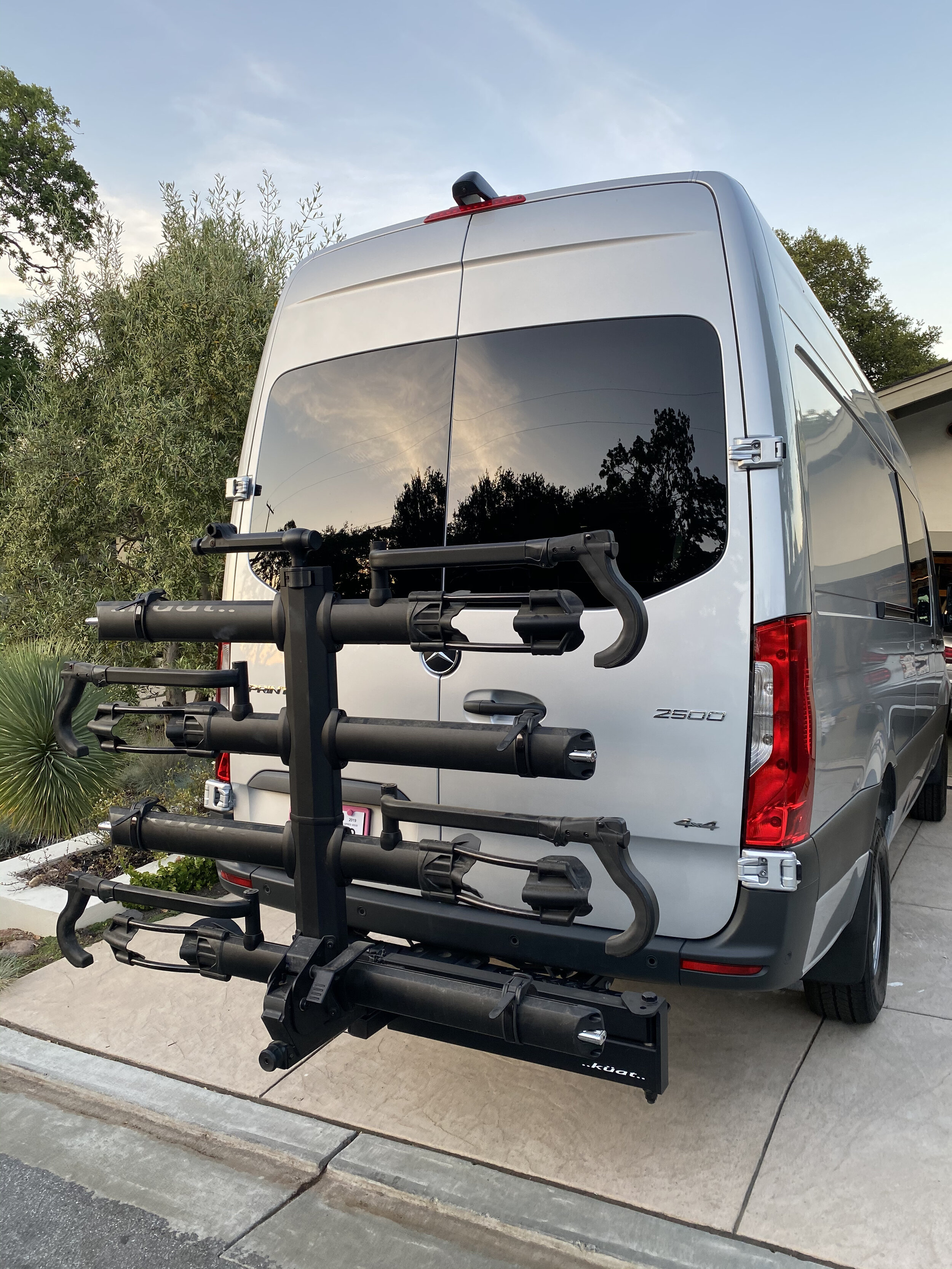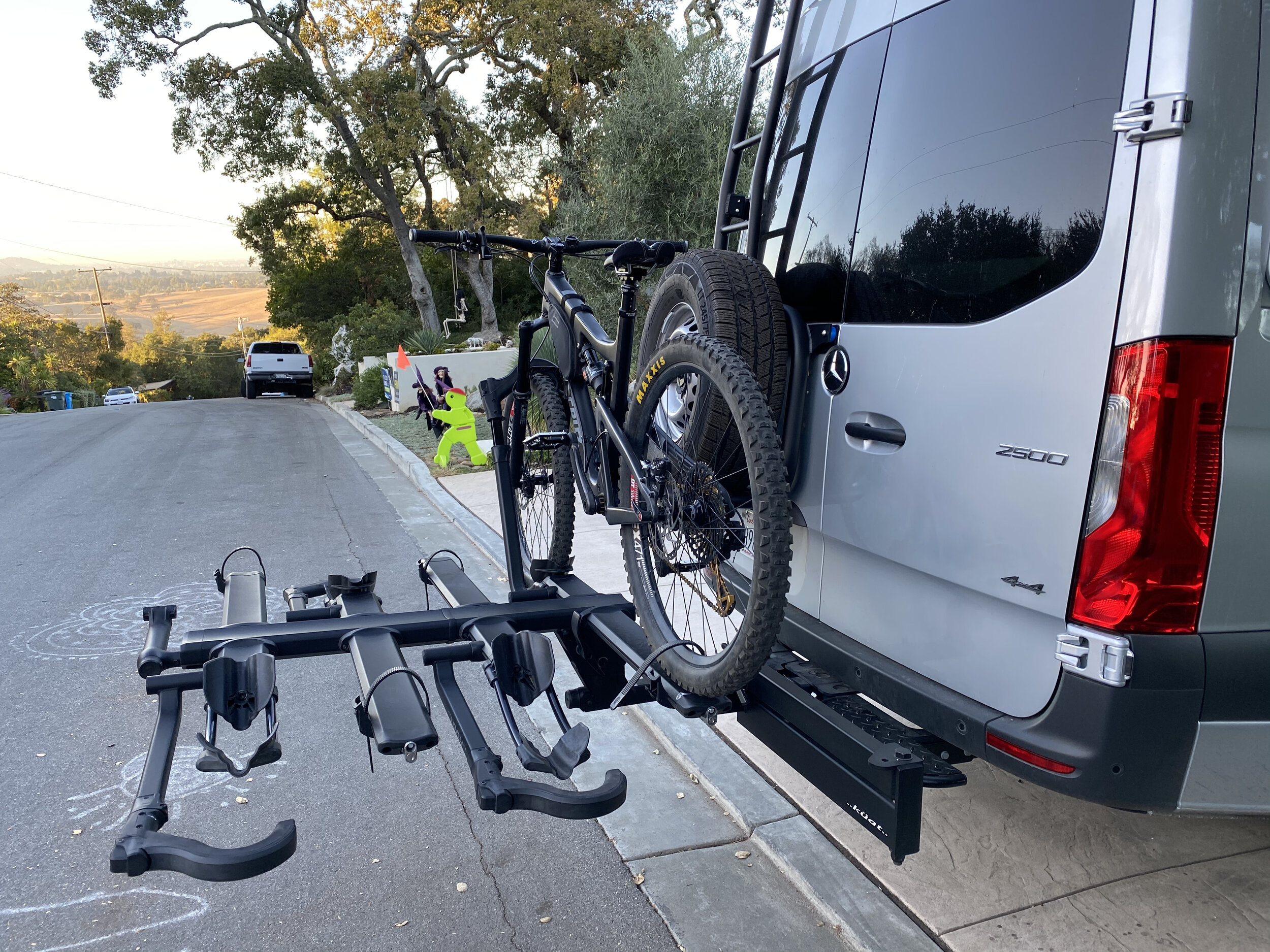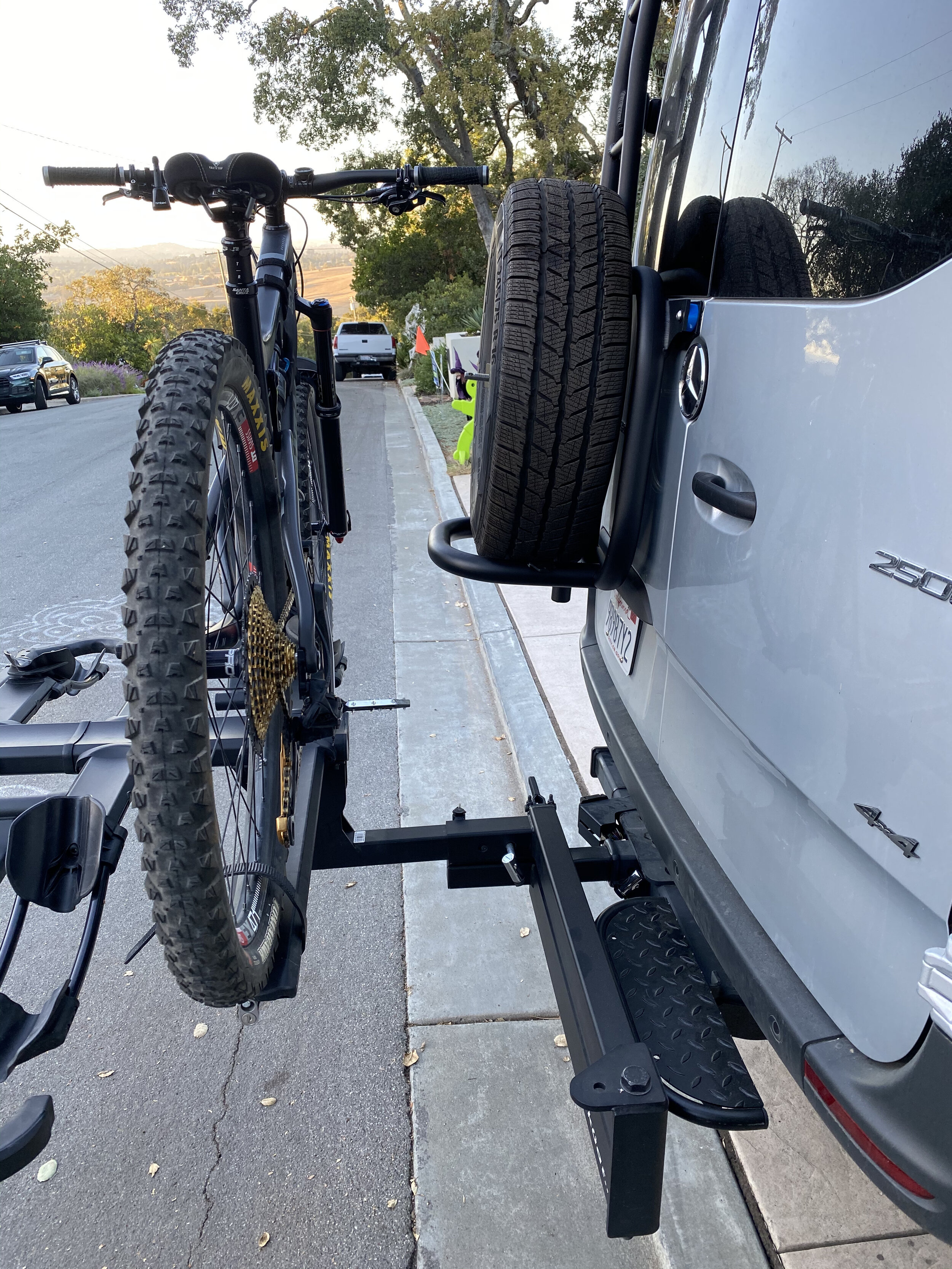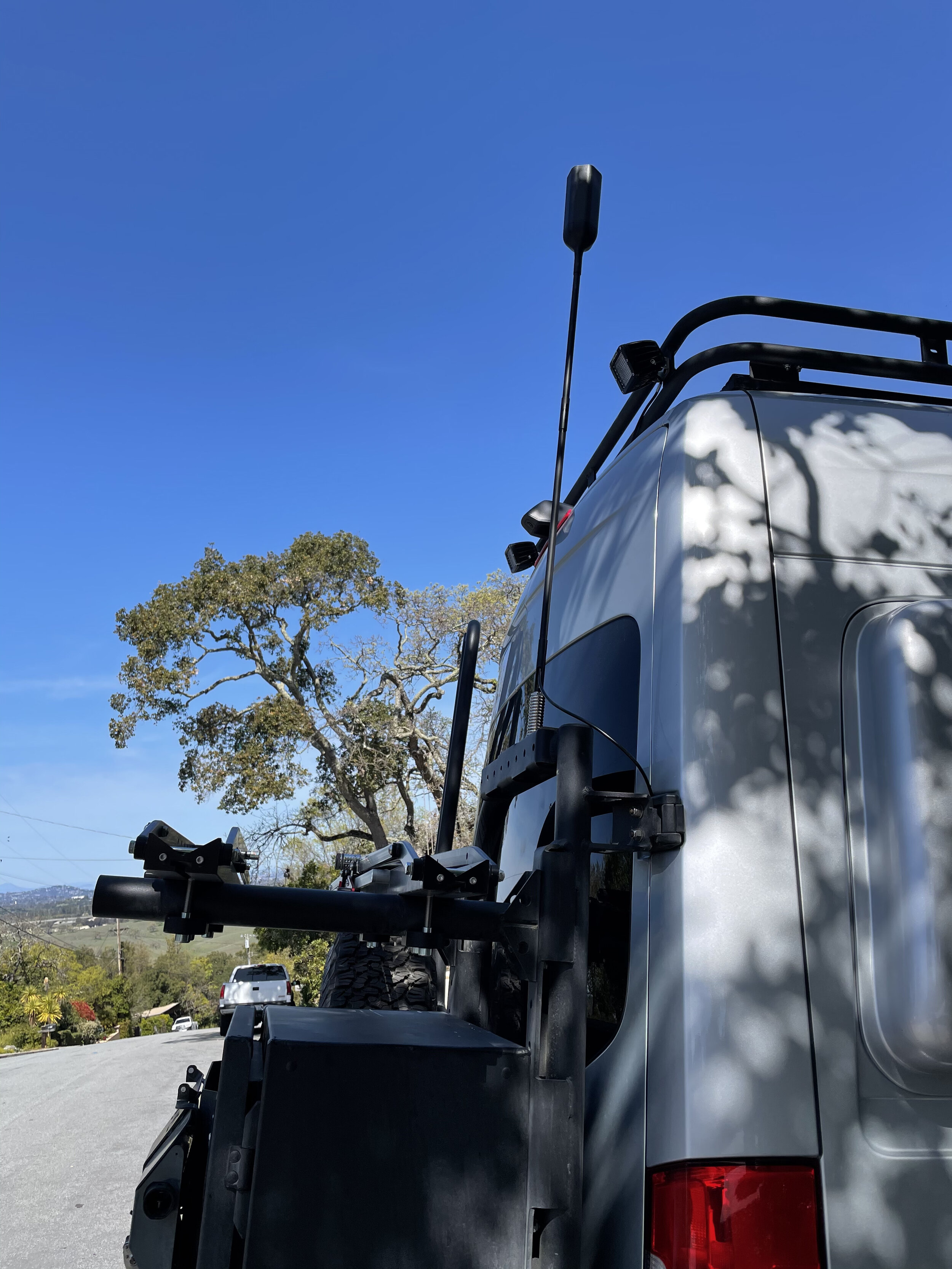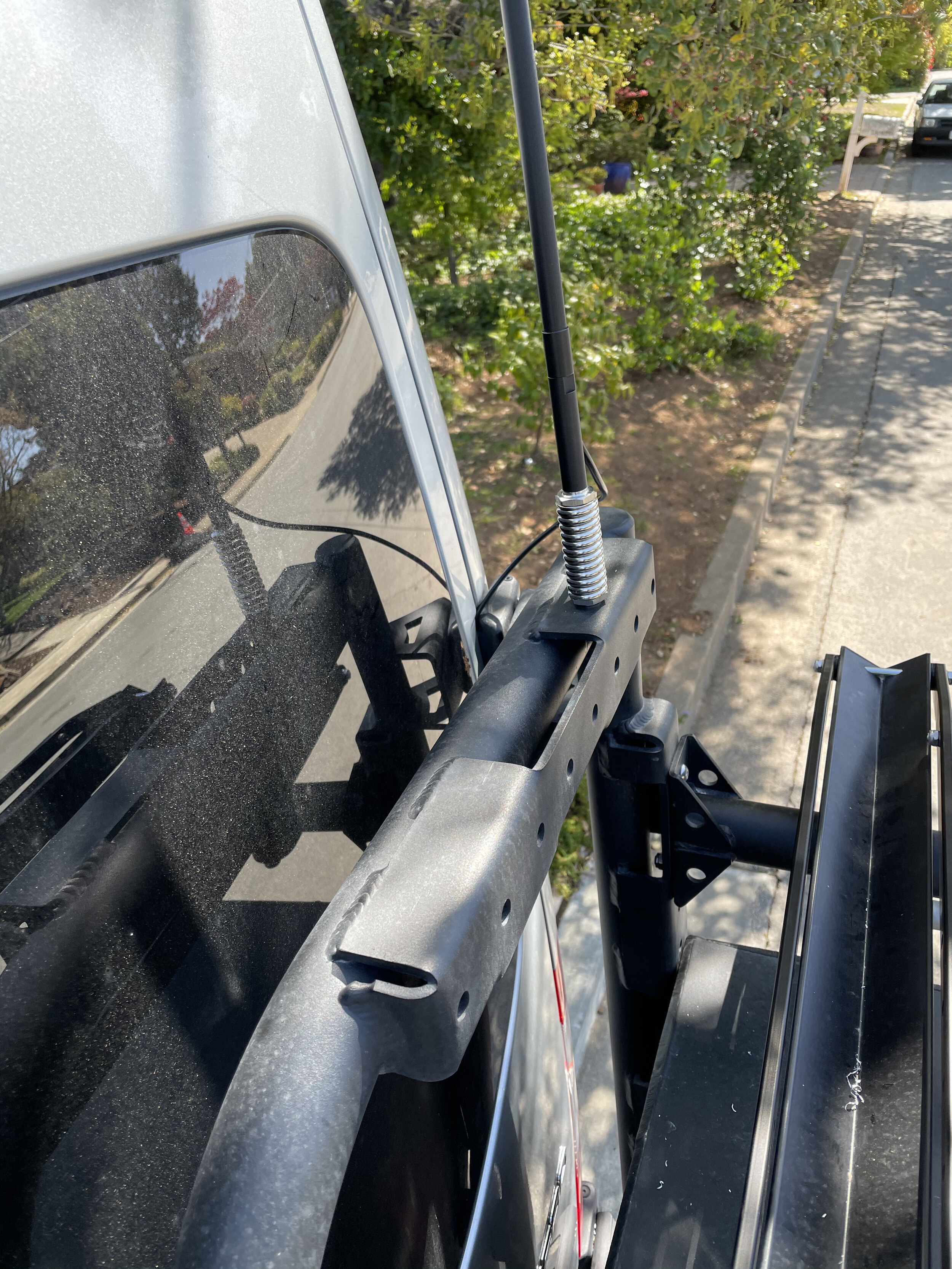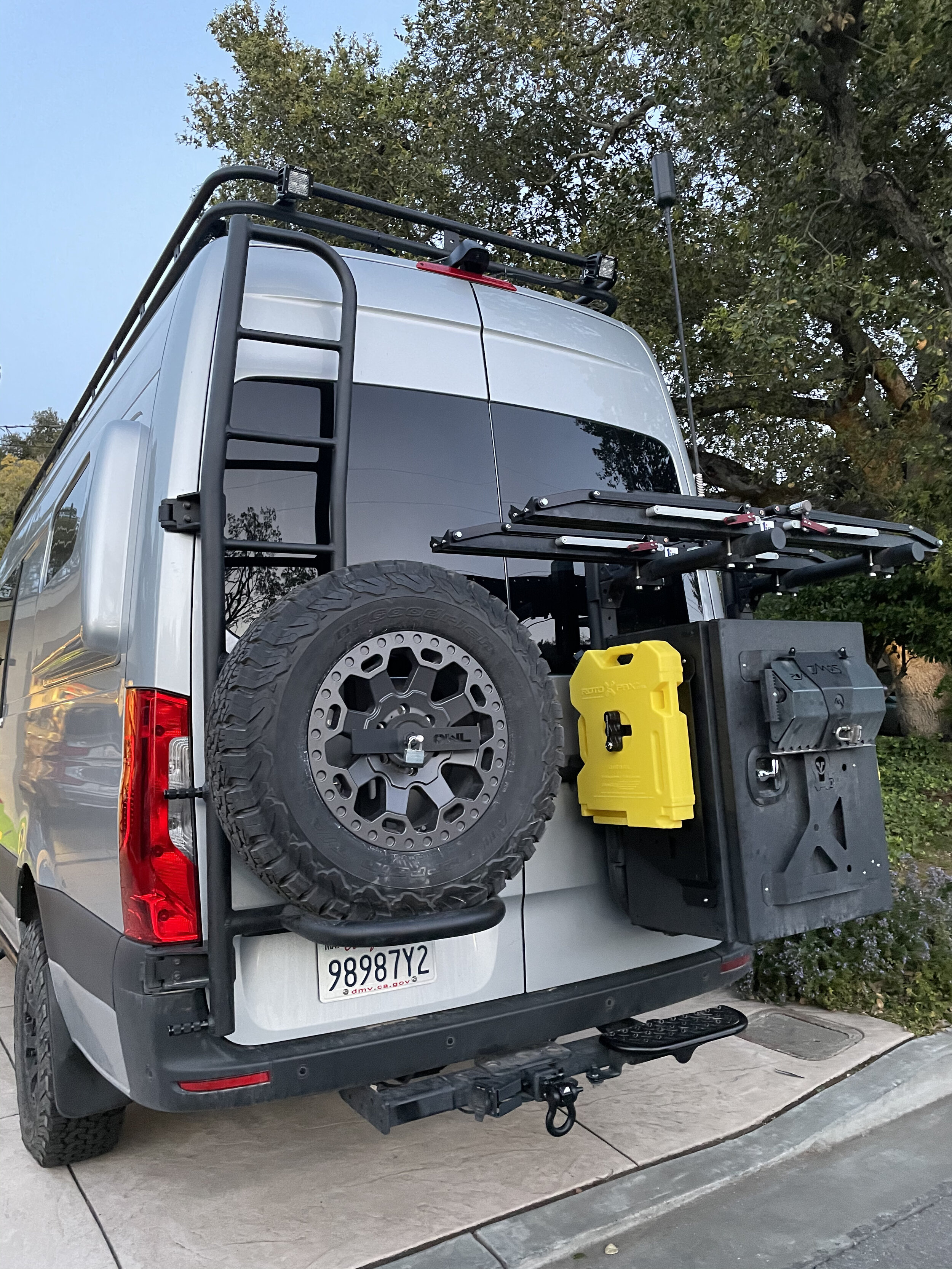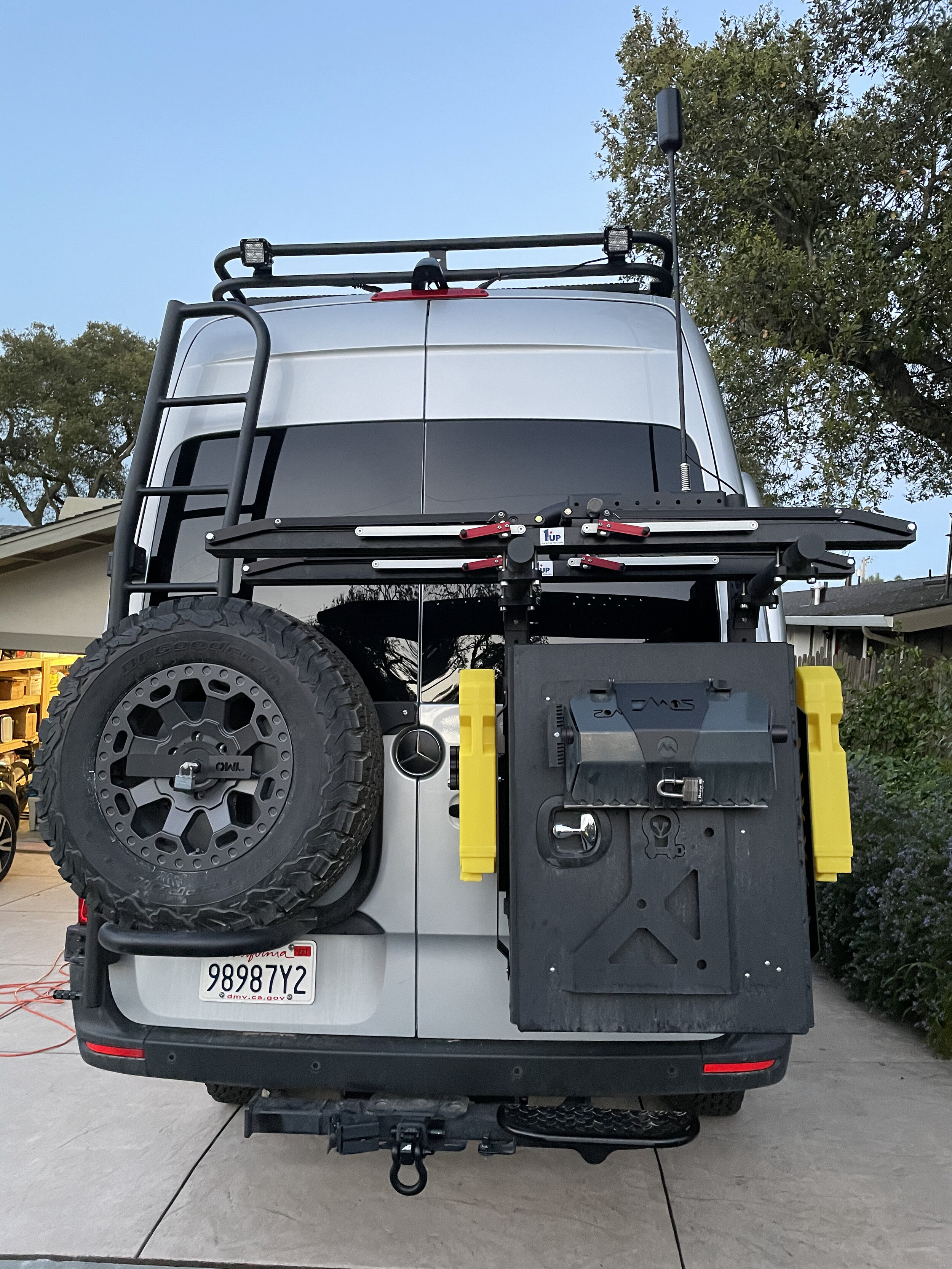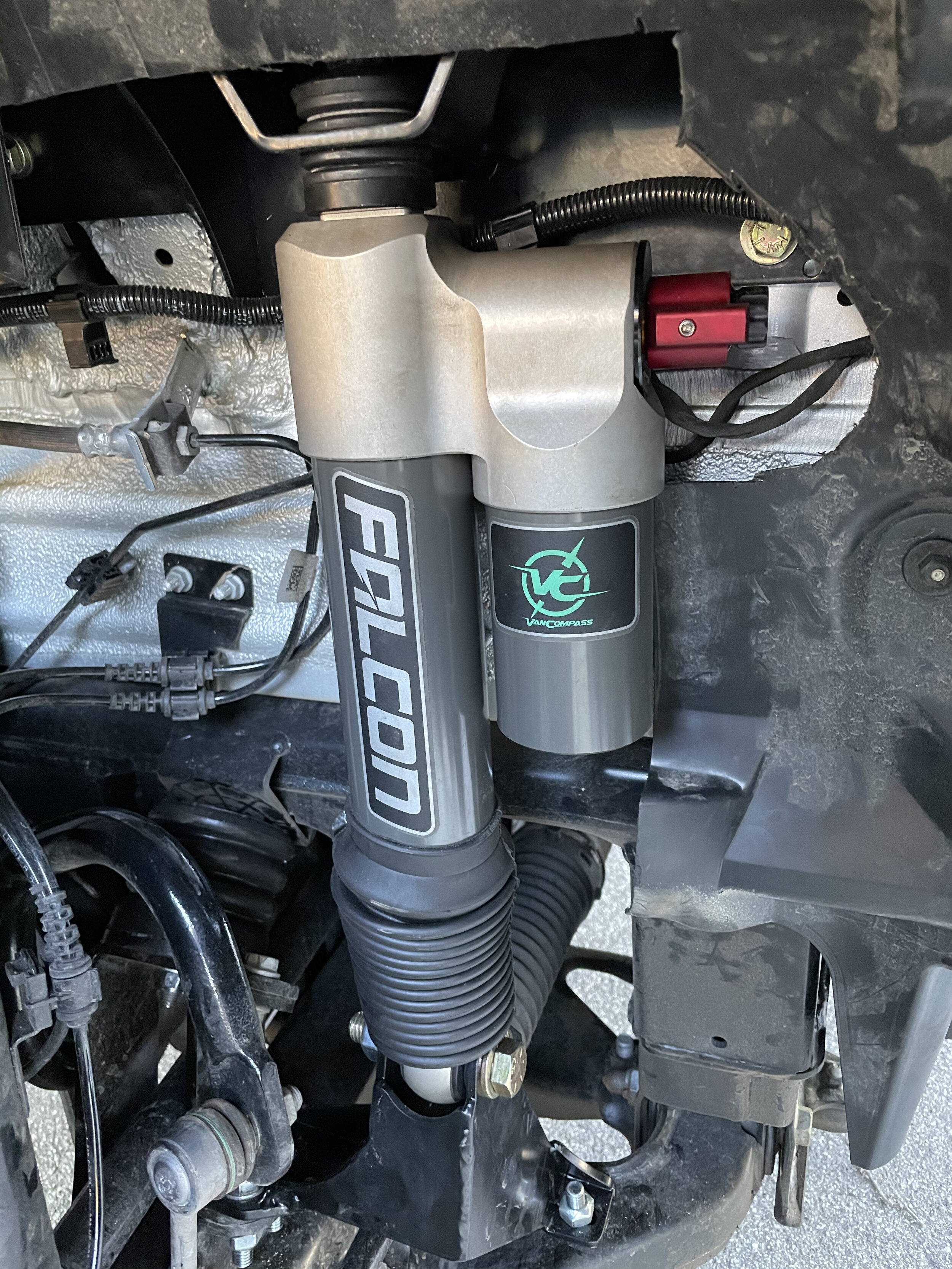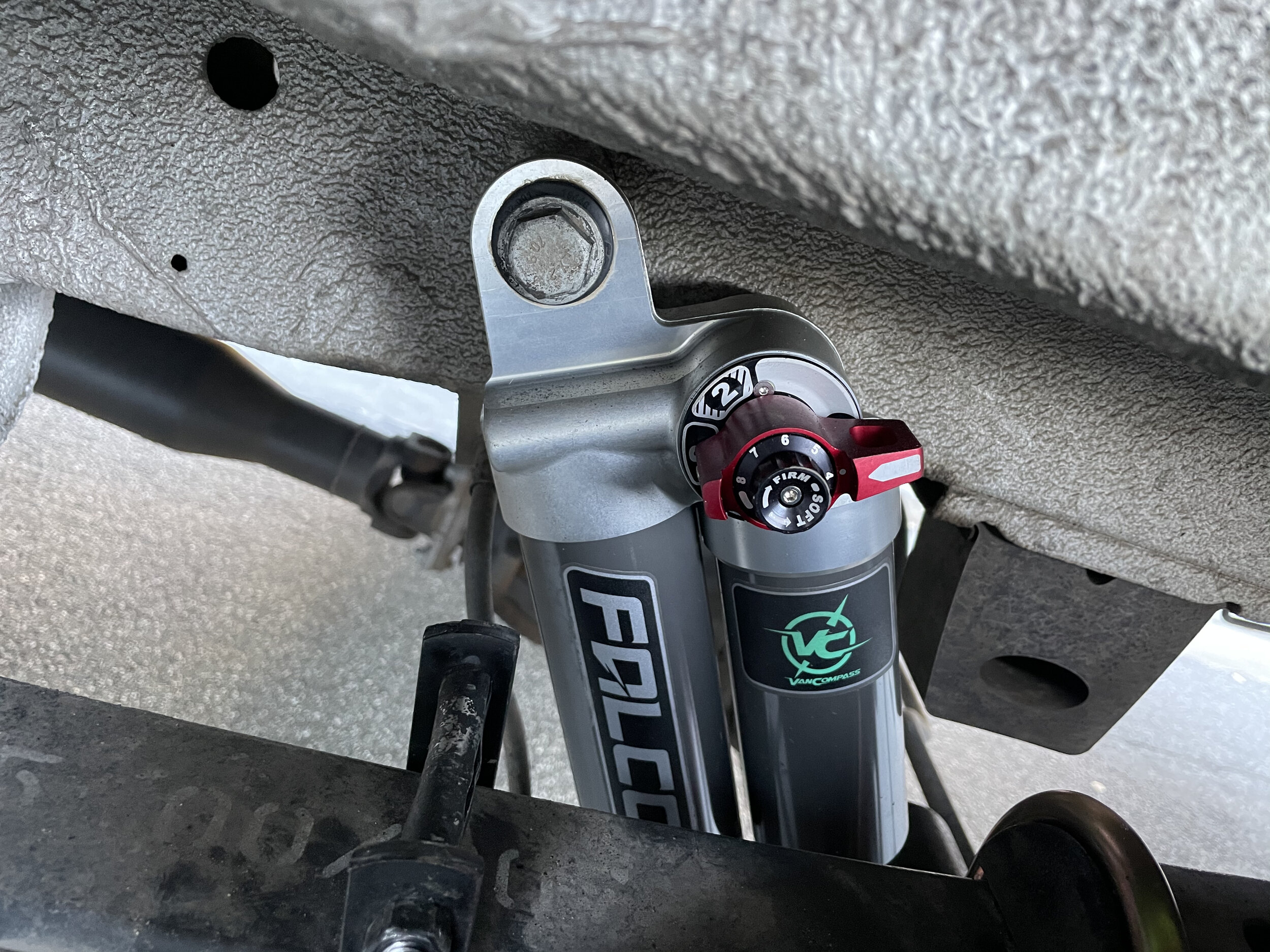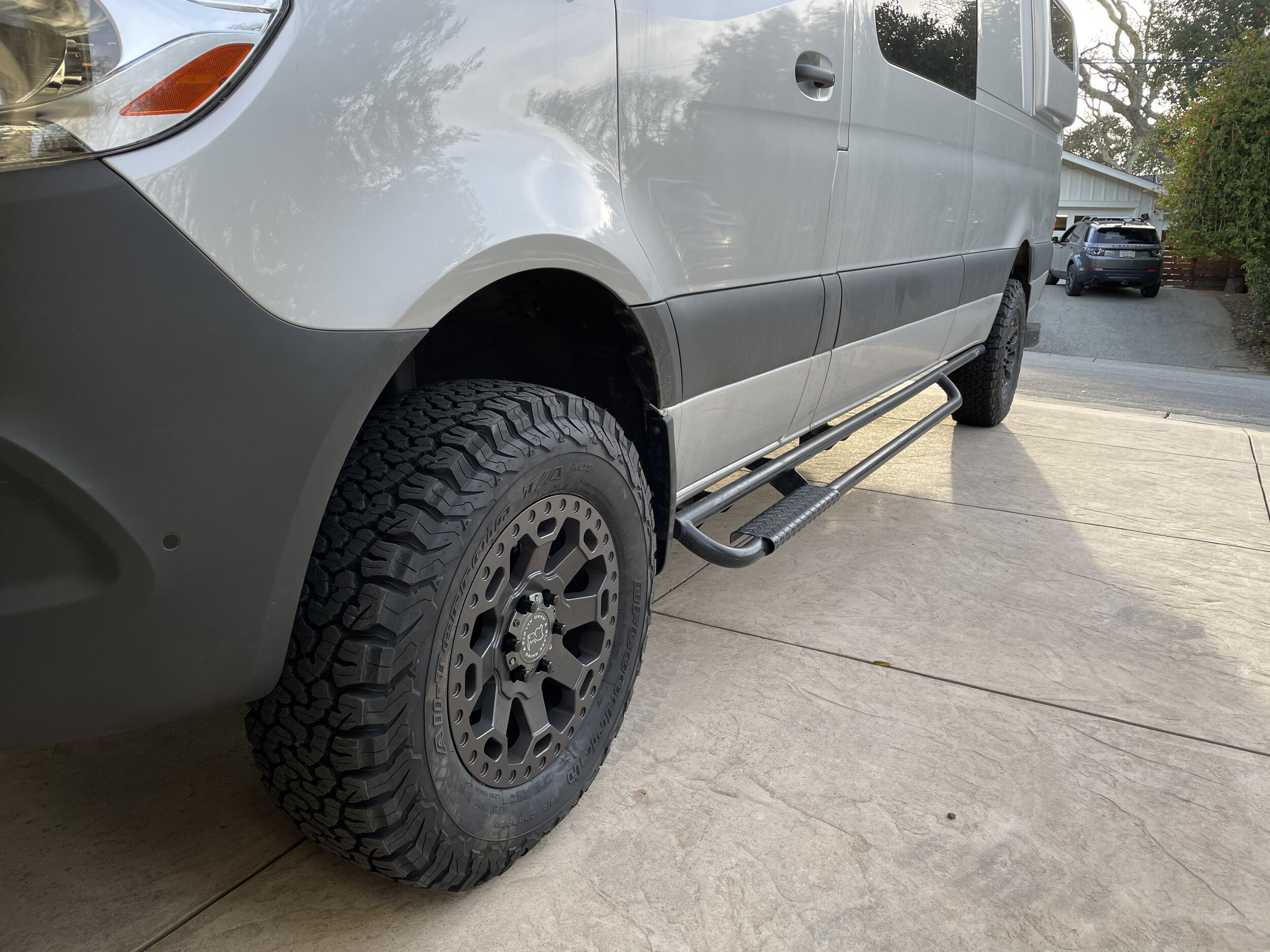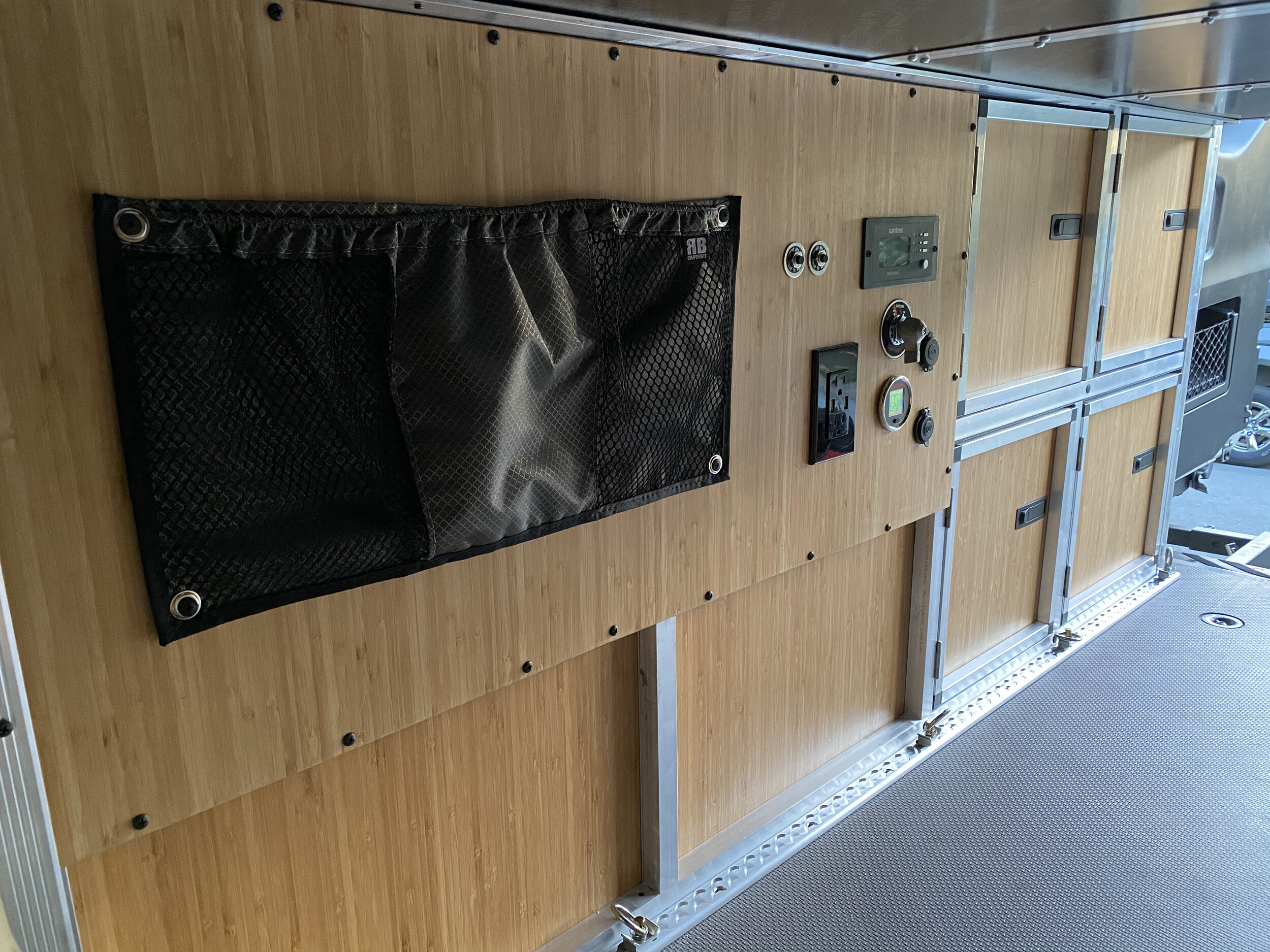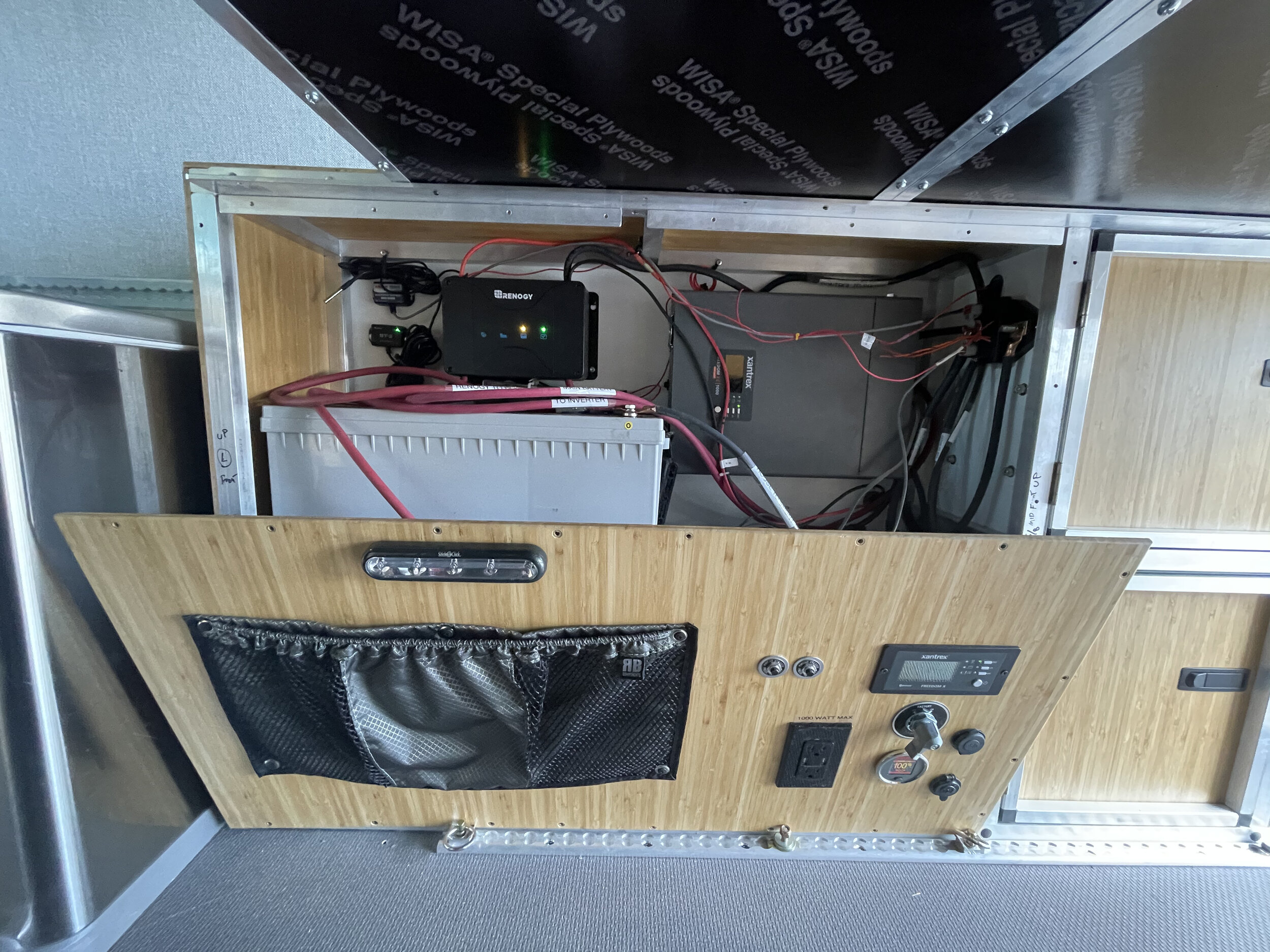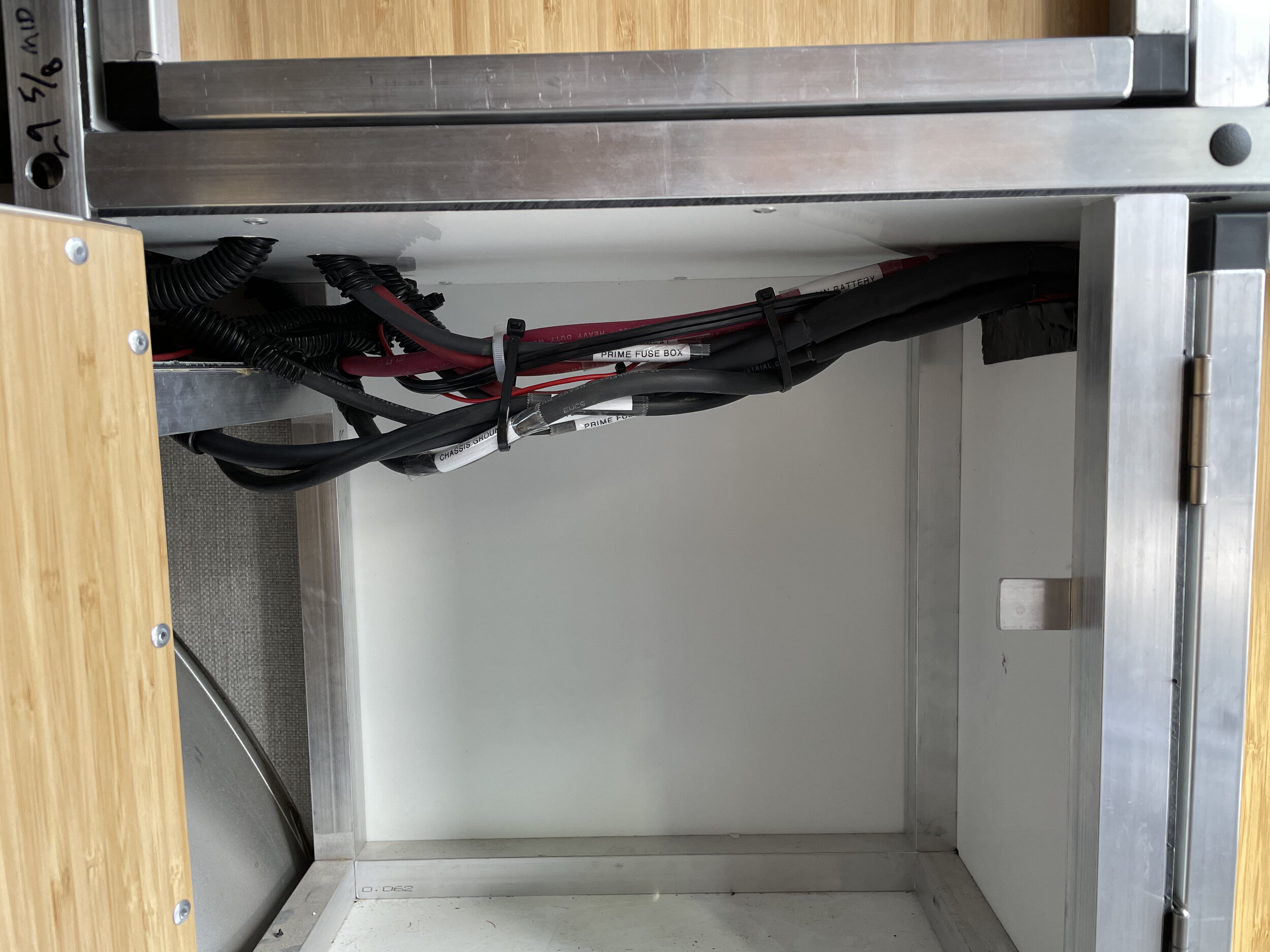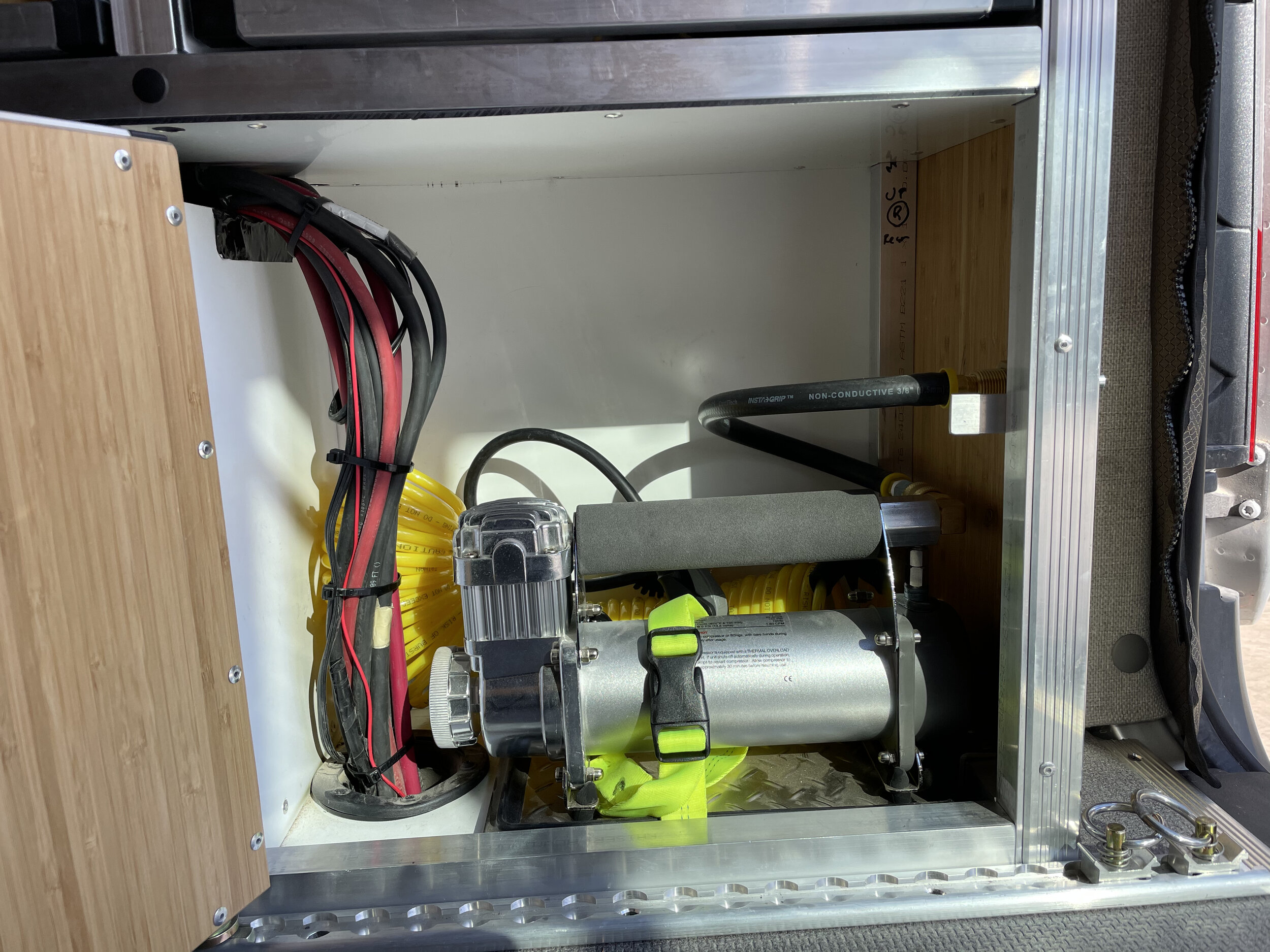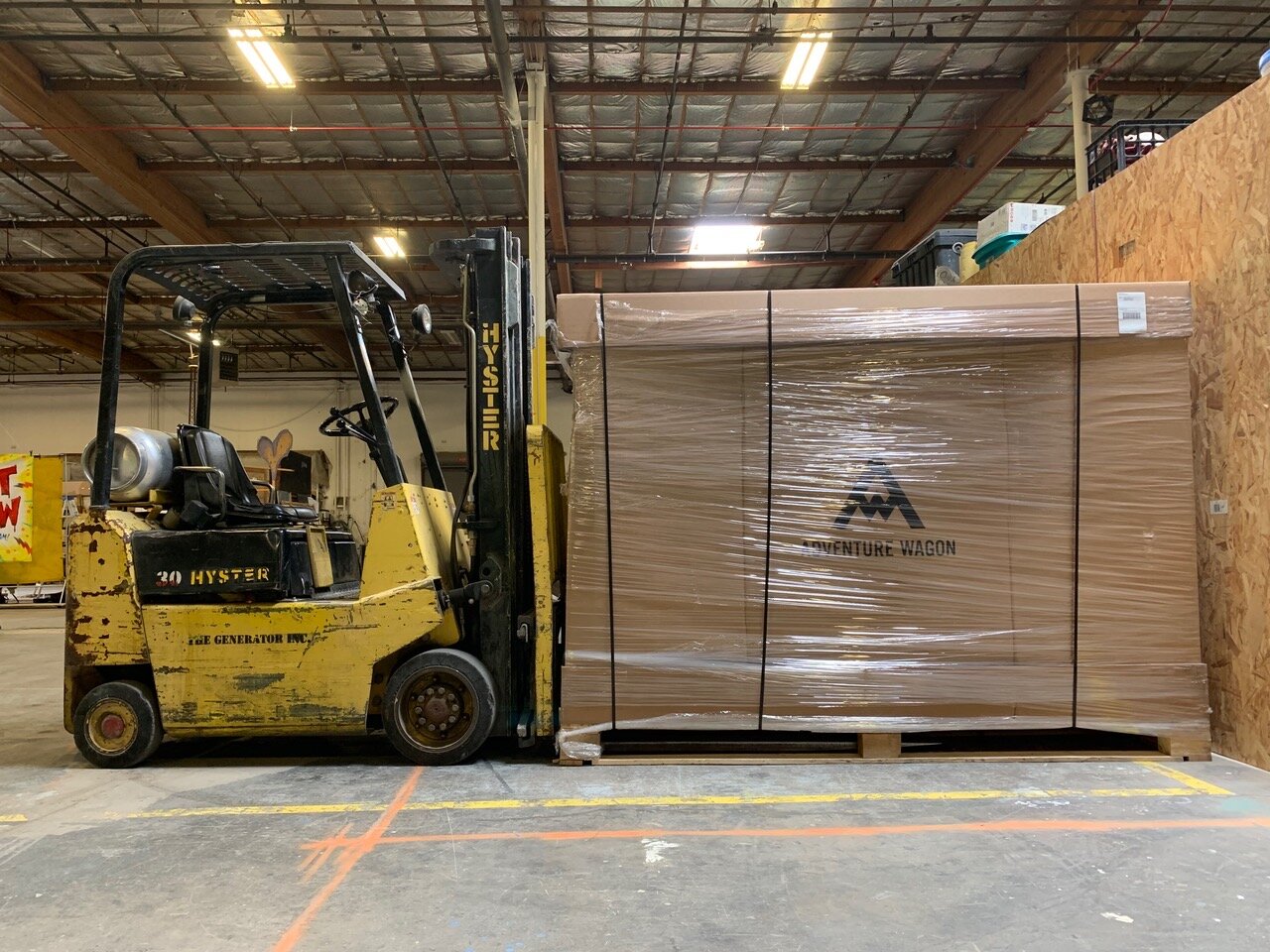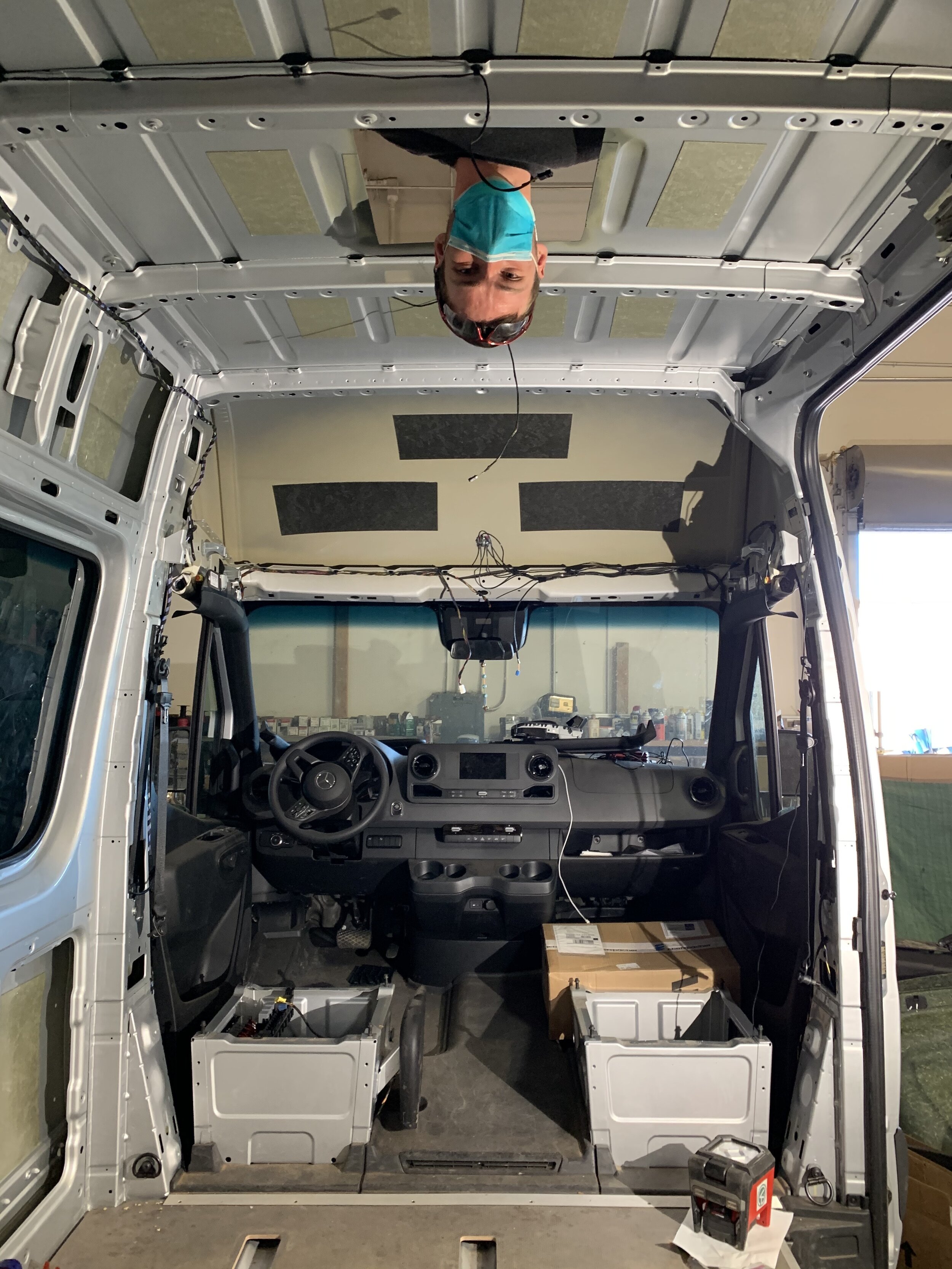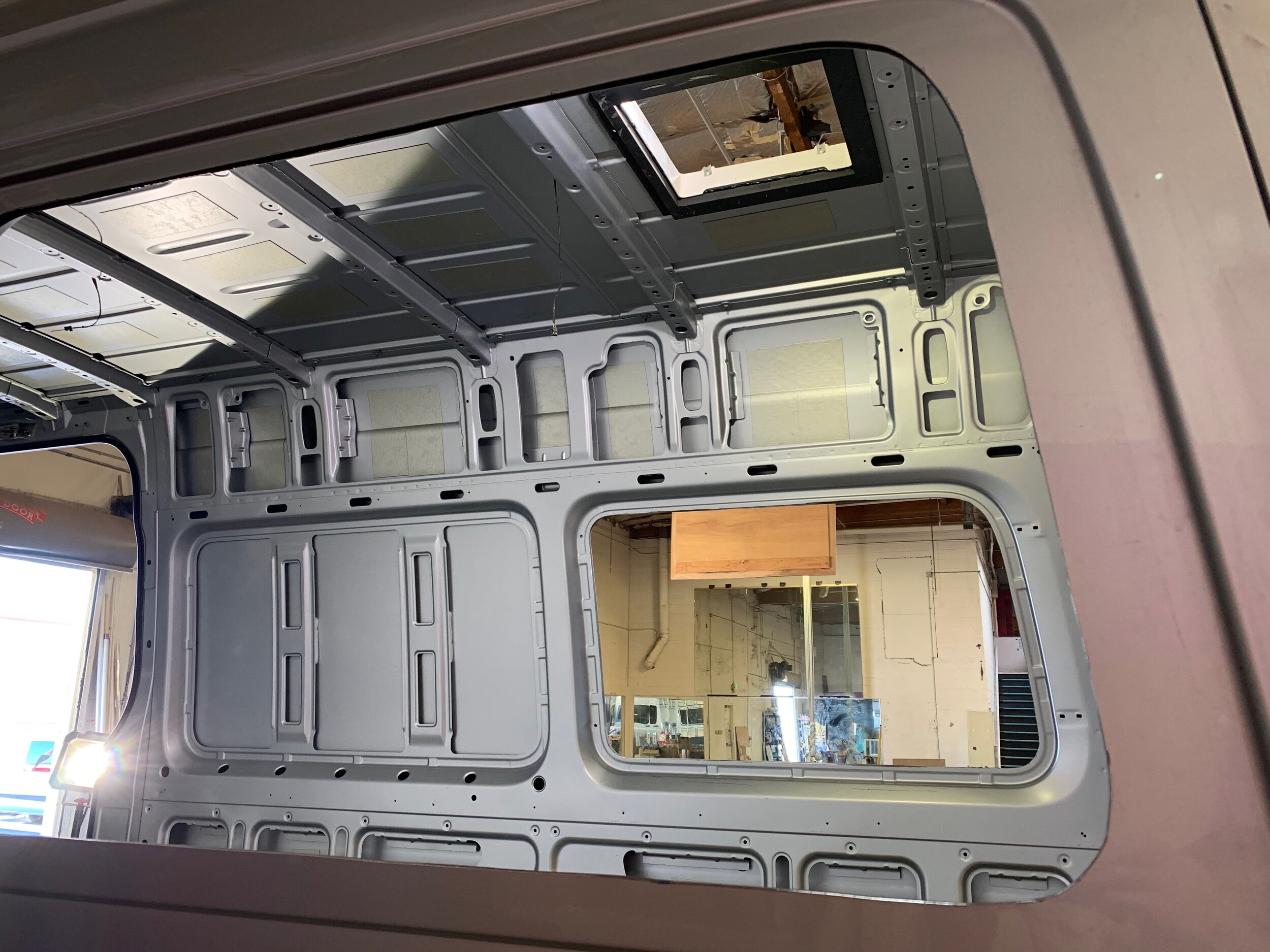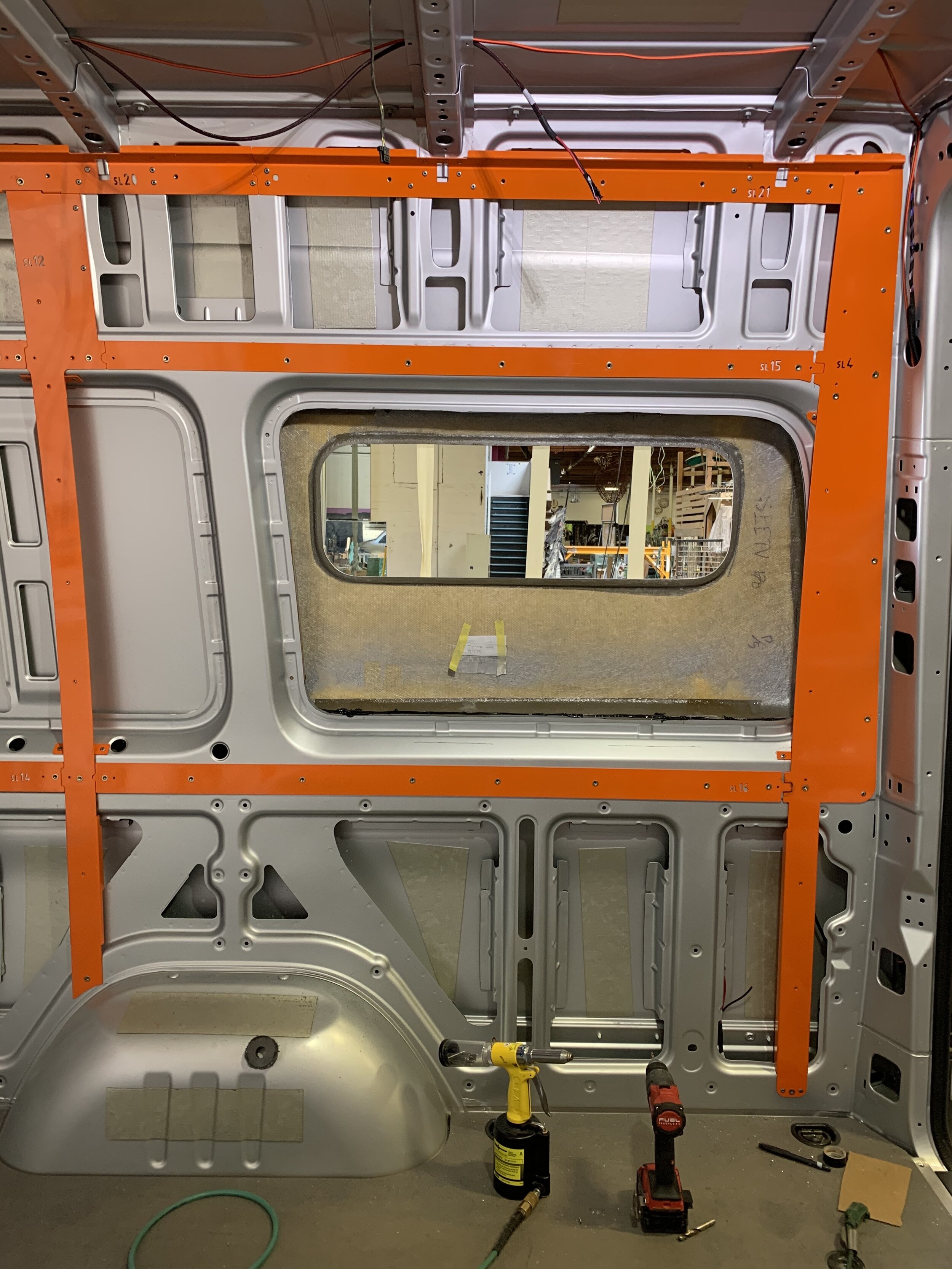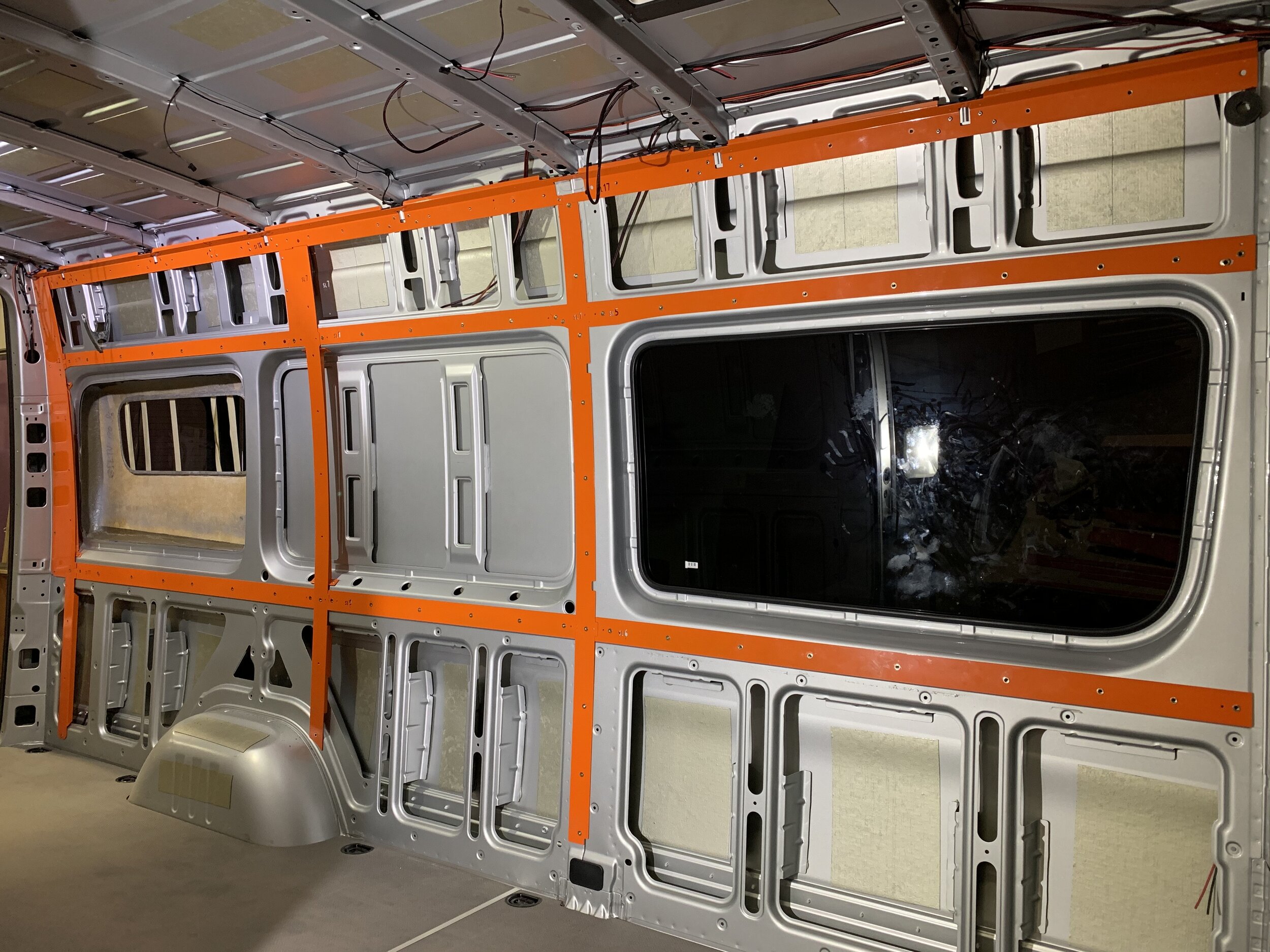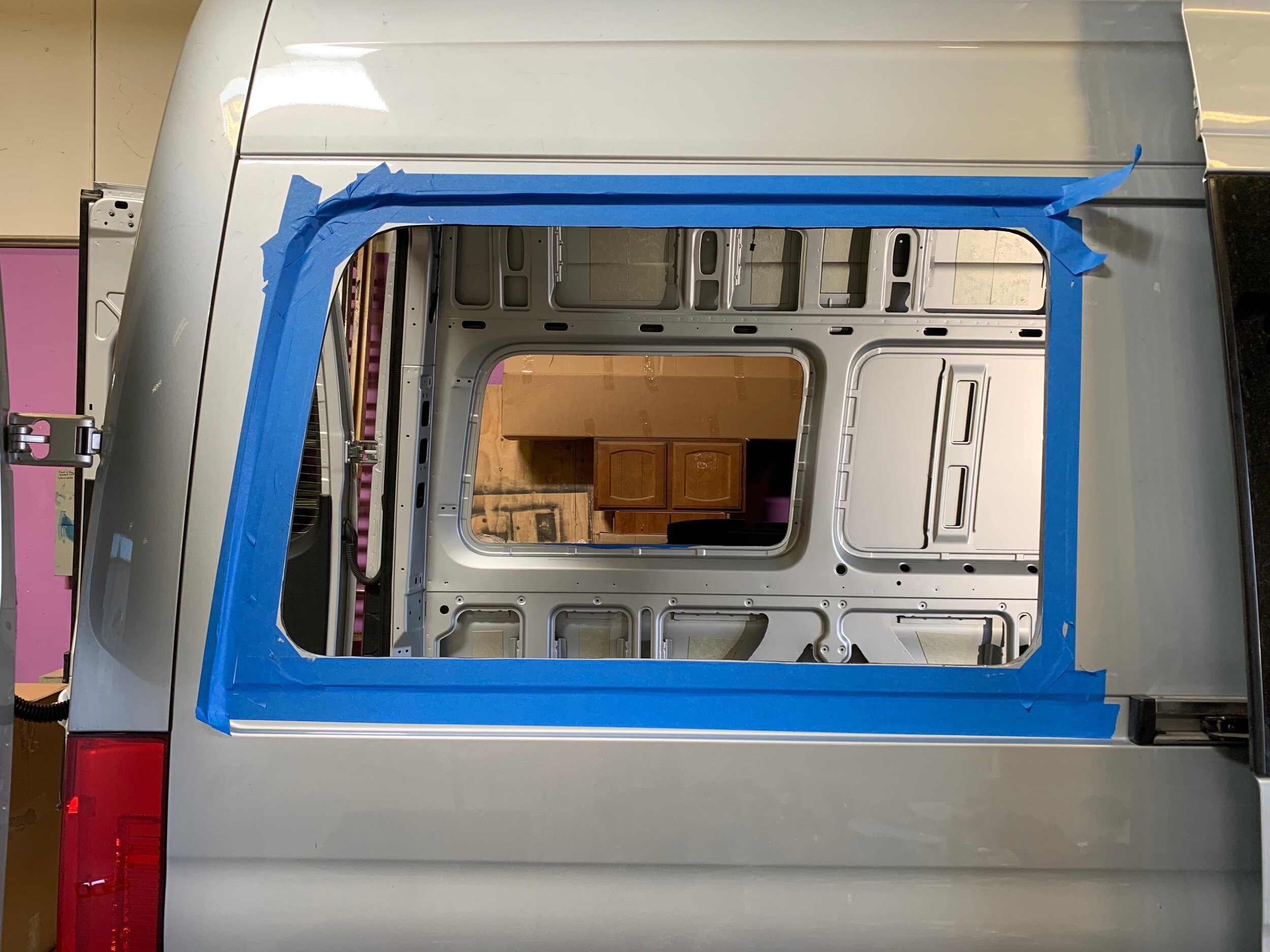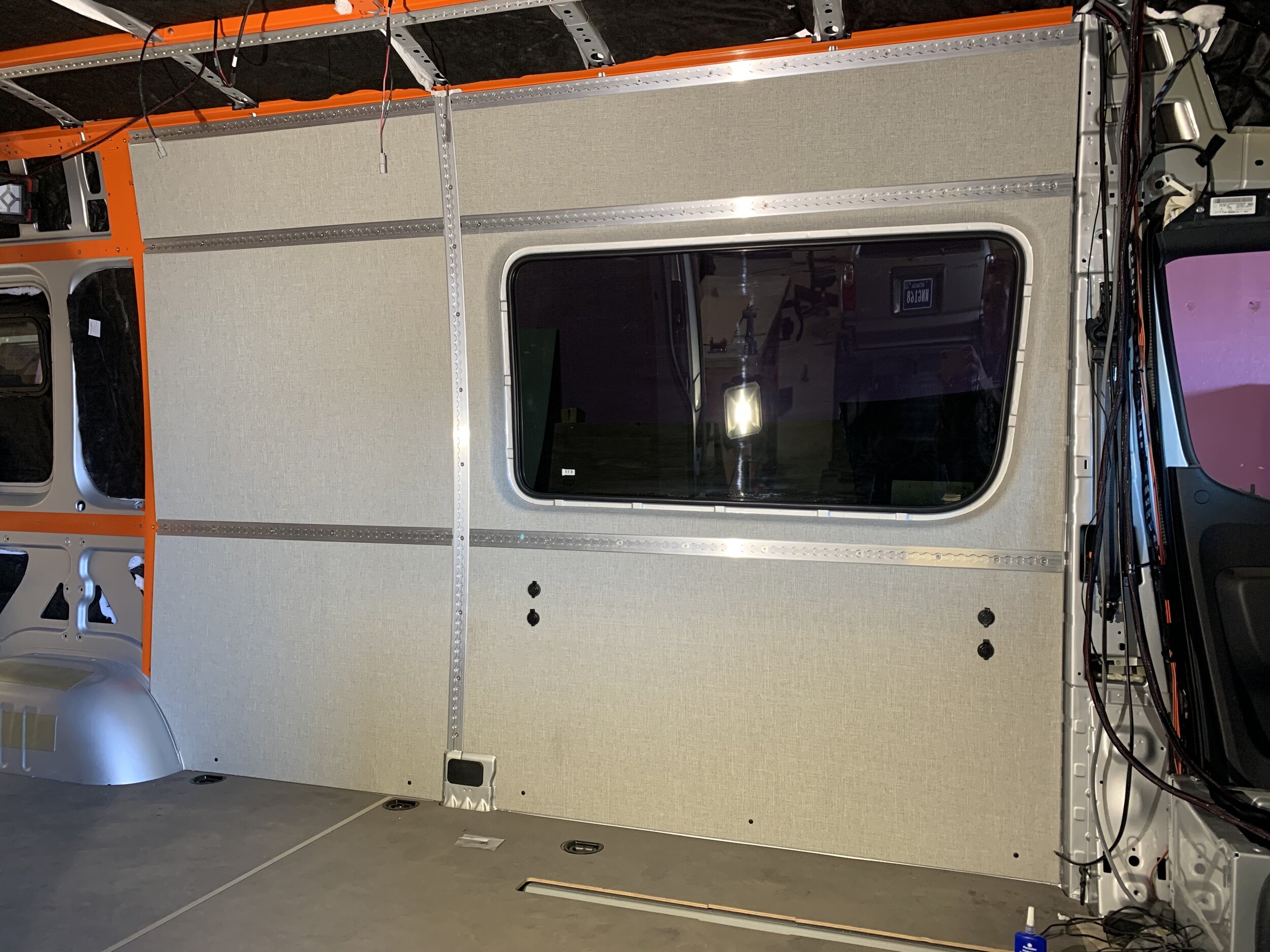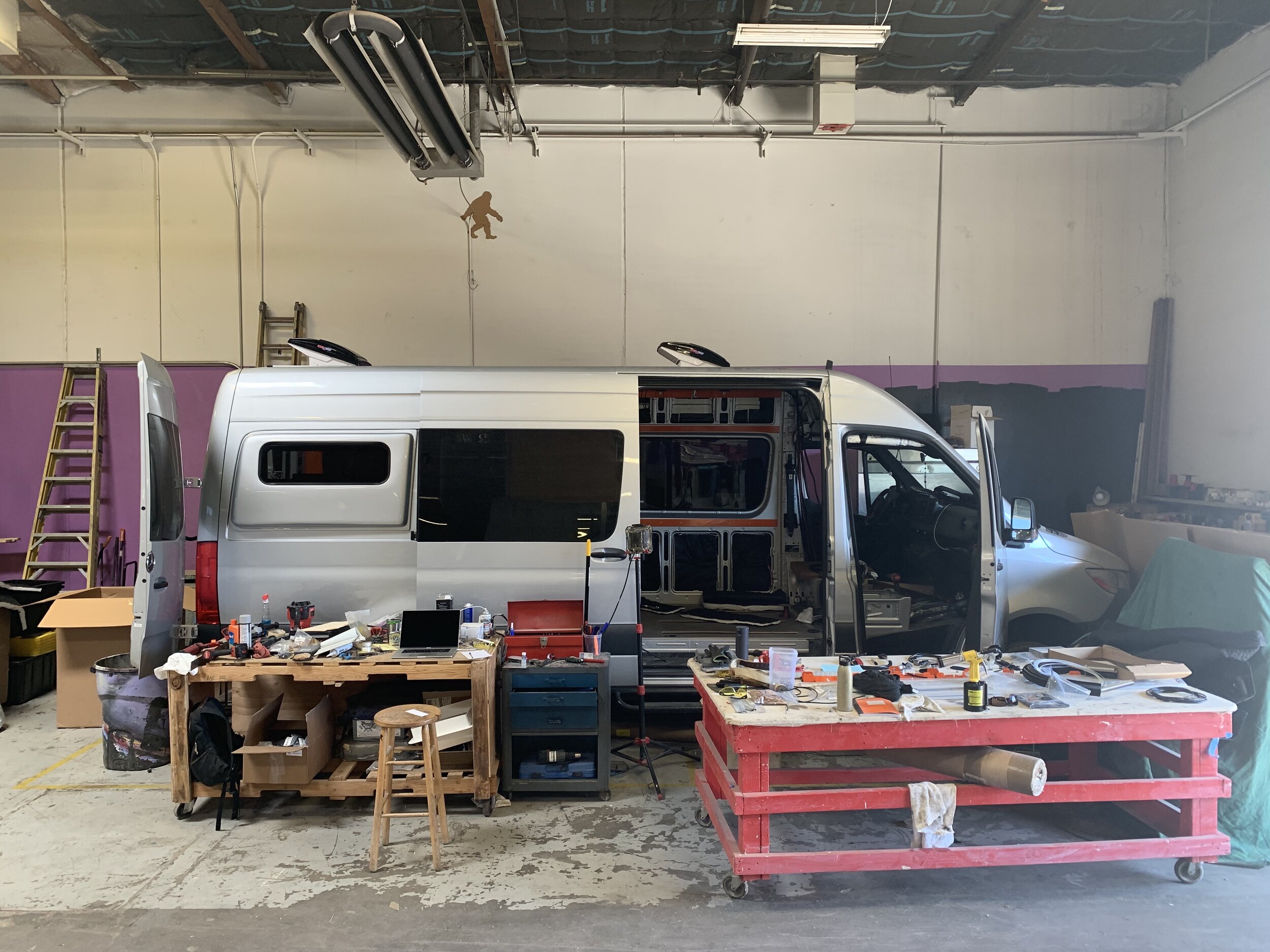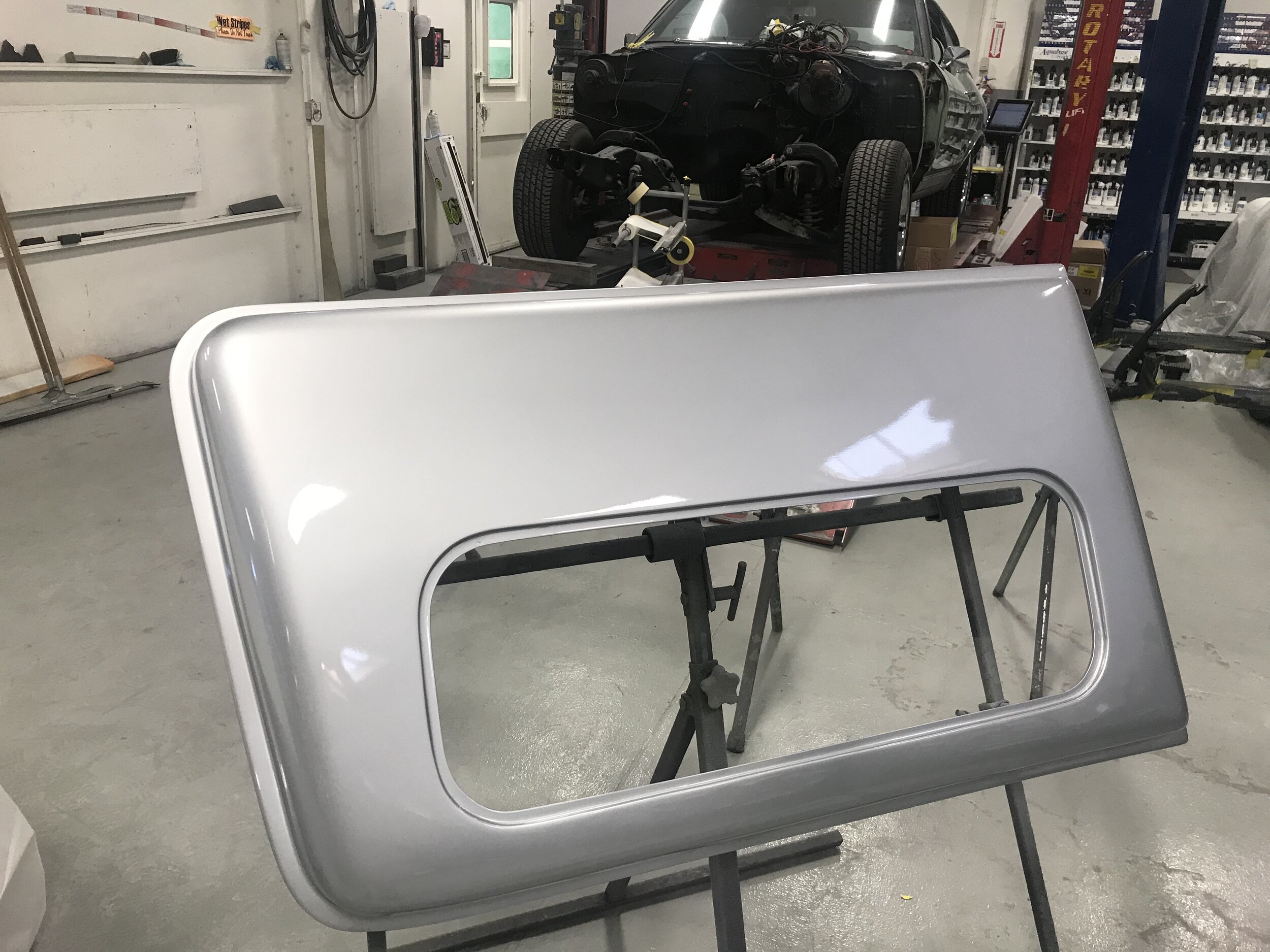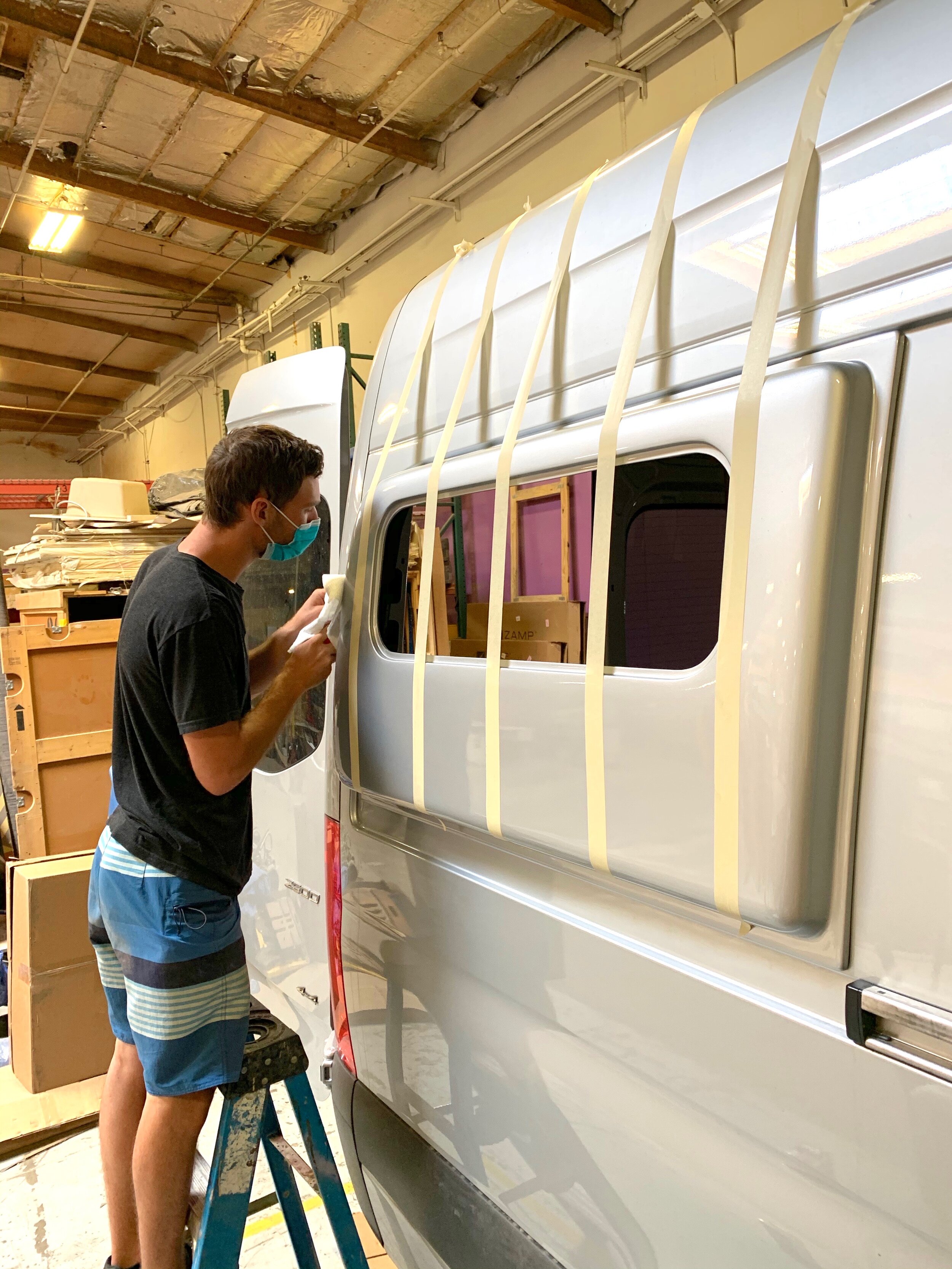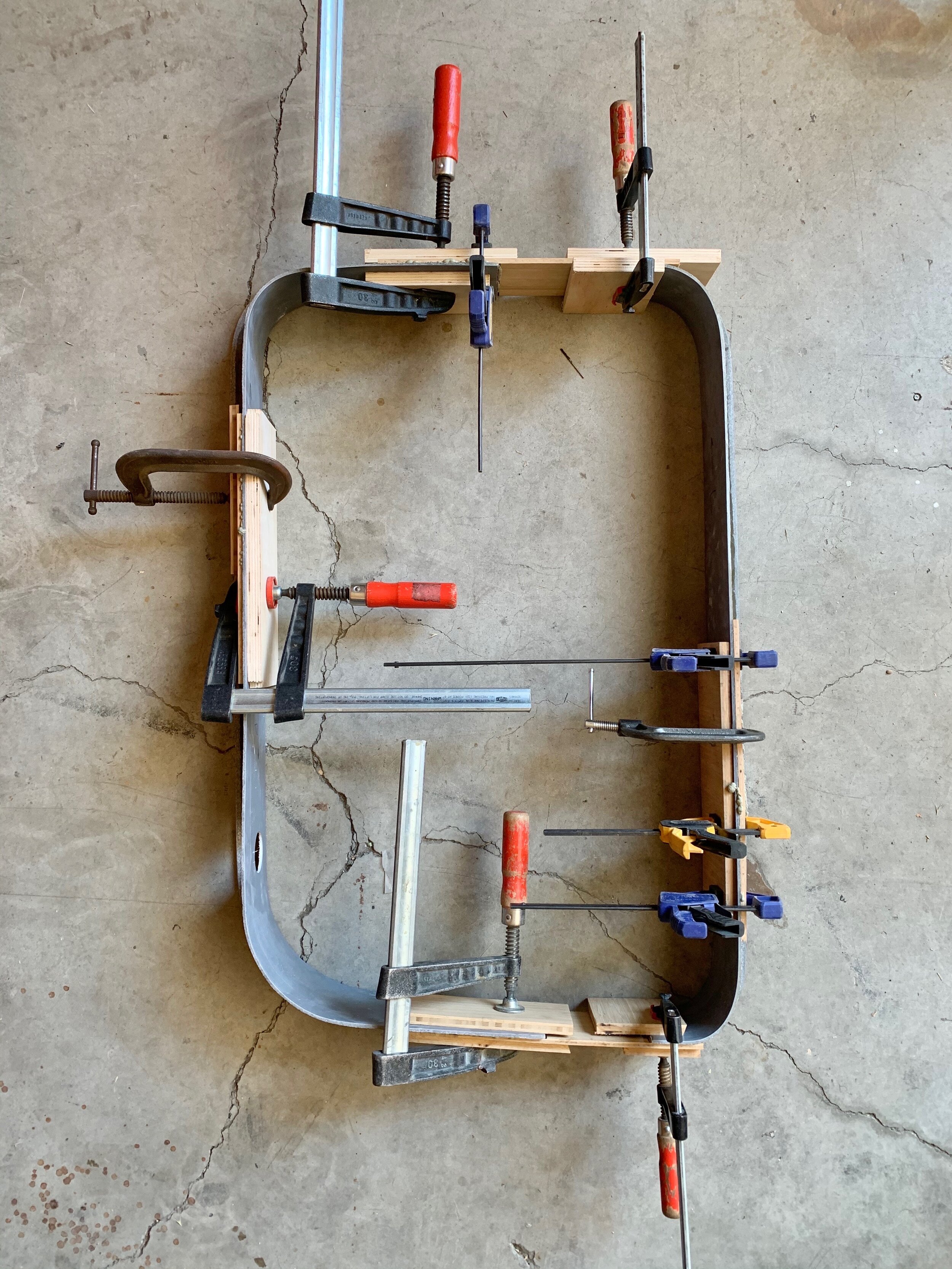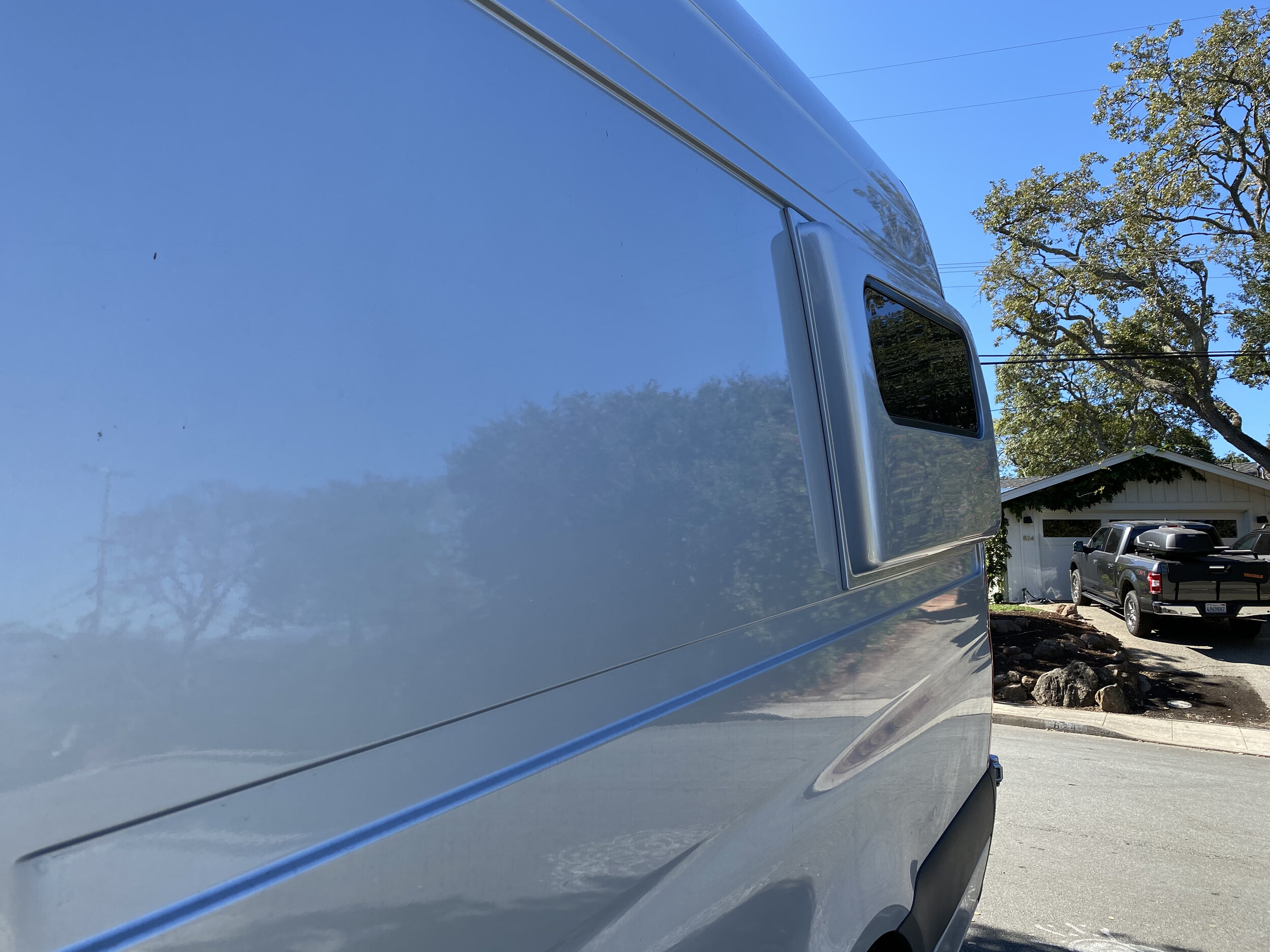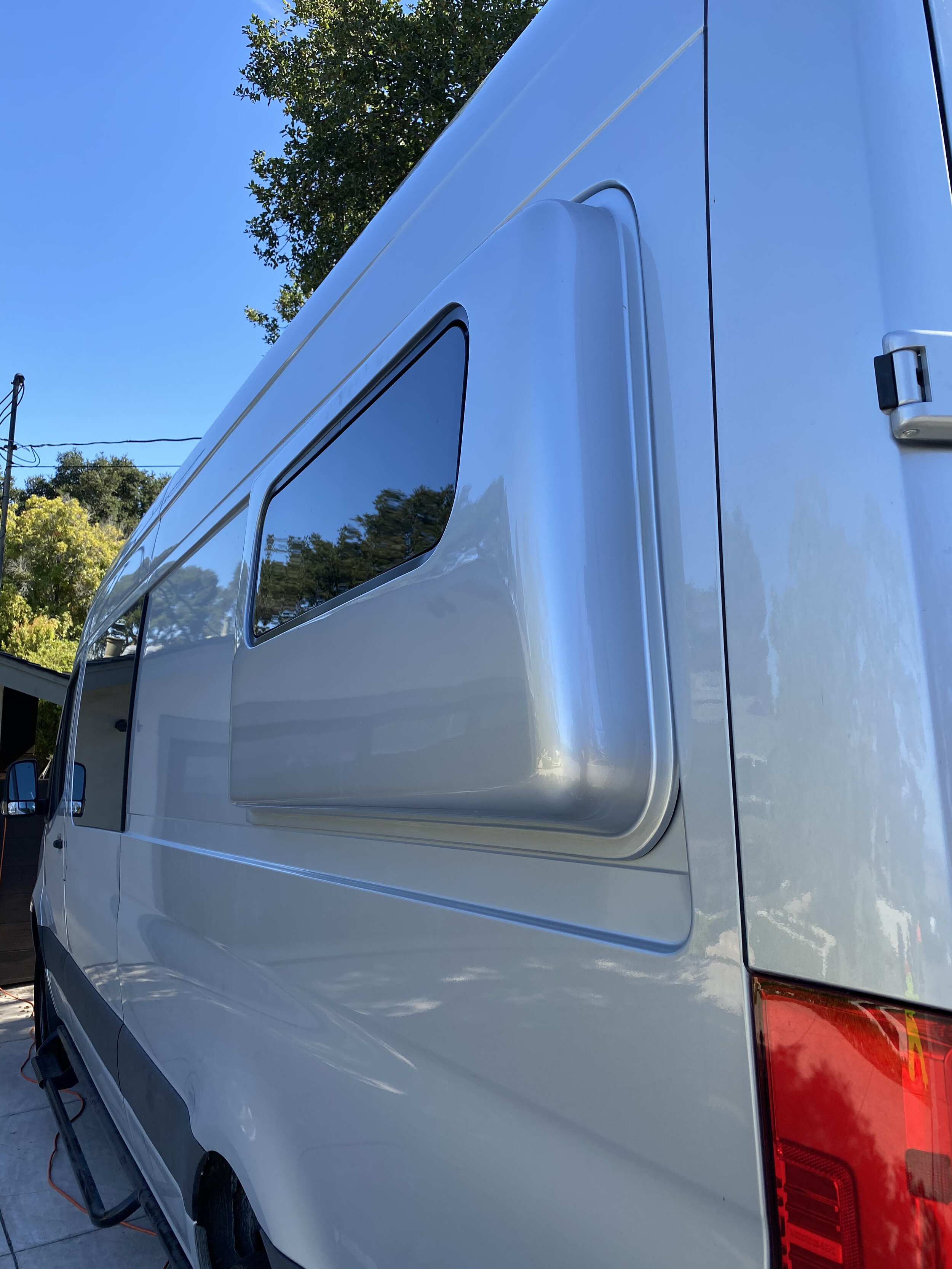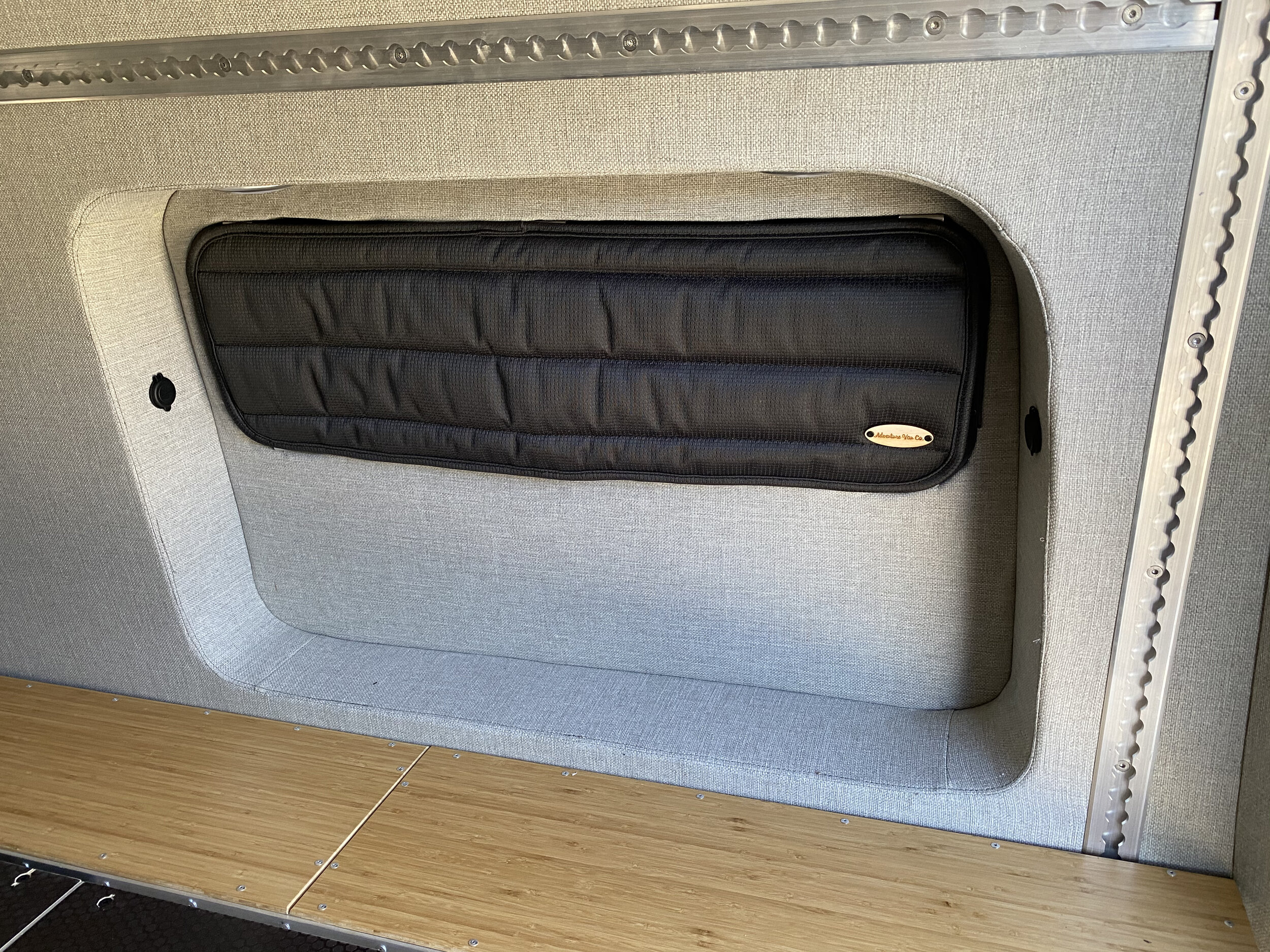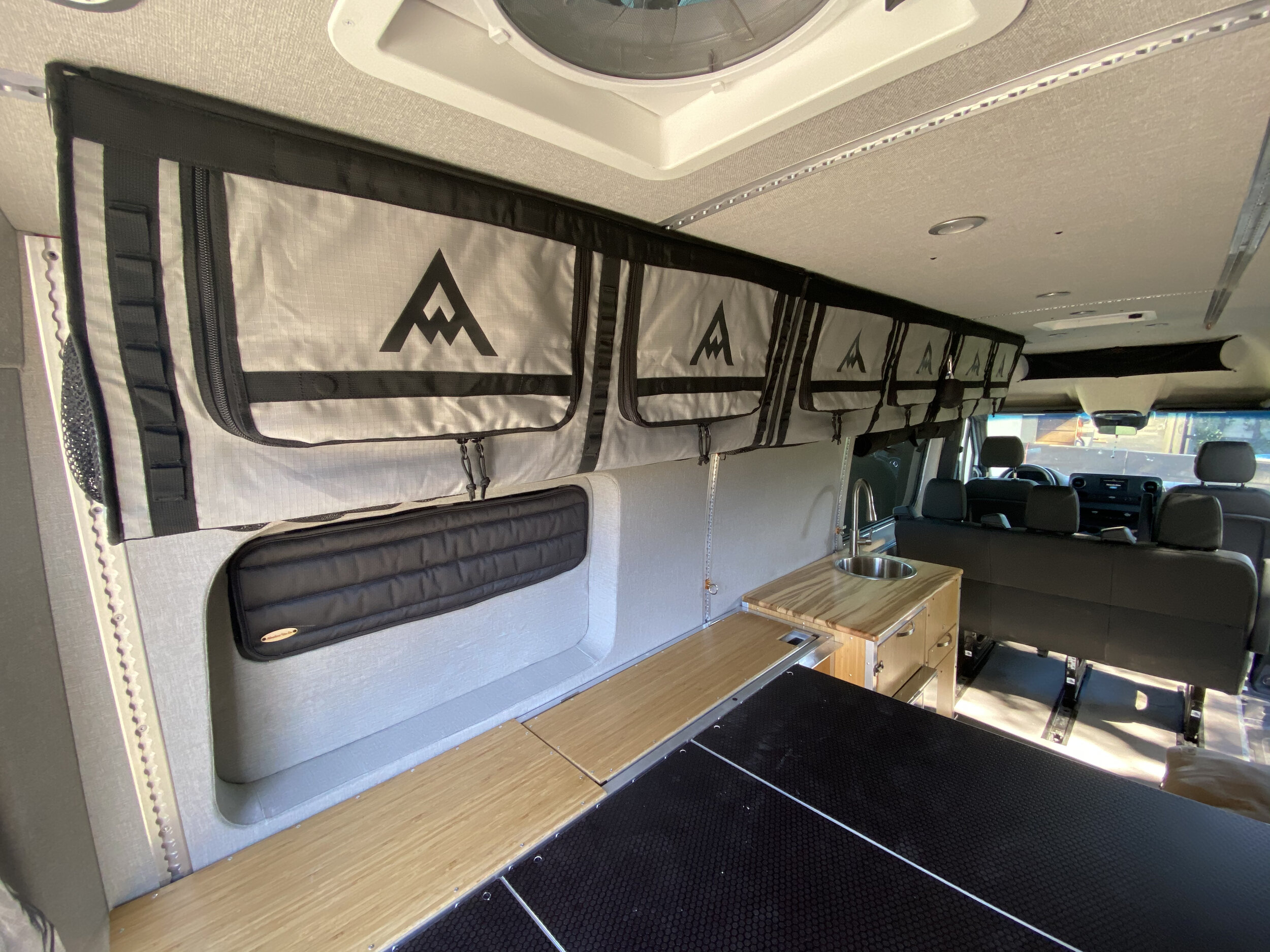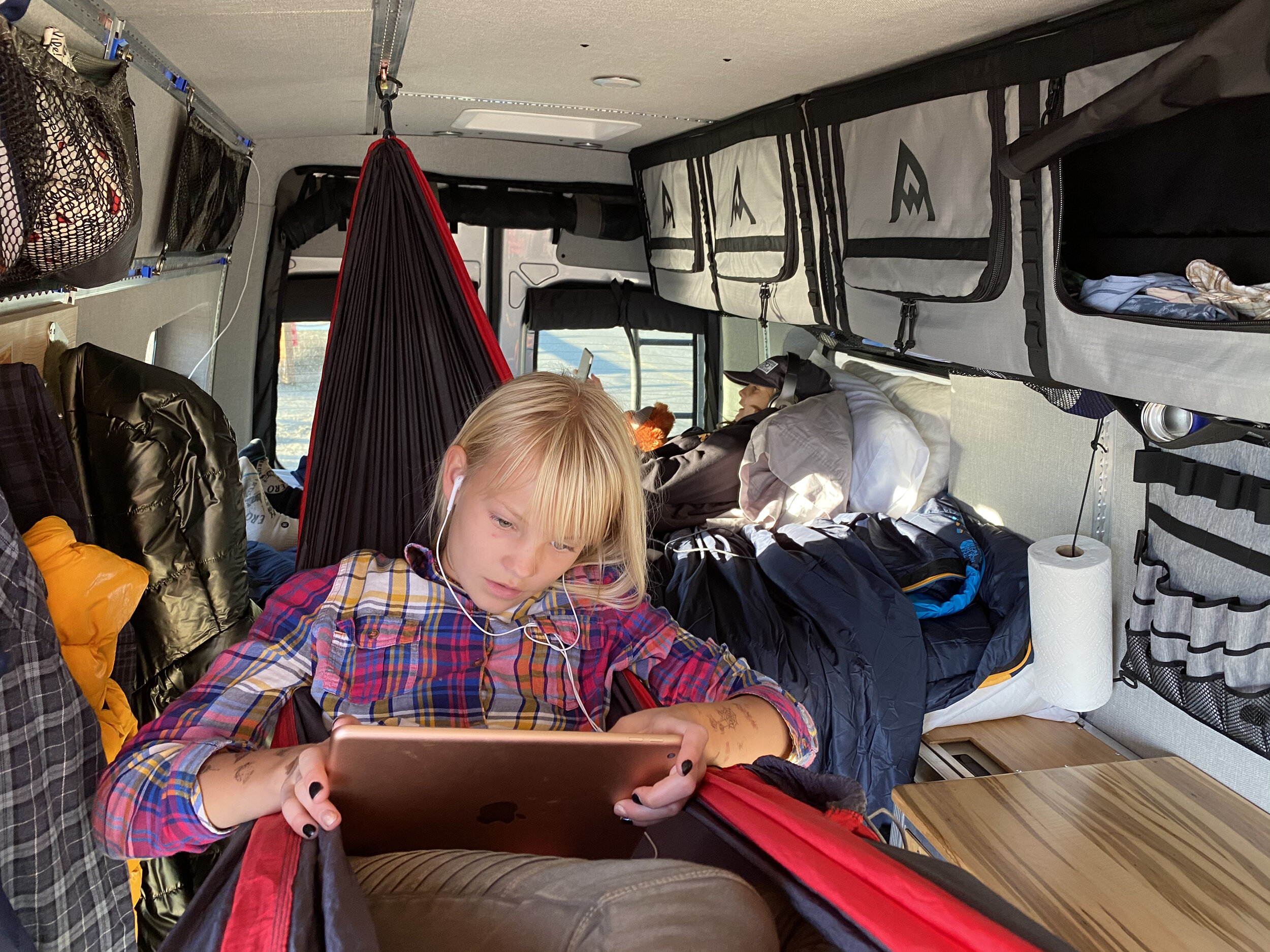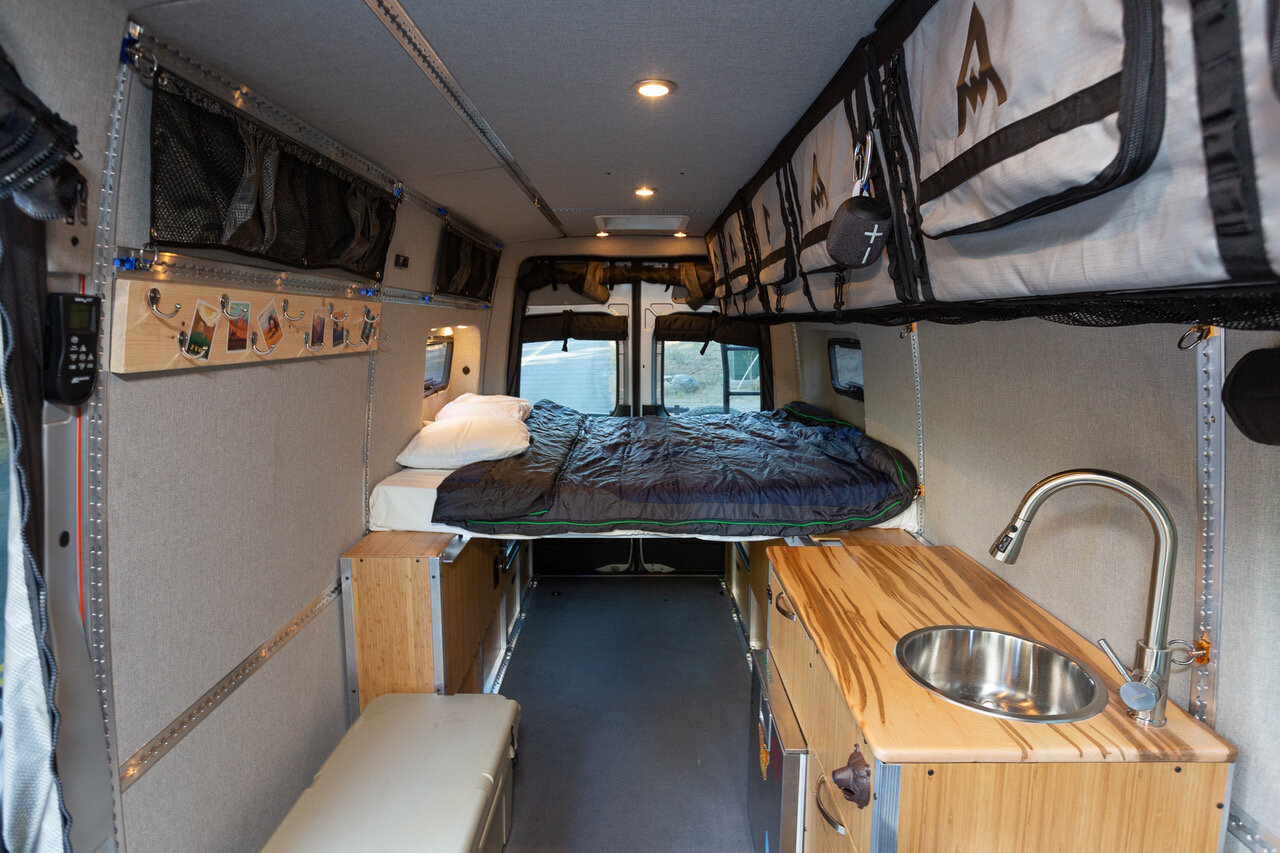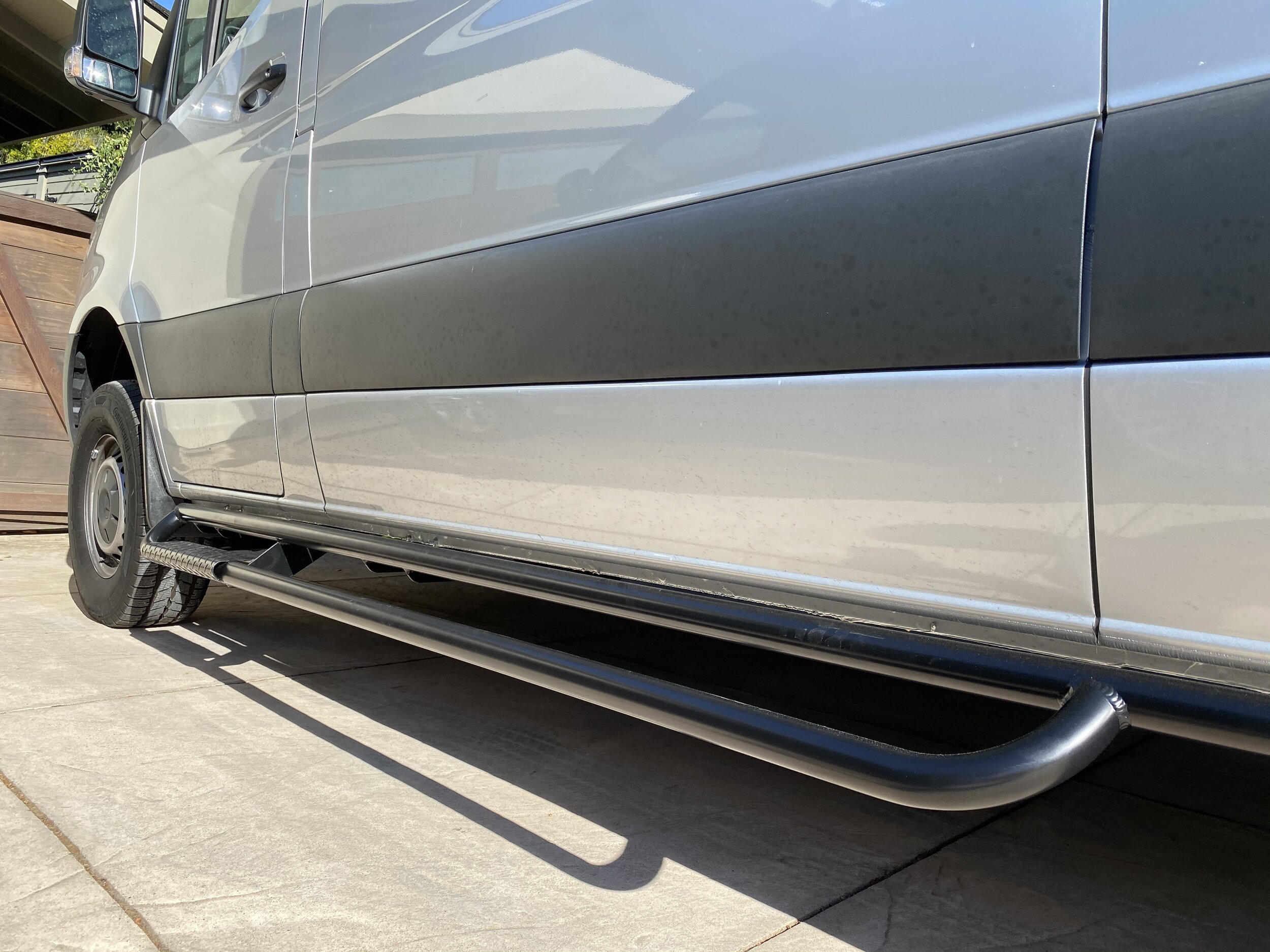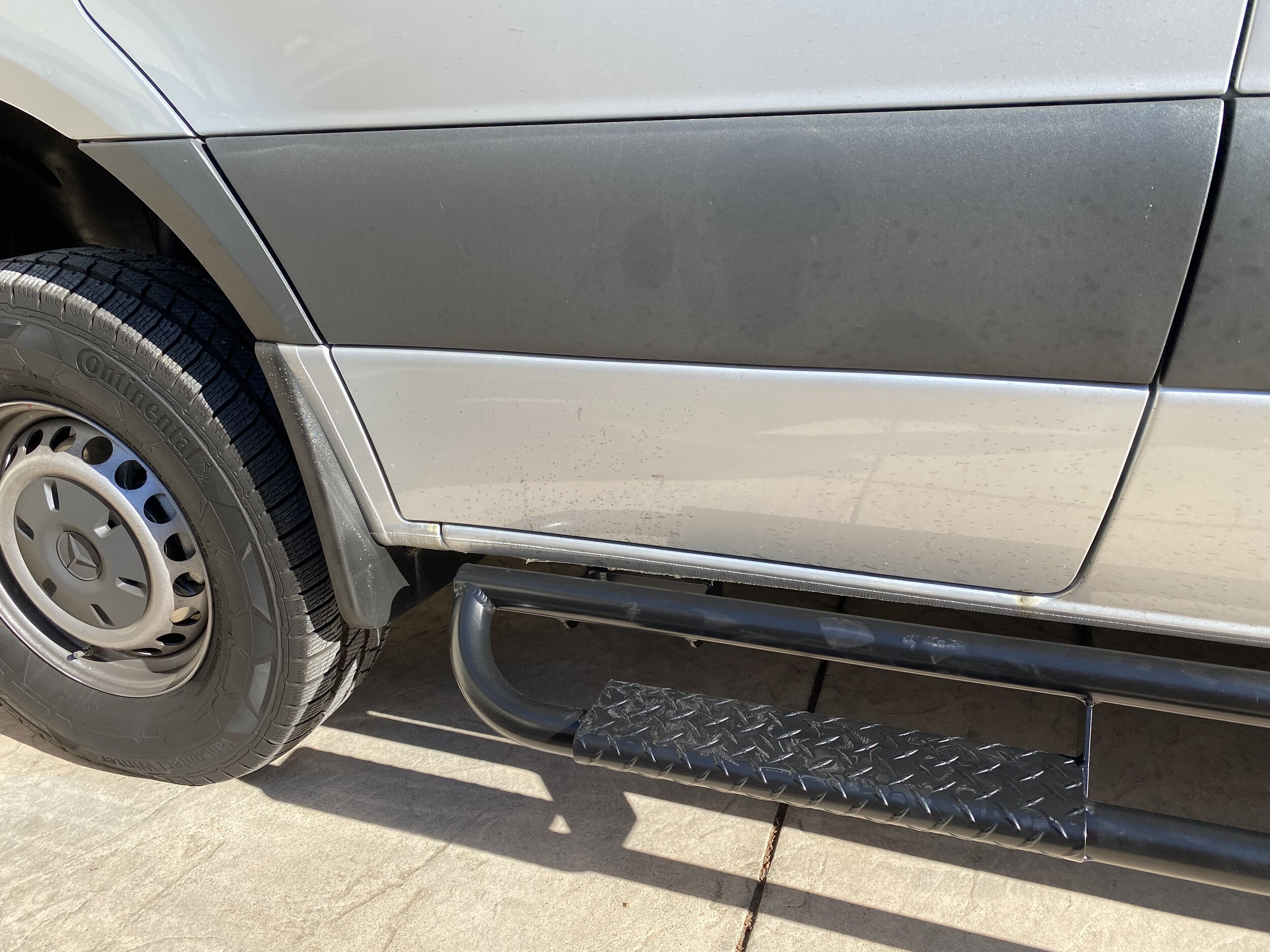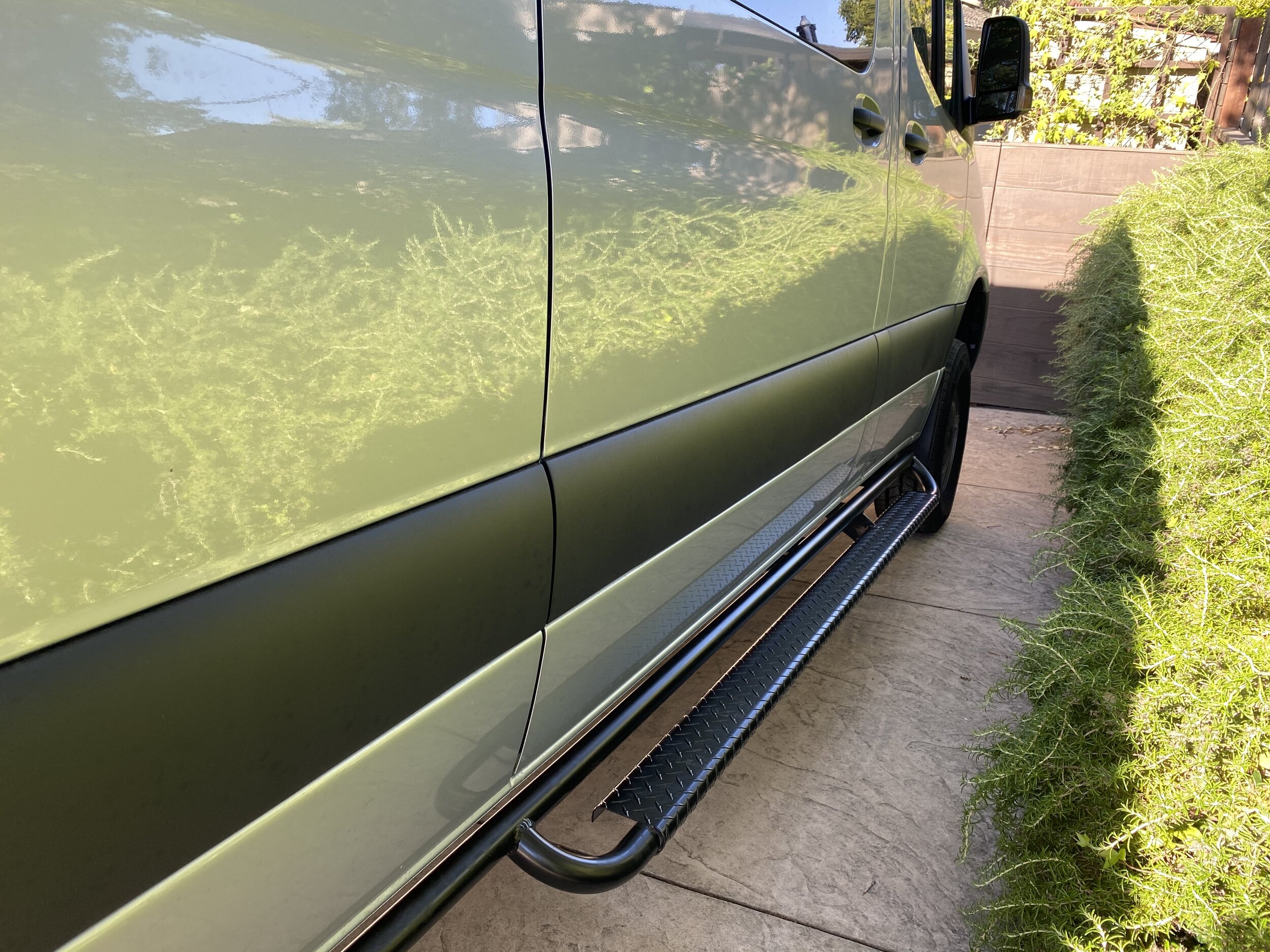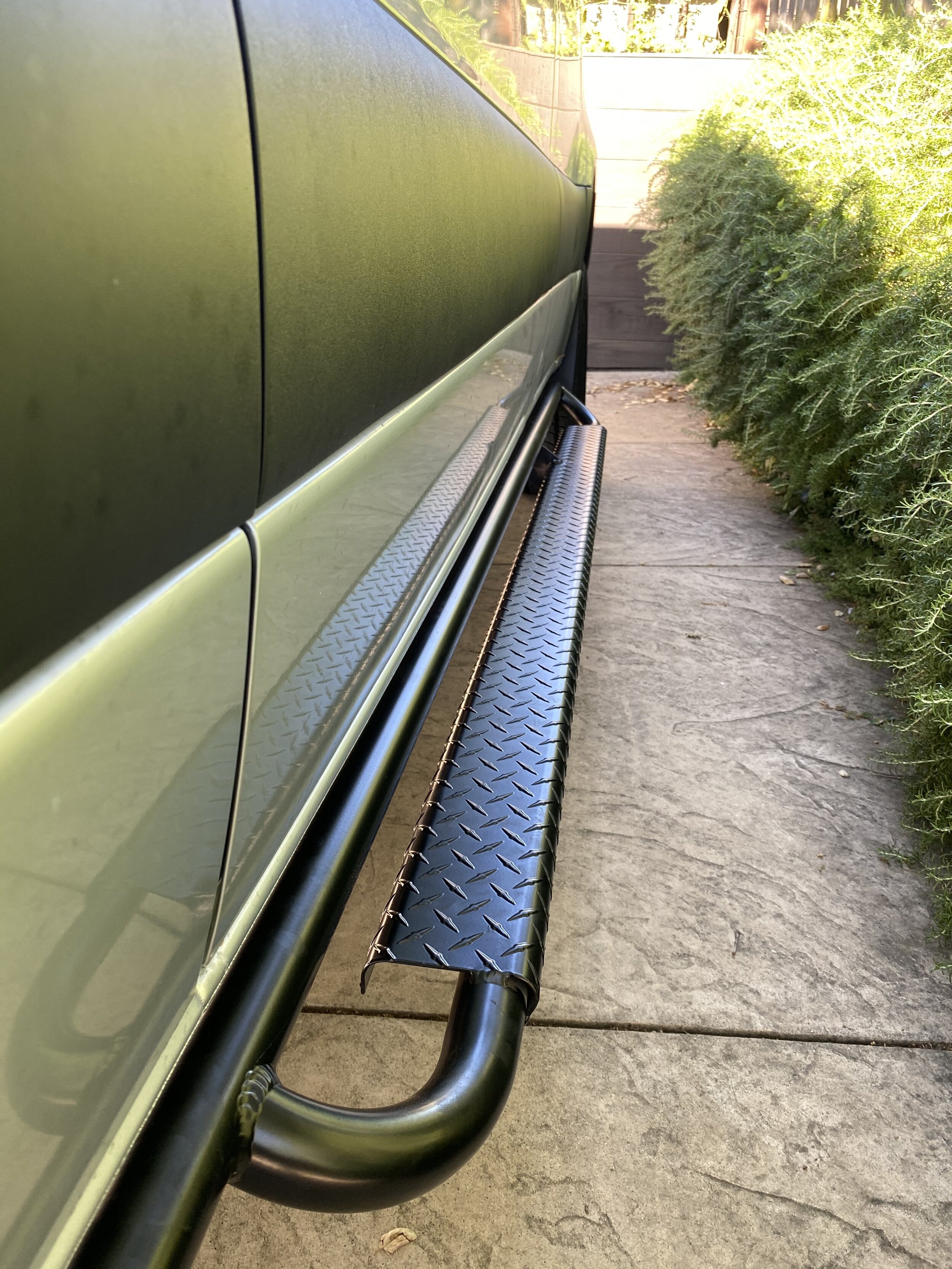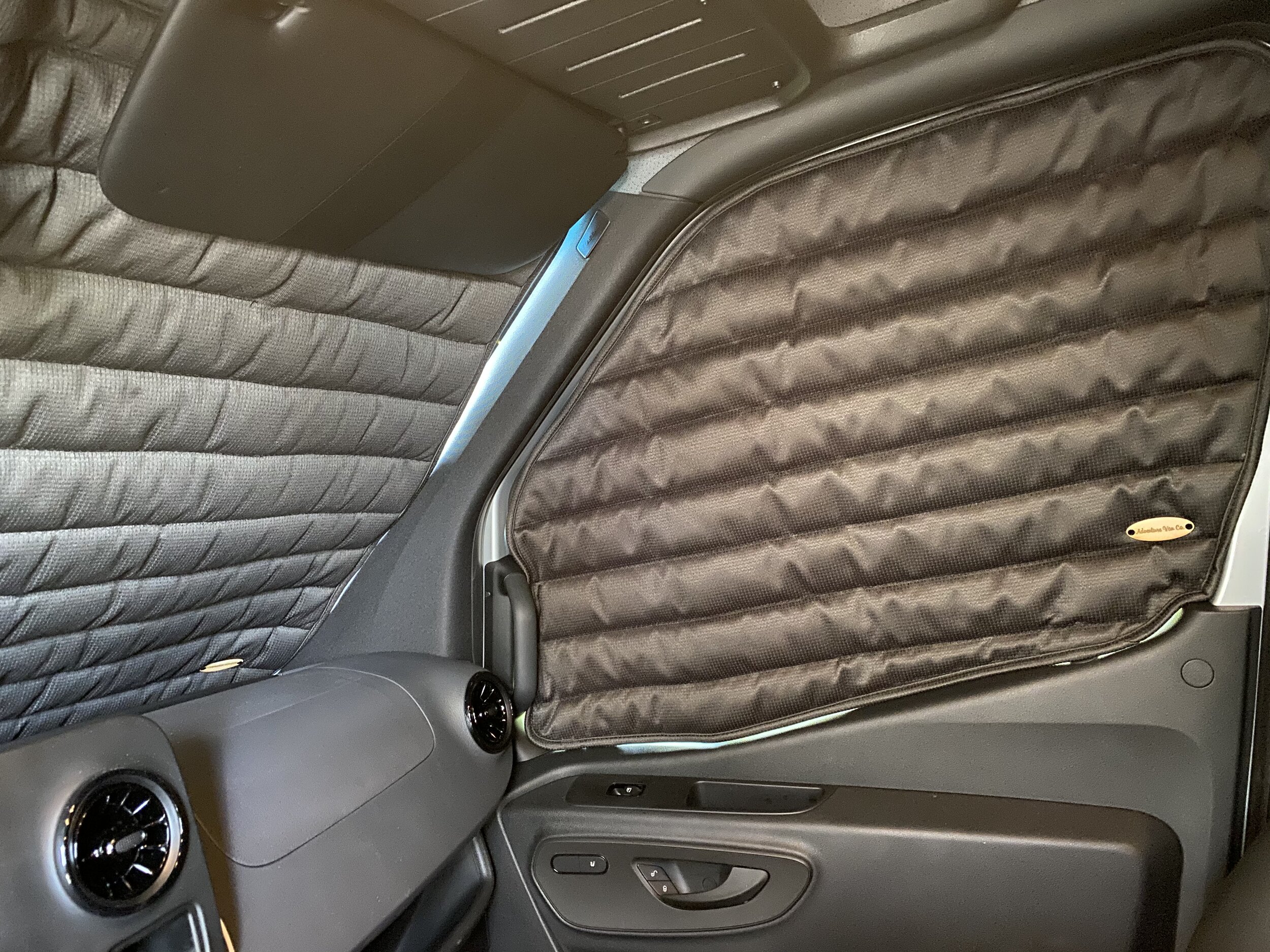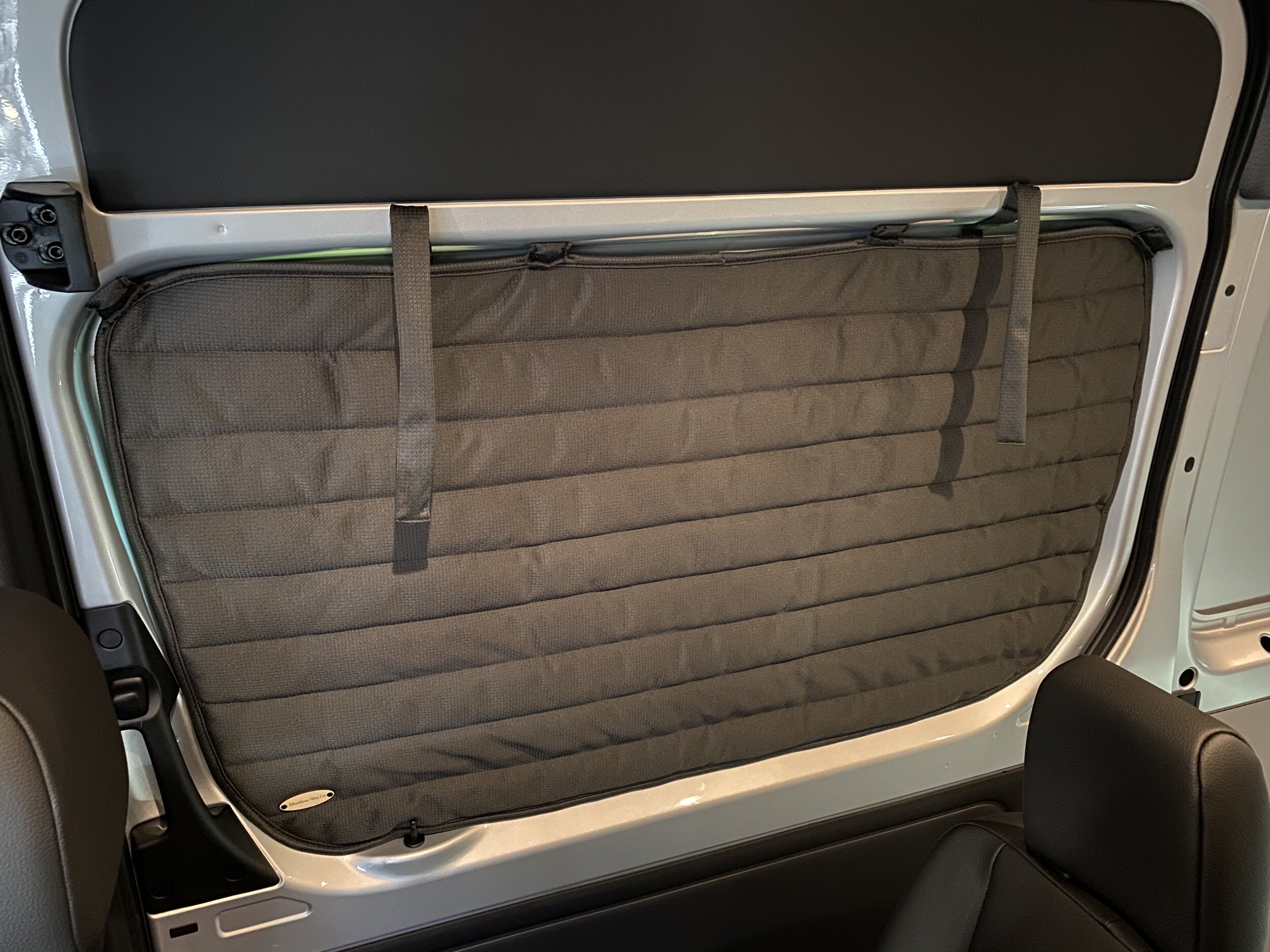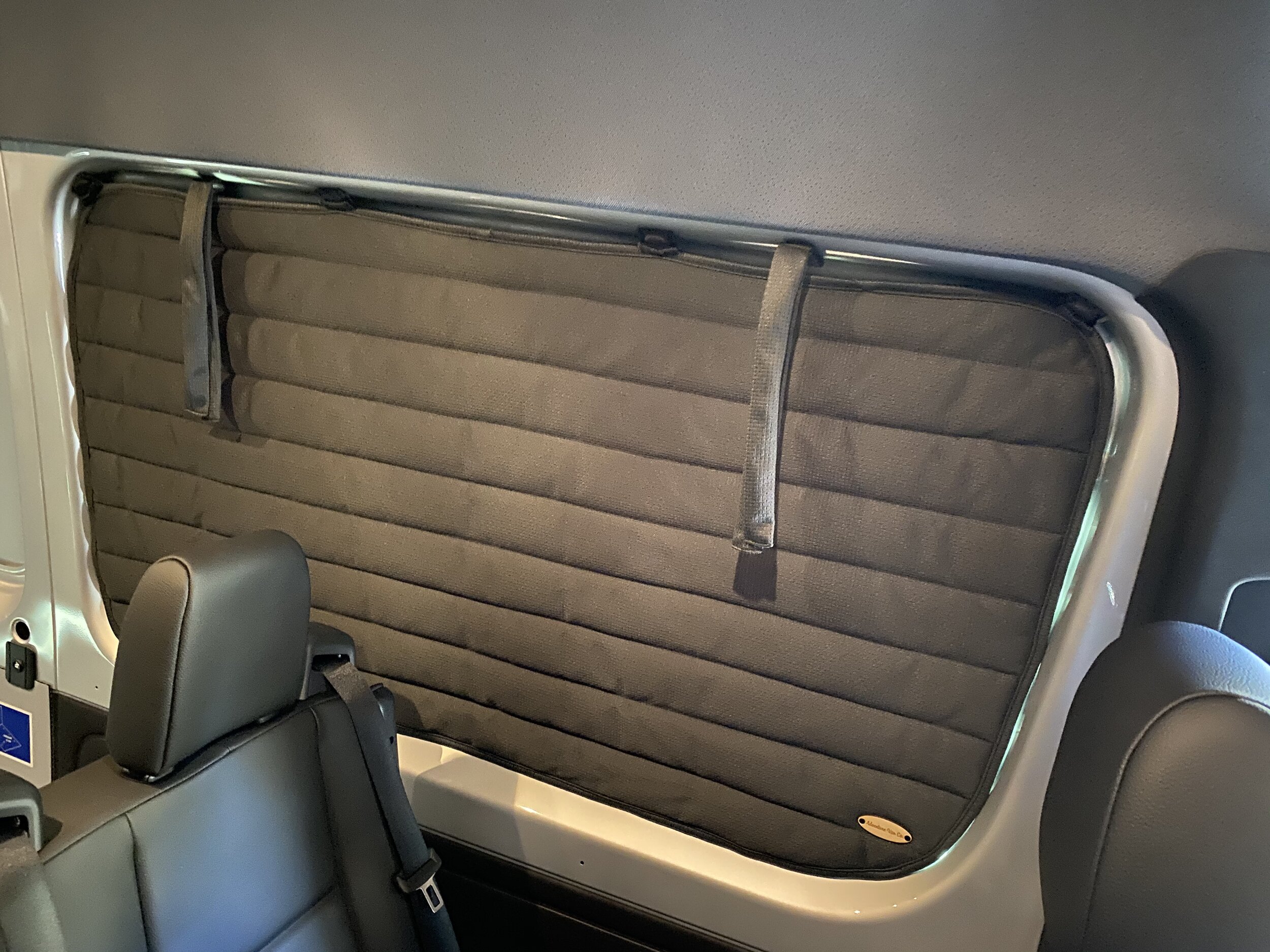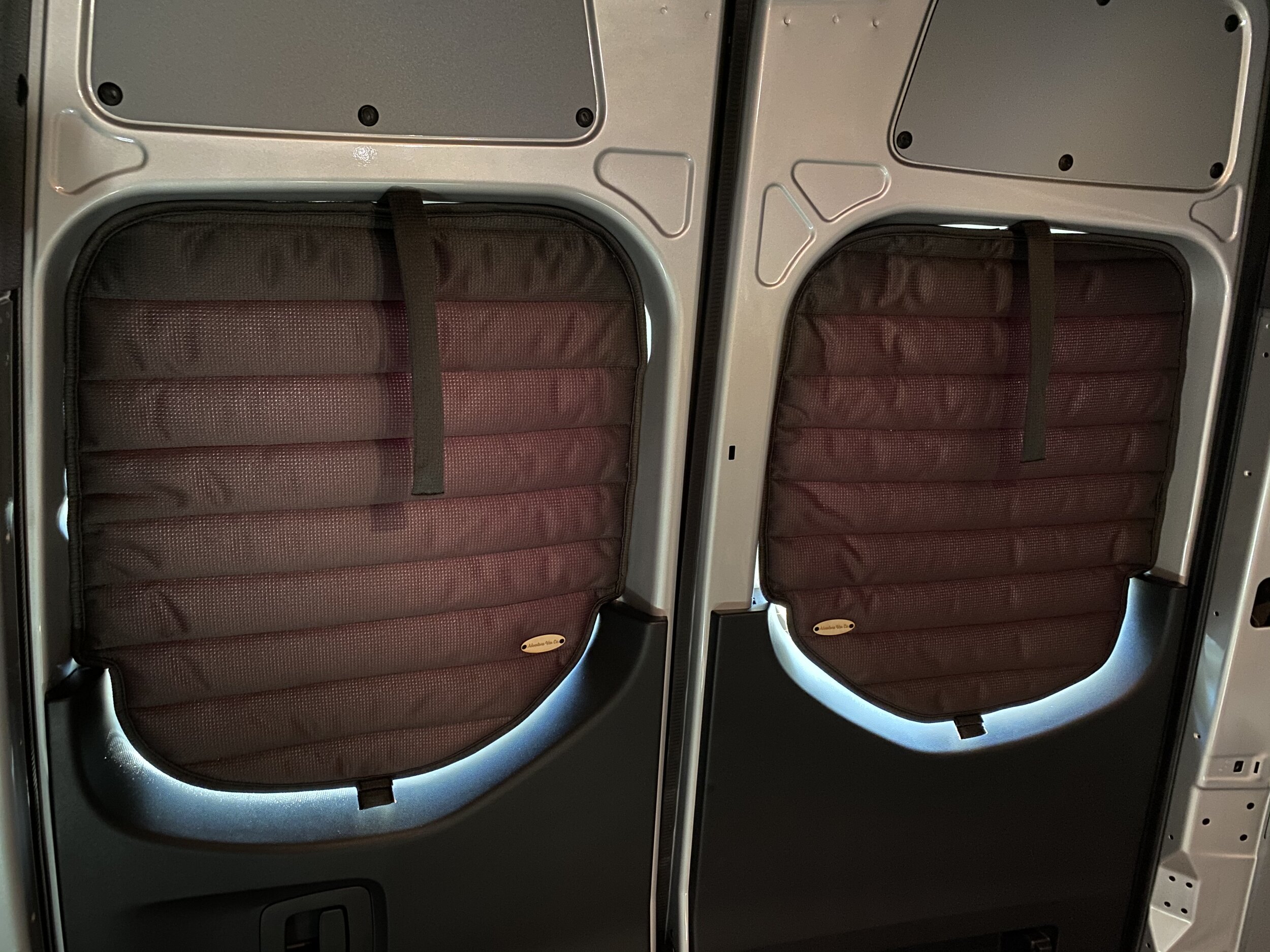A winch is not needed for most van owners. They look cool but honestly most people who own a van say something like, “I put it on but I hope to never use it”. When I talk to van owners most never take their van off-road to the degree where they risk getting stuck. Because of that a winch is really not needed for 95% of van owners. We however do like to go miles off-road with the van and we have already had a couple situations where we almost got stuck. We also have aspirations to take out the van plus Defender on trips off-road where the van acts as basecamp and the Defender acts as our runaround. So I feel it is important to be able to self rescue…..thus time to get a winch.
Most people put on a big metal bumper in the front and then mount their winch to that. There are some great ones out there but I don’t really see the point. To me they seem to be mostly about the looks. Also some of these add a lot of weight and disable or complicate the use of MB’s various sensors (parking, lane departure, active cruise control). Also some of these bumpers cost over $2k….for a look. We decided to go with a winch mount from Van Compass. This is a steel mount that you install under the MB plastic bumper that gives the front end added strength to support a winch plus it gives you two recovery points. It doesn’t change the look of the van too much, it is likely stronger than most of the metal bumpers out there, it does not impact ANY of the MB sensors, and it cost less than half of some of the metal bumpers.
We then decided to go with a Warn VR EVO 12-s winch. This is a 12k synthetic rope winch with a lower AMP draw. There are a few other 12k winches from Warn that have a bit more power and features but for the money we felt the VR EVO 12-s was a good fit for our van. Let’s be real, even with all the work we have done to this van it can’t get into too gnarly of a situation as it is just too heavy, too under powered, and too long to do real off-roading.
One last thing. If you plan on adding a winch to your Sprinter go ahead and buy extra long power cables as the ones that come with winches are WAY TOO SHORT. You will need 12-14 feet if you plan on wiring the winch all the way back to the main van battery in the cabin under the driver floor. You should wire the winch directly to the battery without any couplers and you should get large gauge wires (I used 2 gauge but the larger the better). Some people will put a terminal block in the engine bay and run the winch to that. The problem with this is that most terminal blocks are rated to 200 AMPs and a winch can pull up to 400 AMPs. Another thing you will have to deal with is that Sprinters don’t have a dedicated attachment bolt on the negative to connect your cable. What I did was modify the OEM negative cable so that I could sandwich the winch cable between the main mount and bolt. This requires some dremeling but its easy.
Public Service Announcement…..if you plan on owning a winch also plan on taking a recovery class. Don’t think it is as simple as knowing how to turn on the winch. There is some knowledge, skill, and practice needed in order to do a proper and safe recovery. I would also reconsider simply taking a recovery course from your local off-road club. While that might be totally fine it is unclear how knowledgable the club members really are since they are most likely not a professional recovery crew. If you are in the Bay Area consider taking a class from The Driving Company who is a professional organization that trains fire and police departments as well as search and rescue crews on proper off-roading and recovery techniques.






